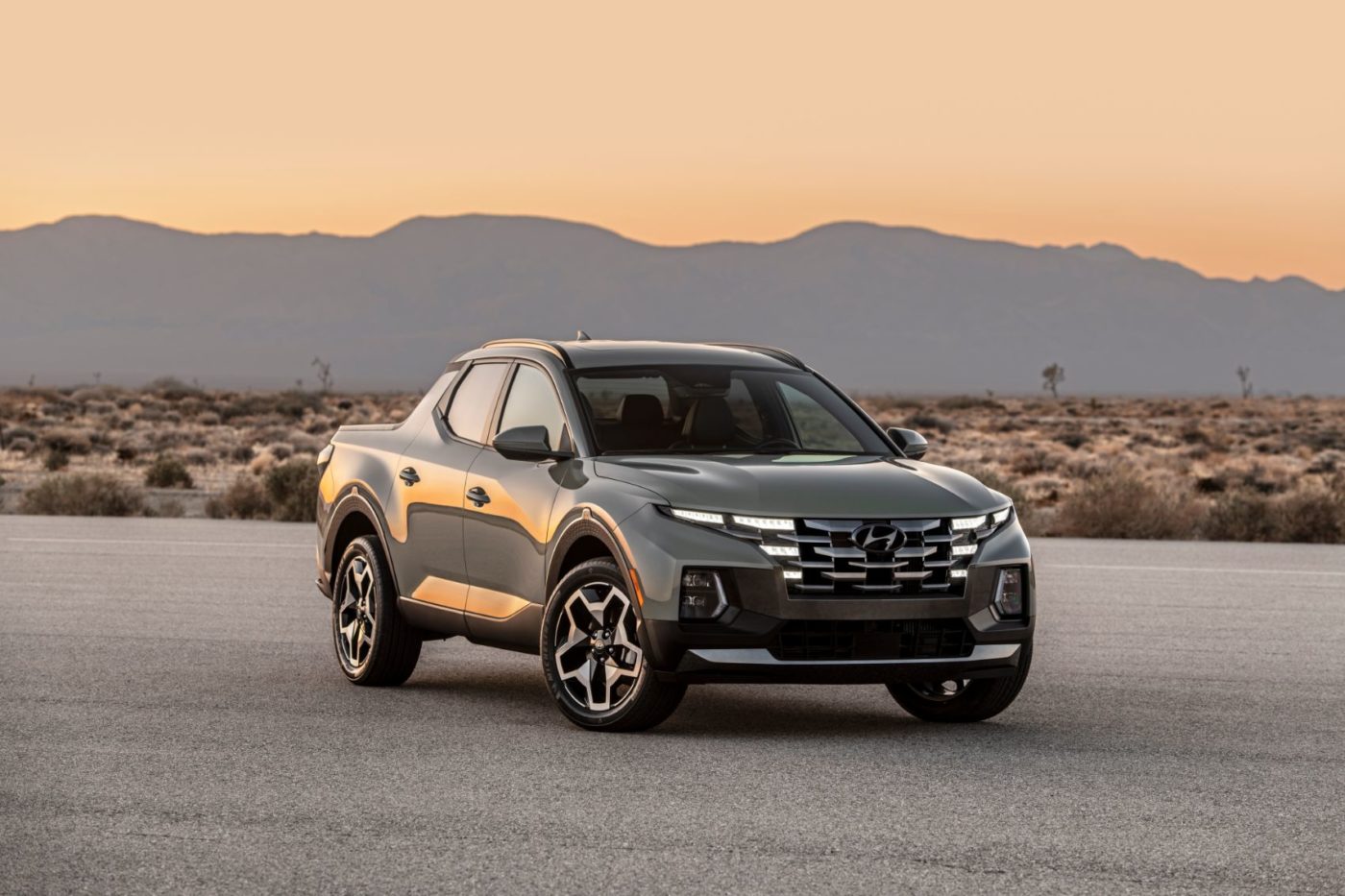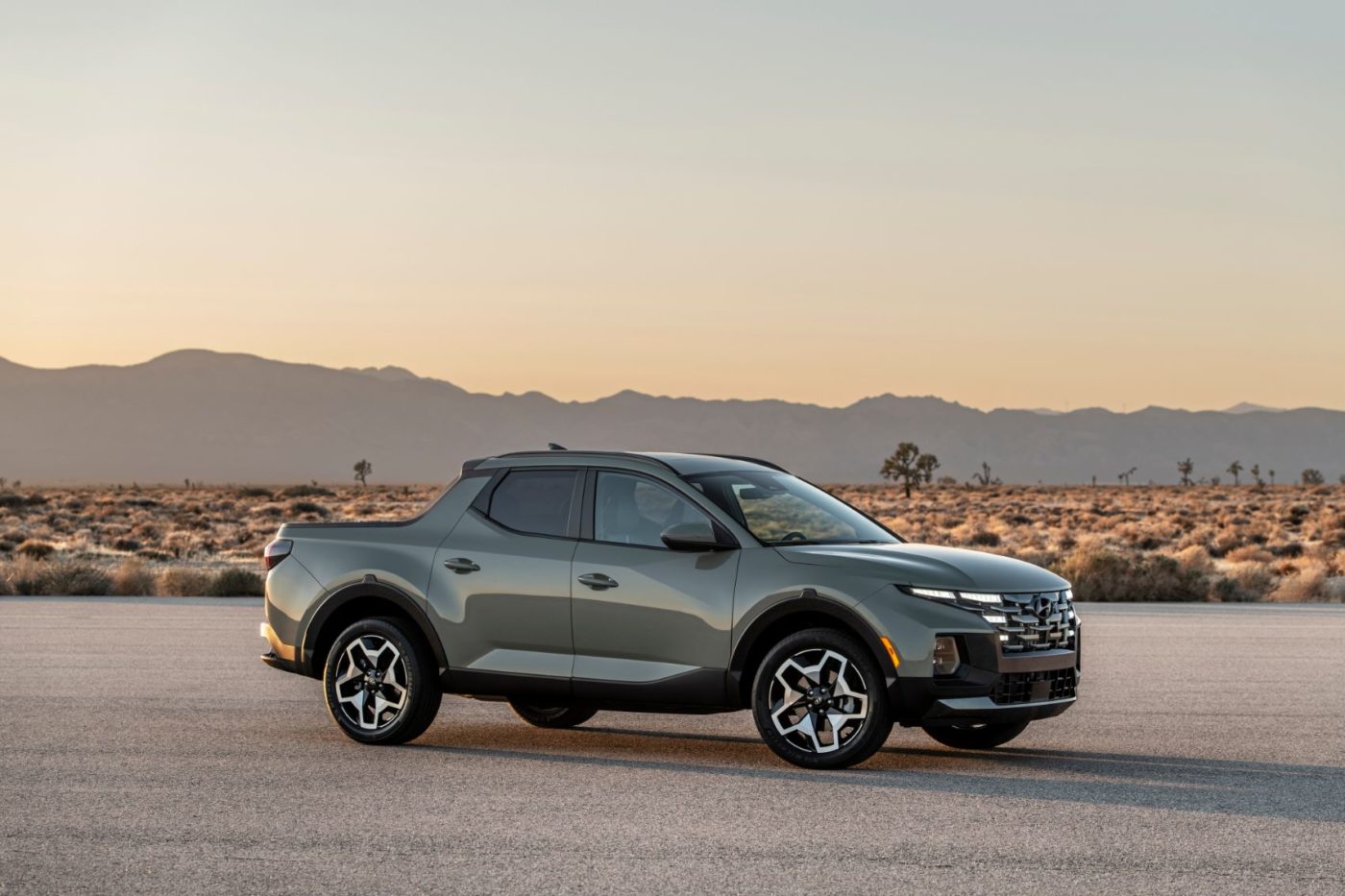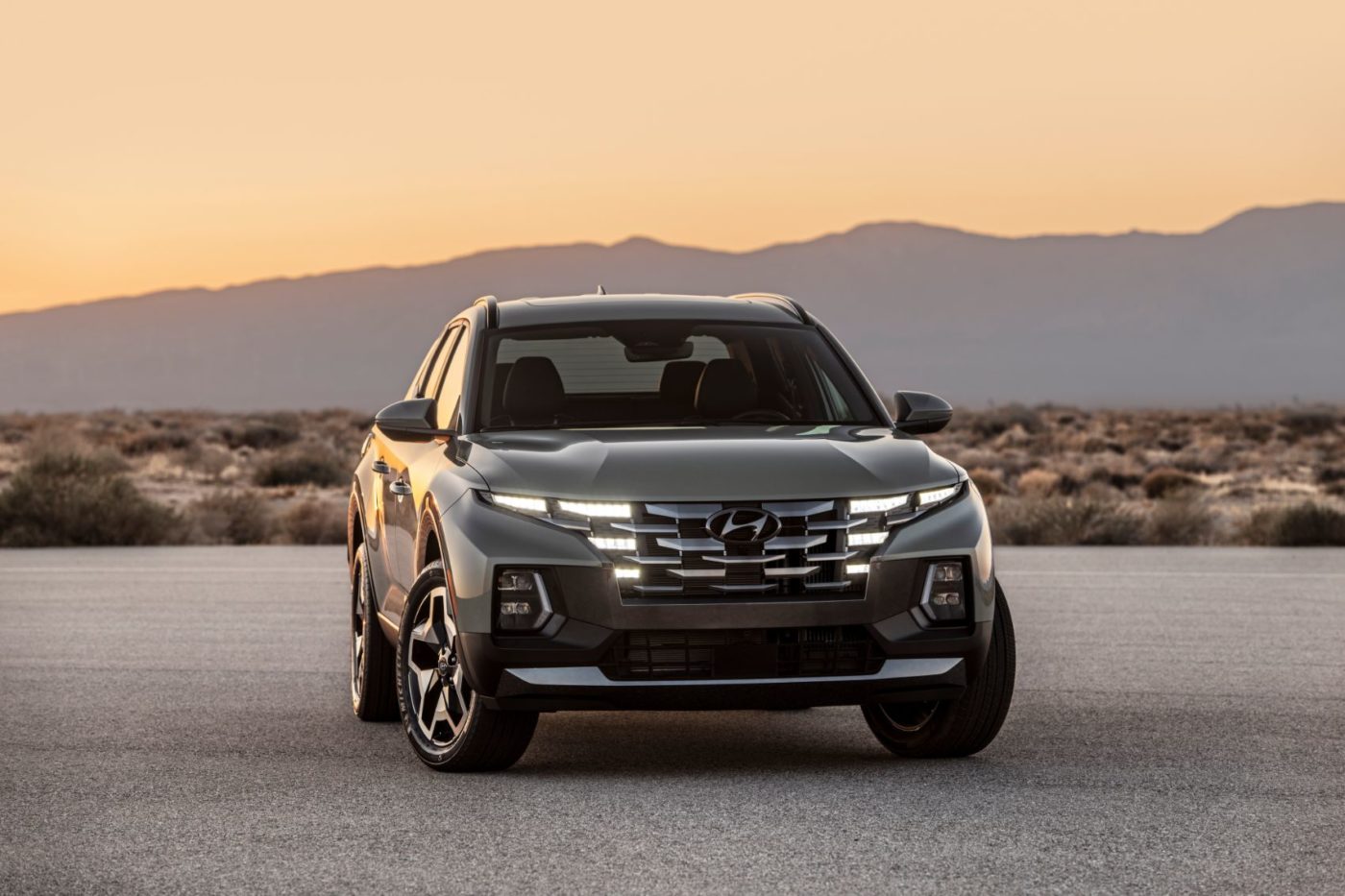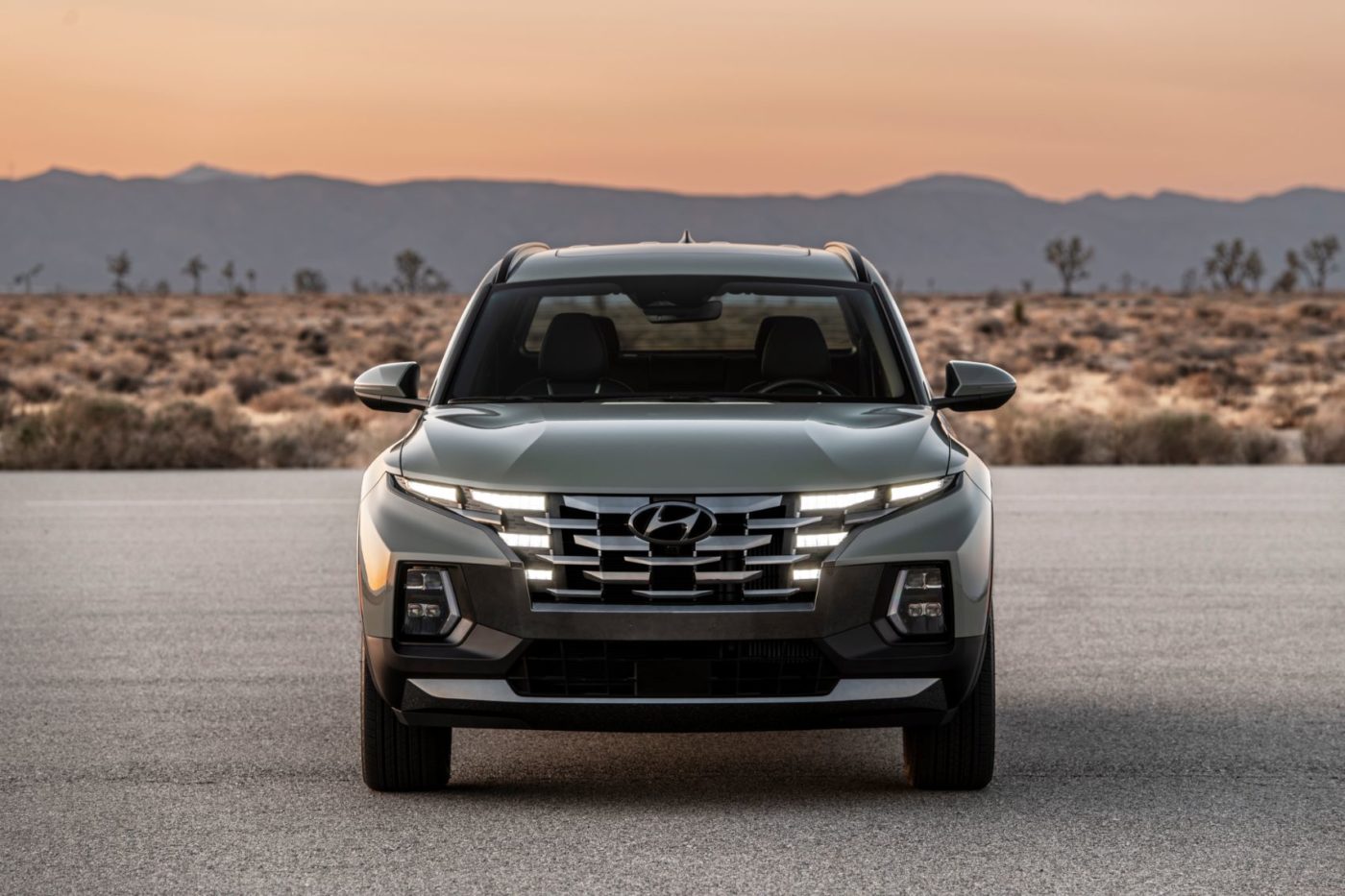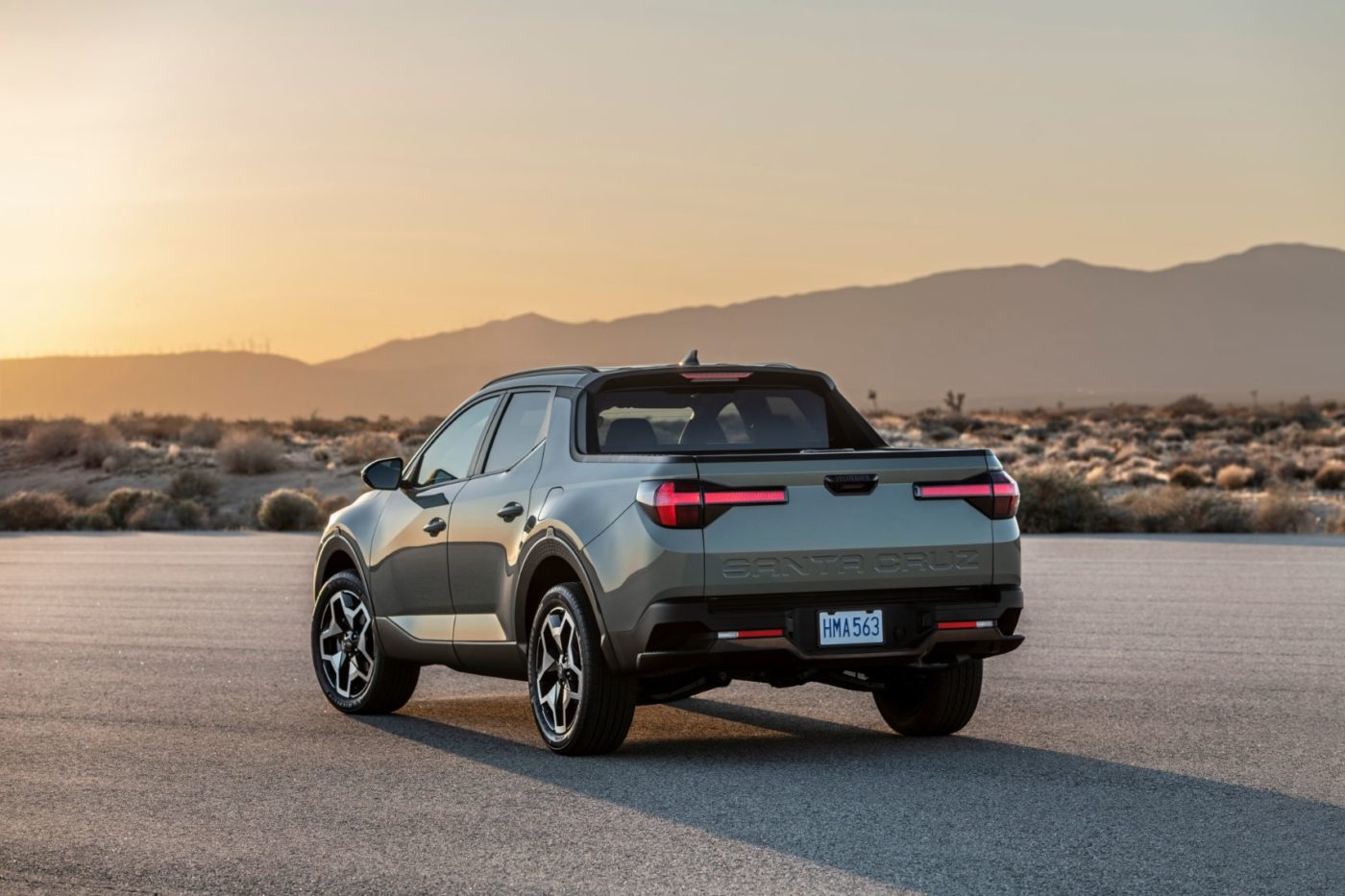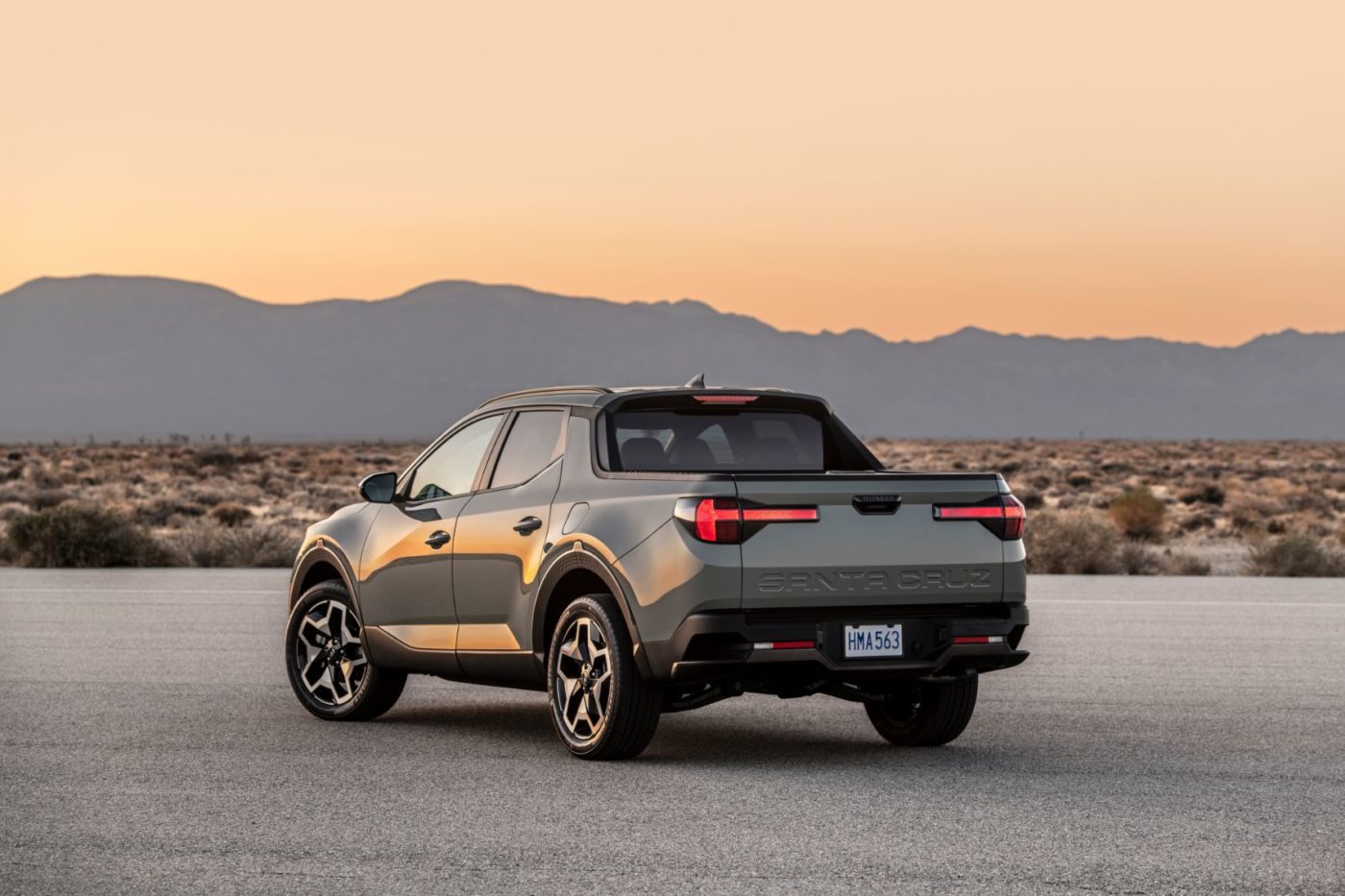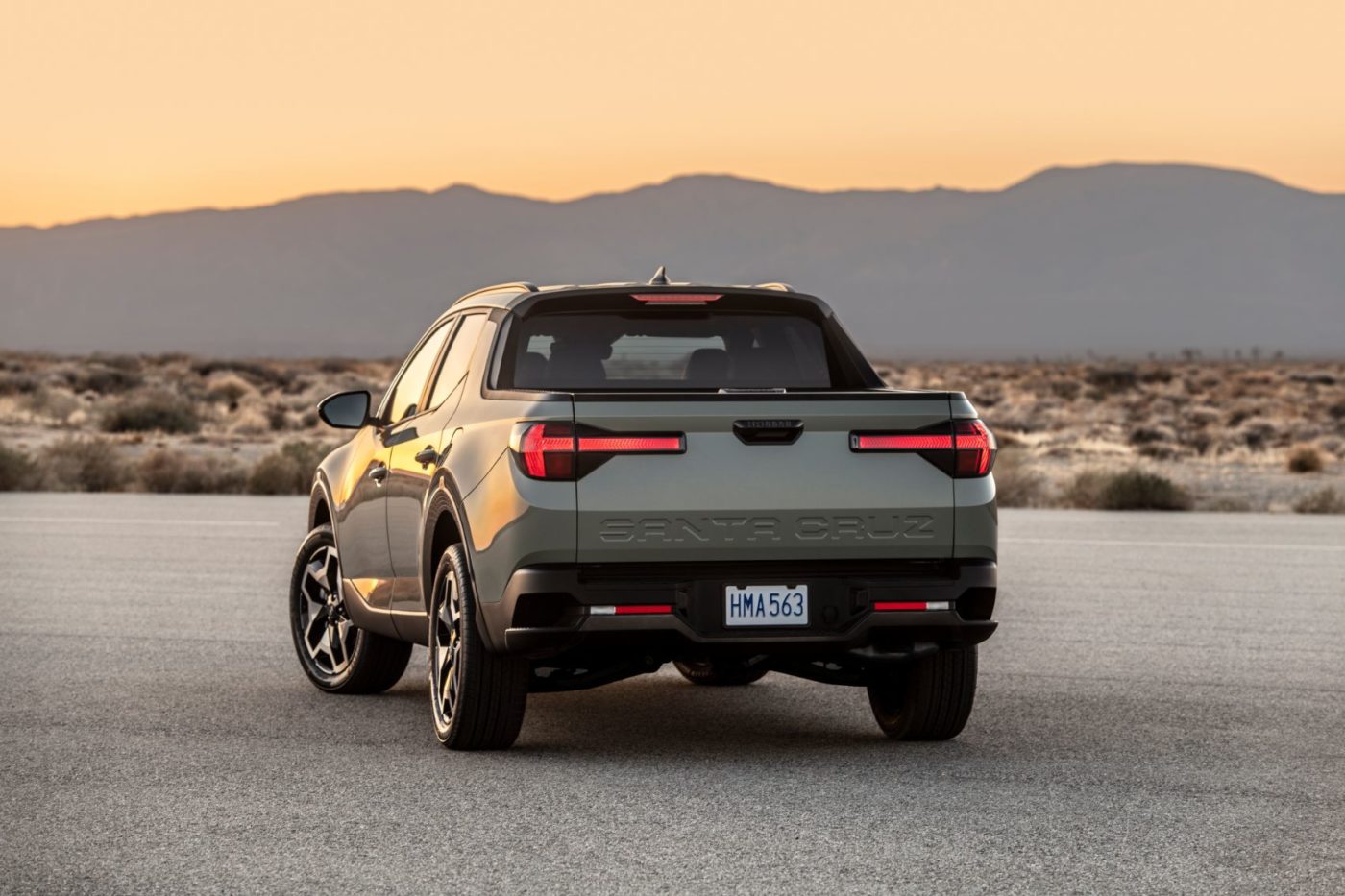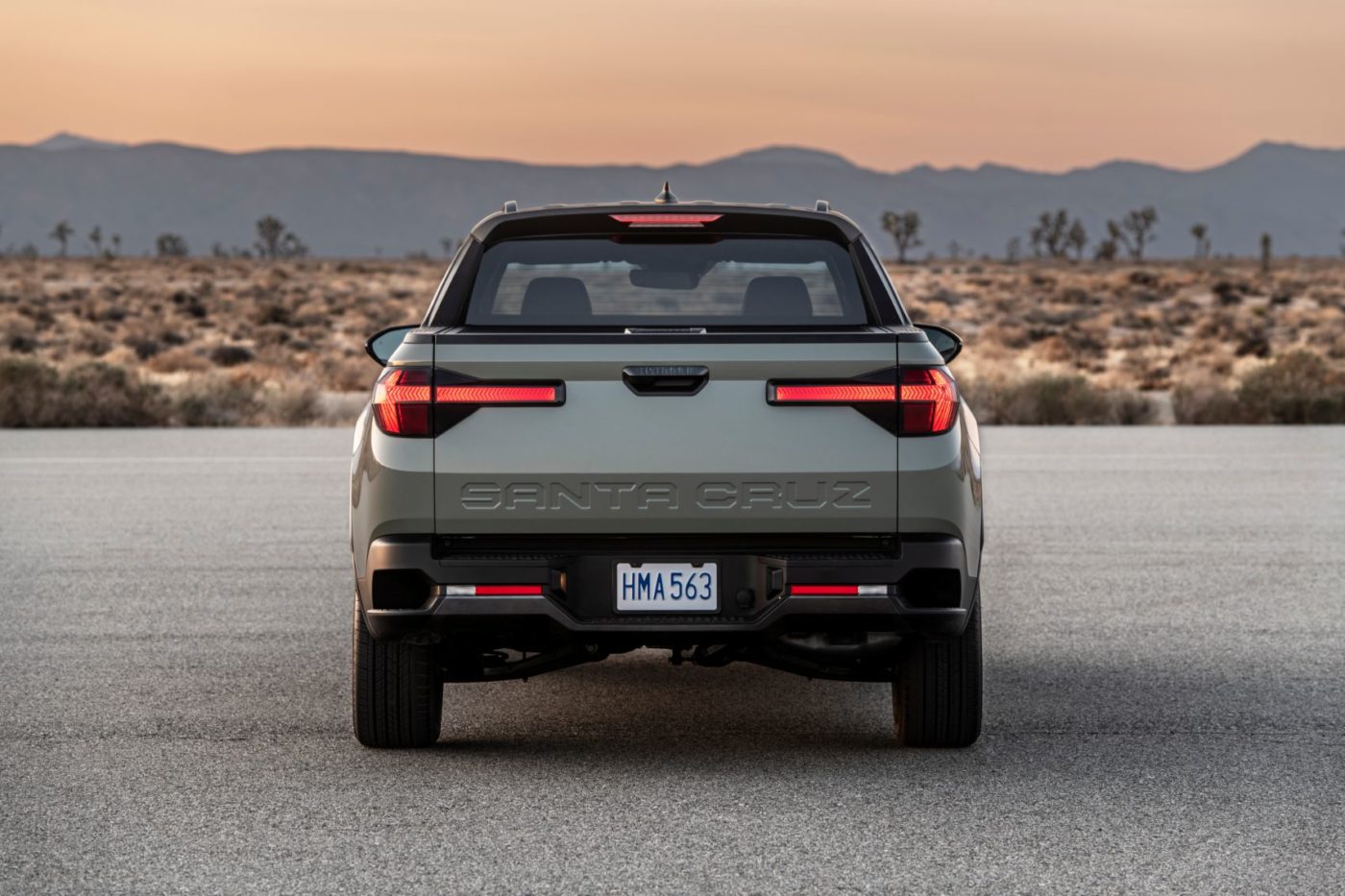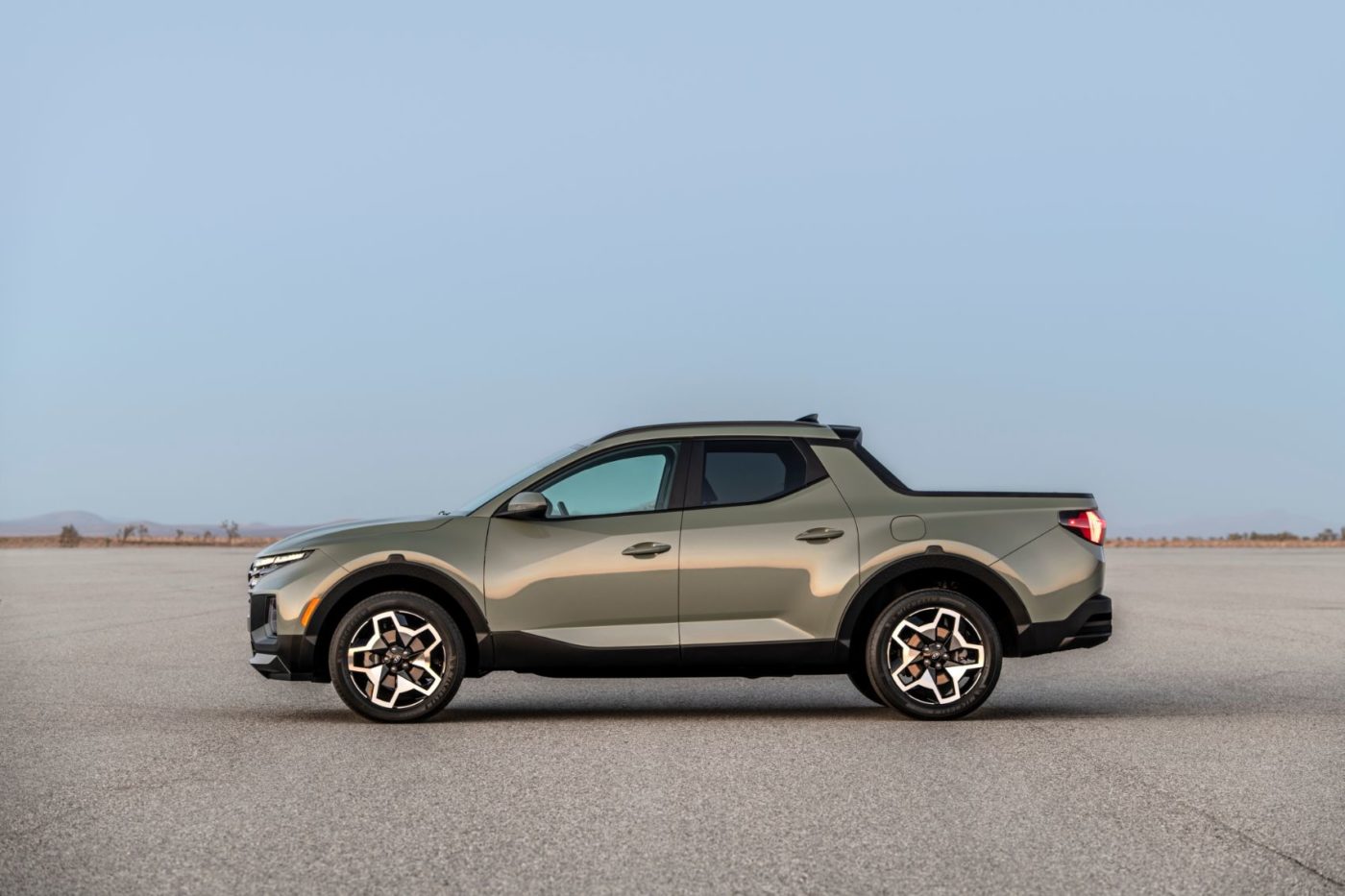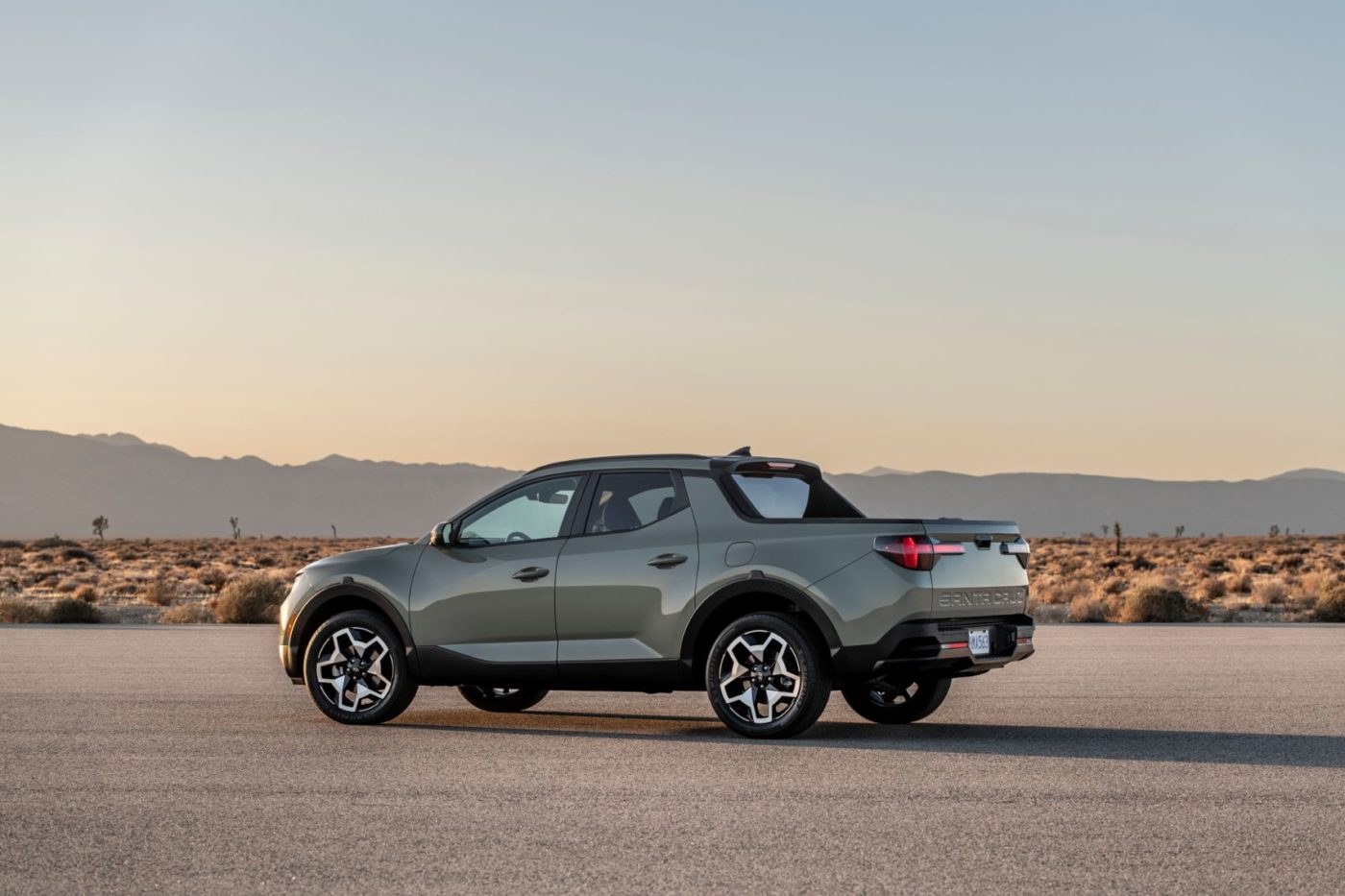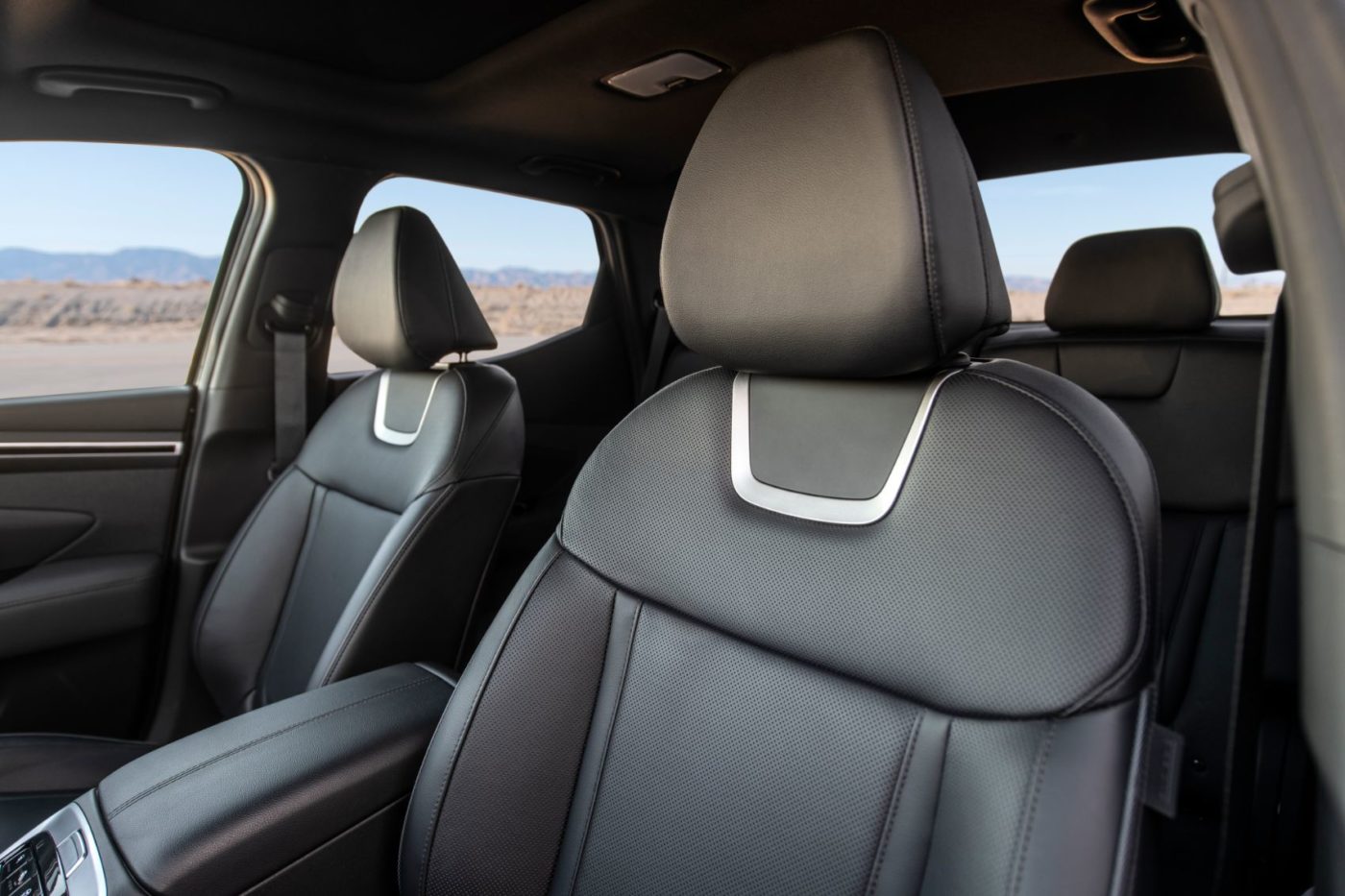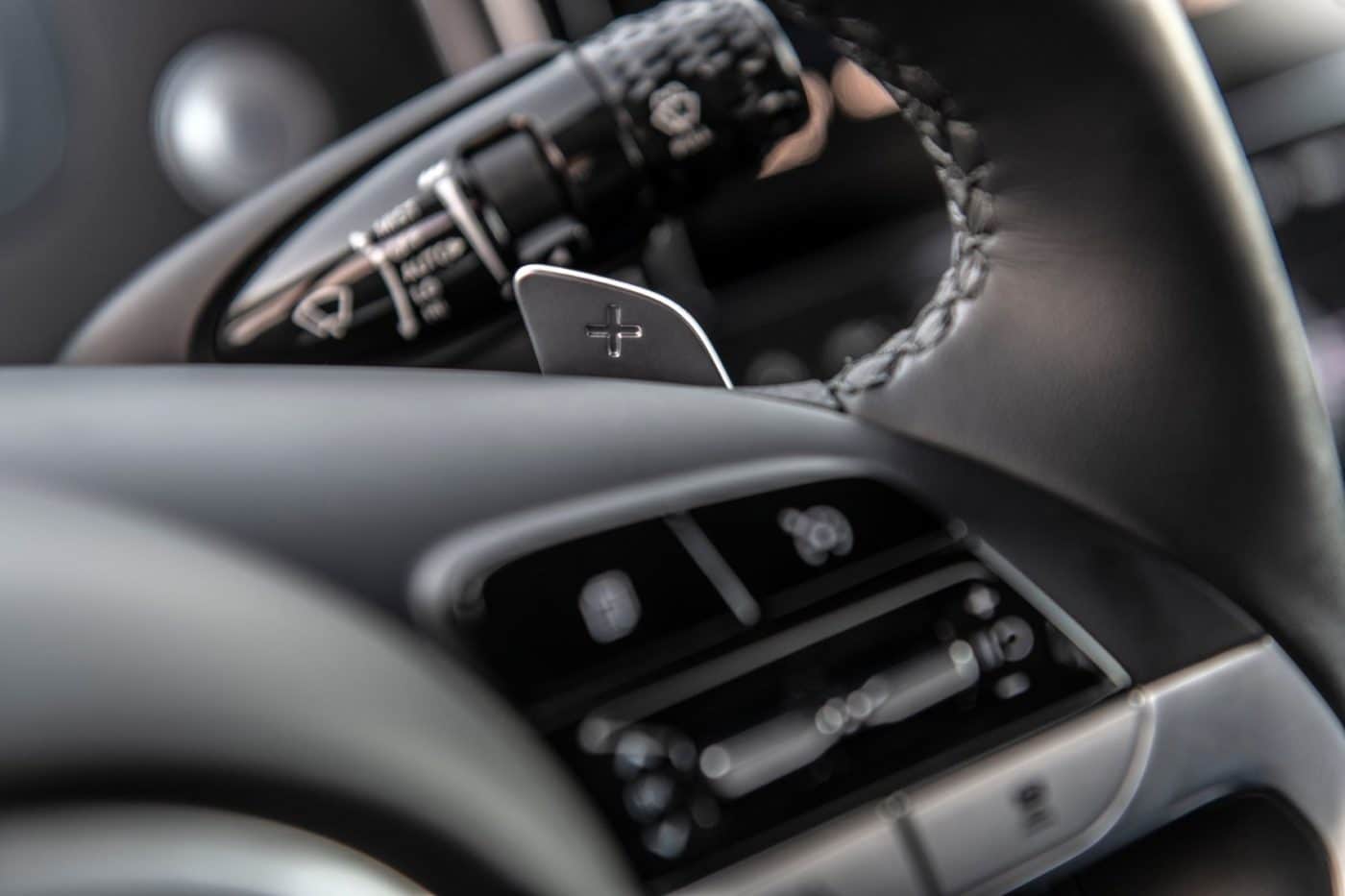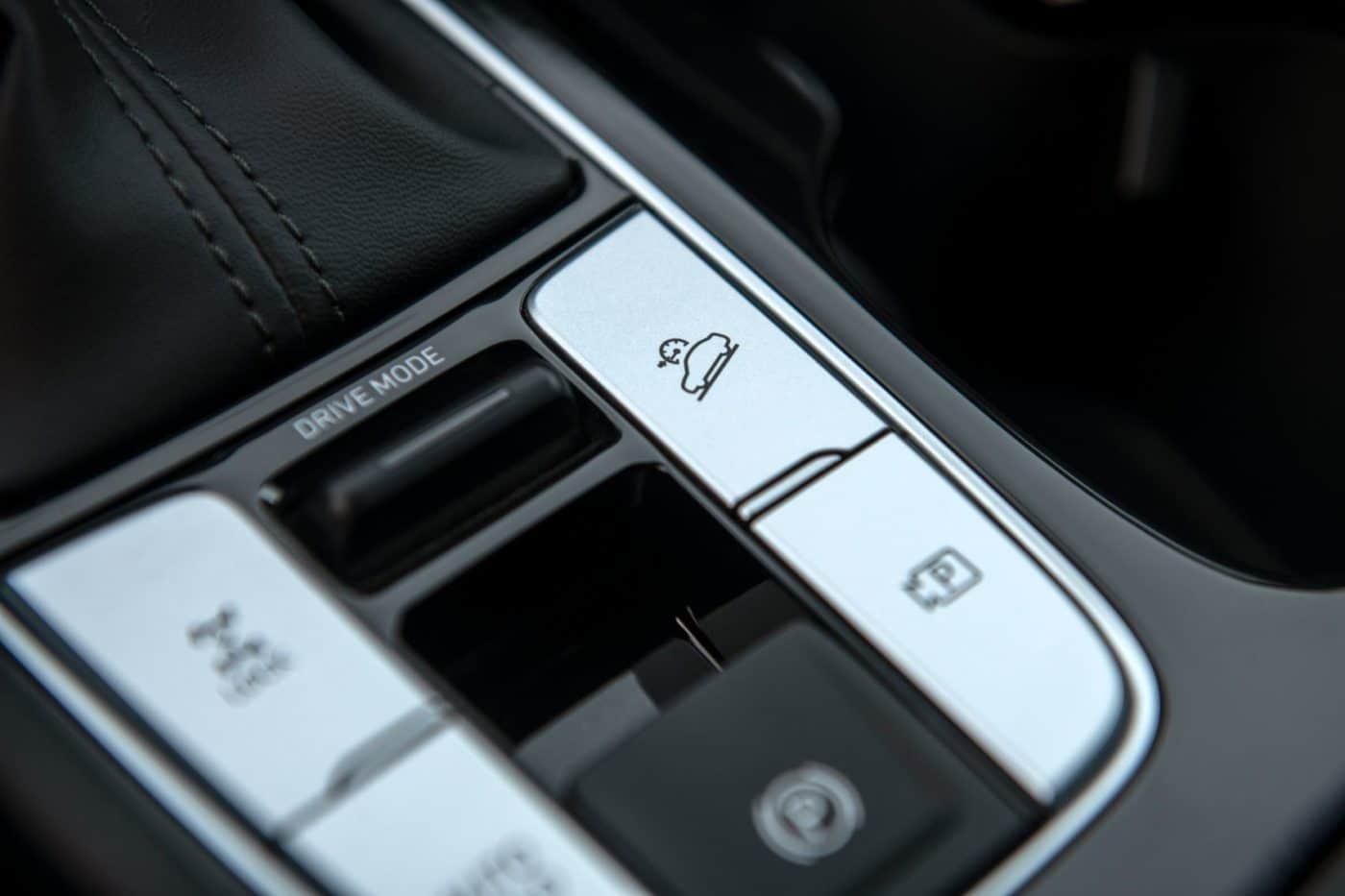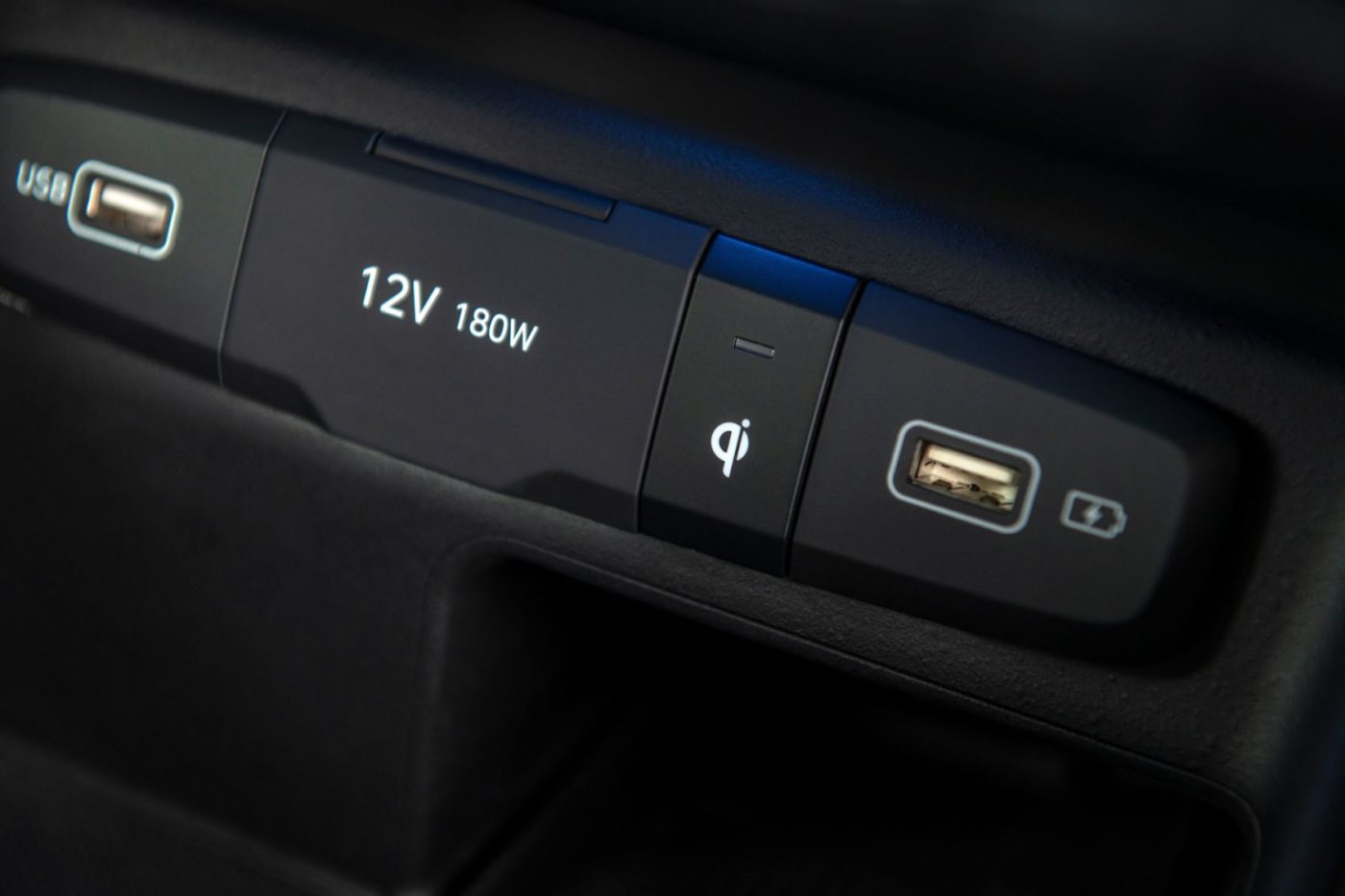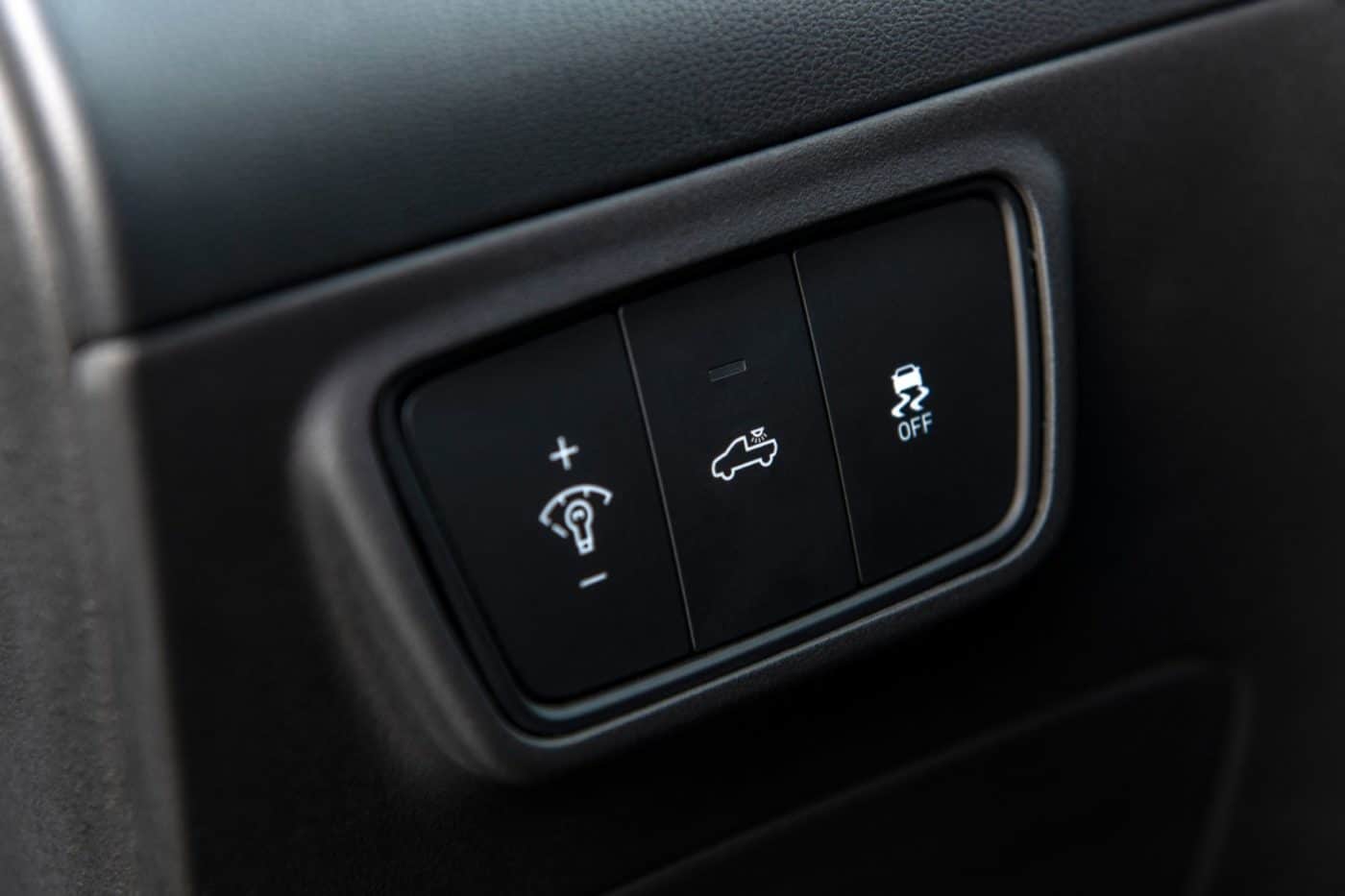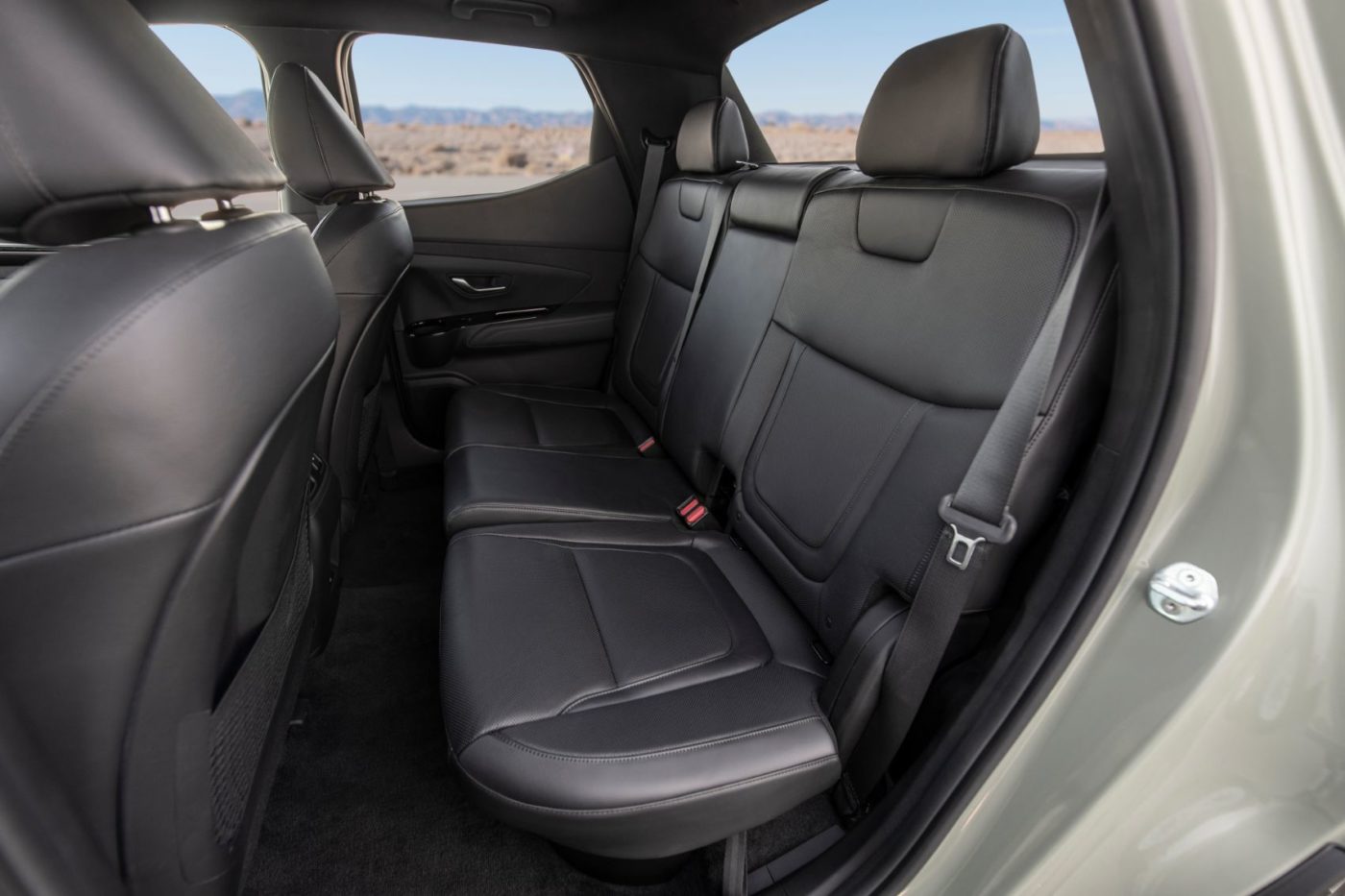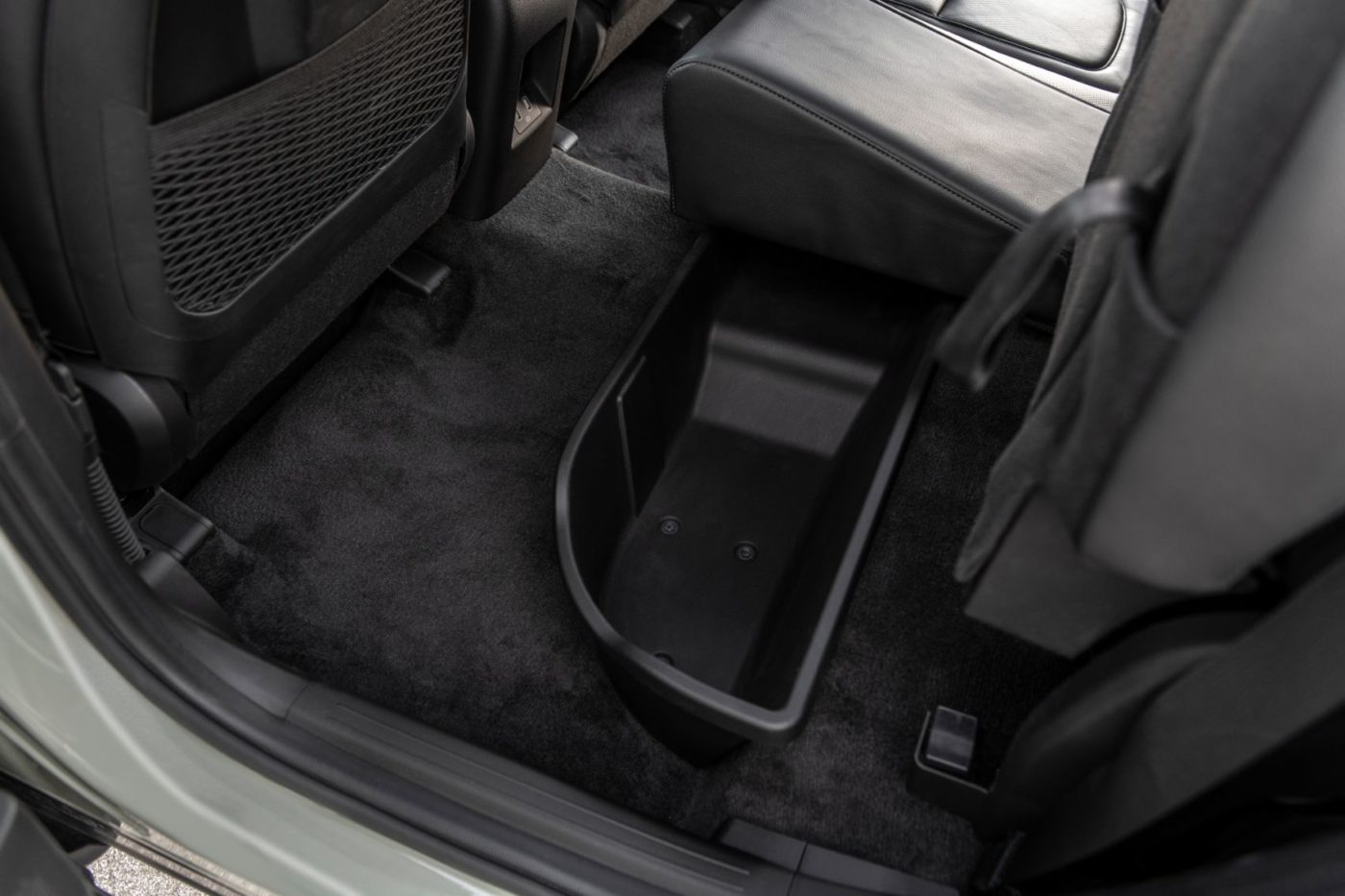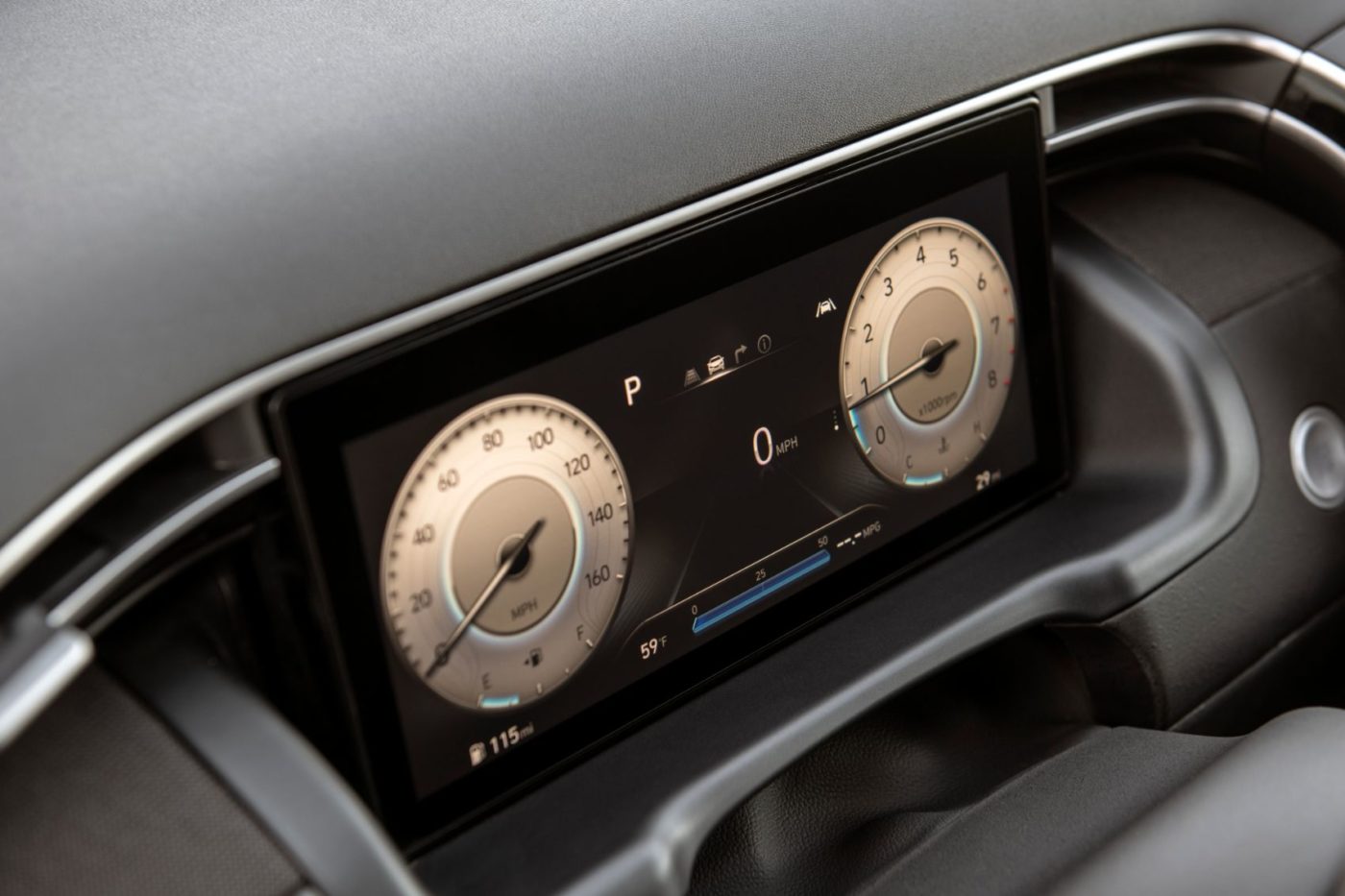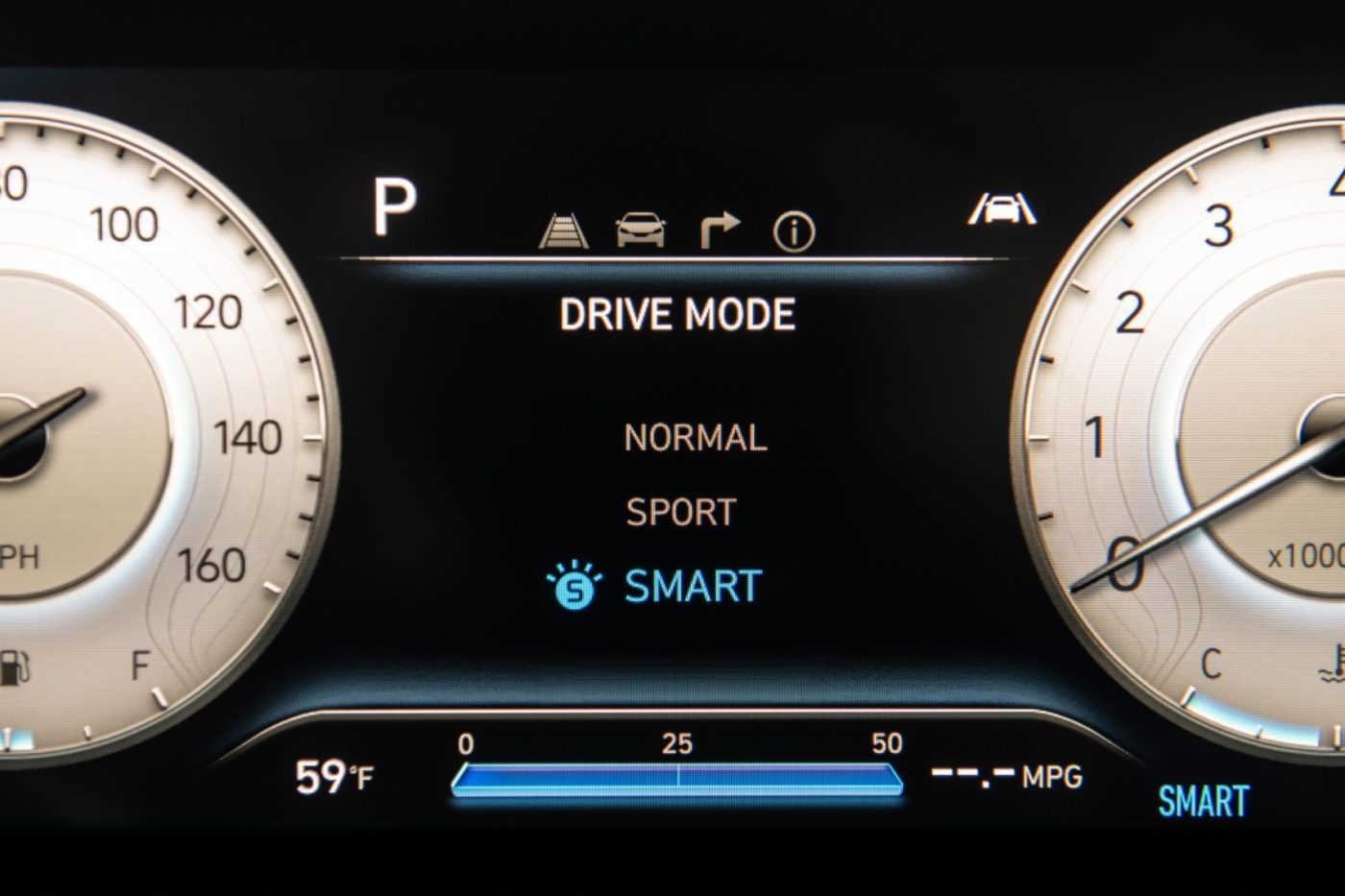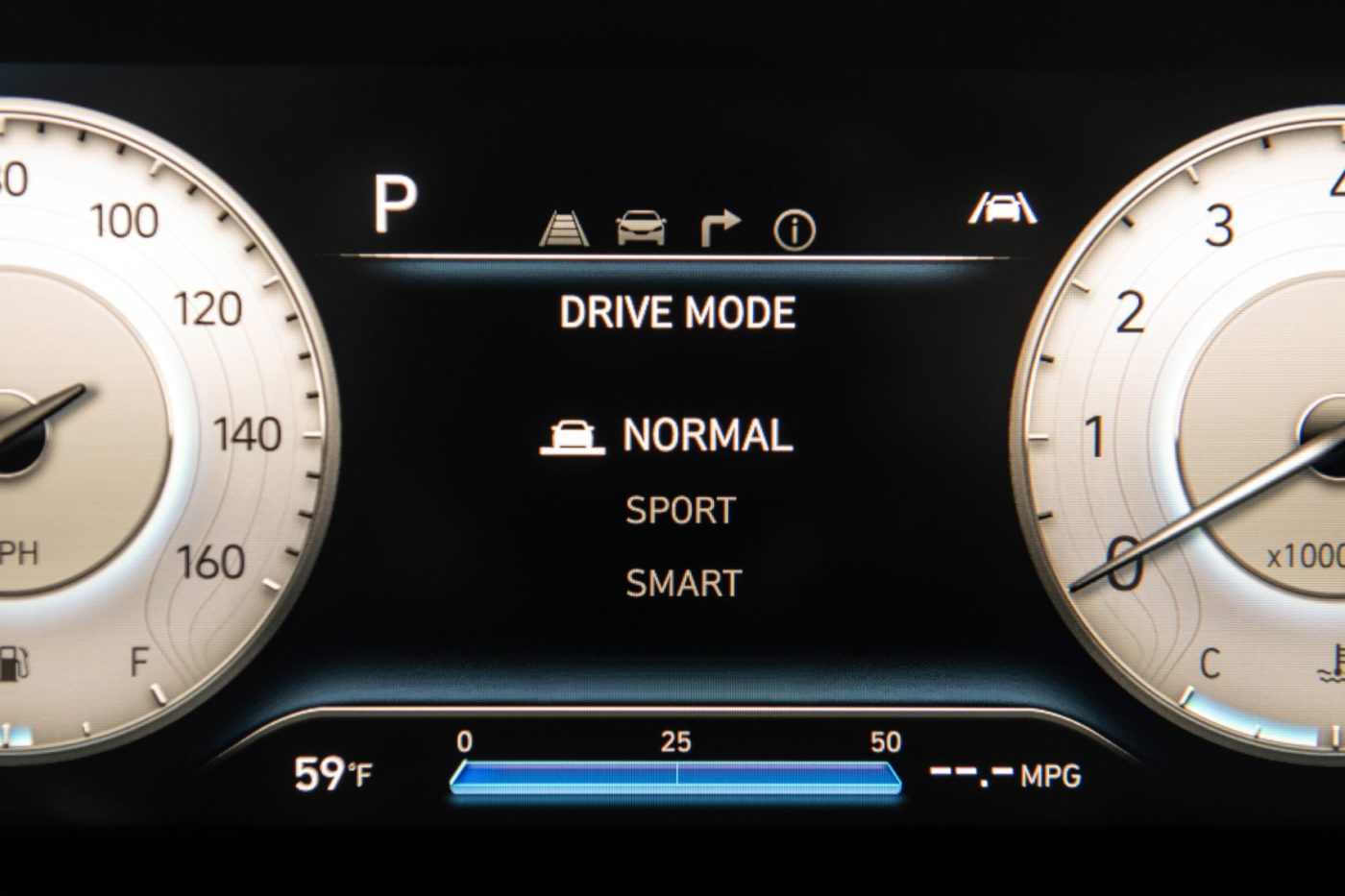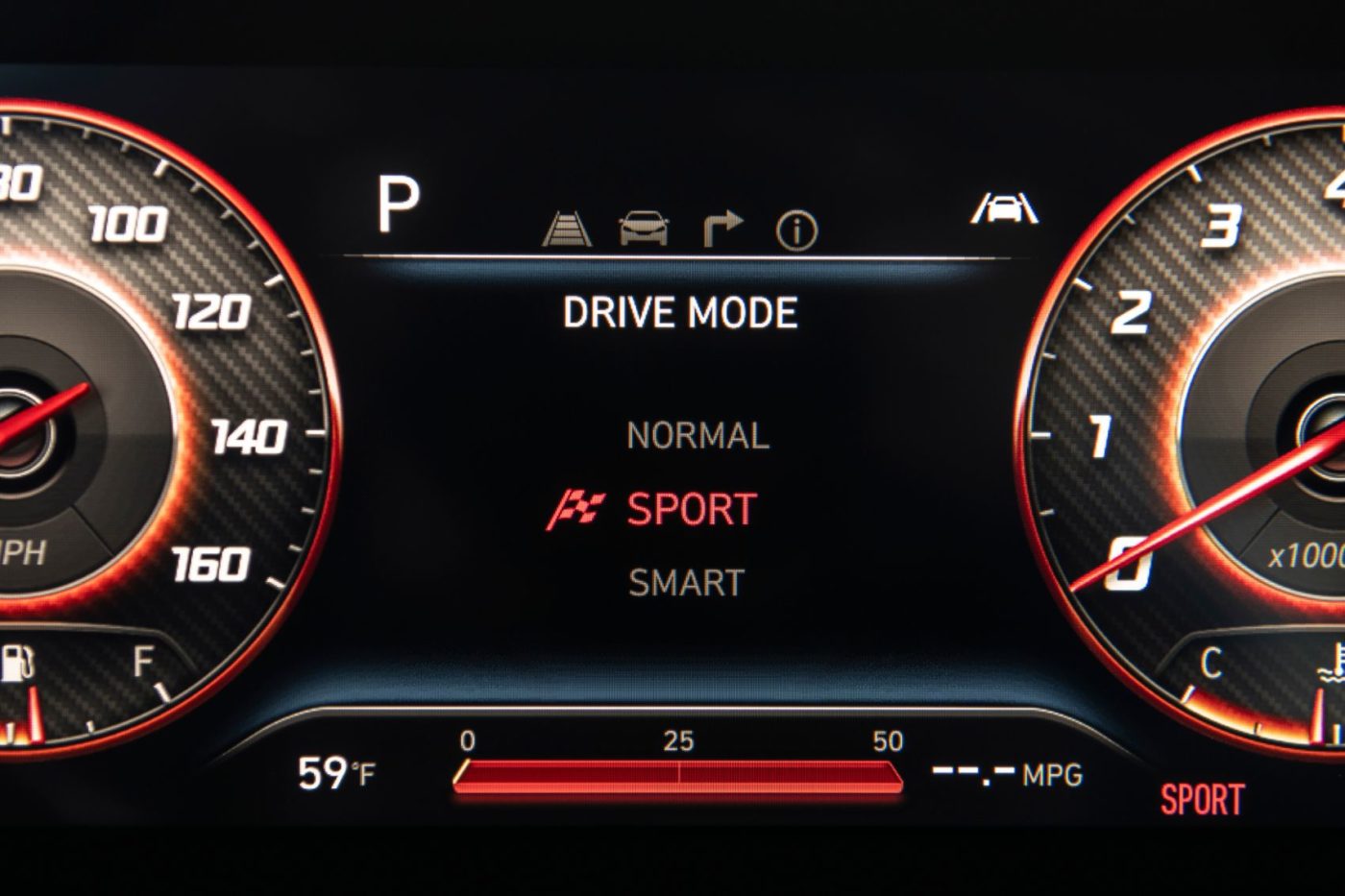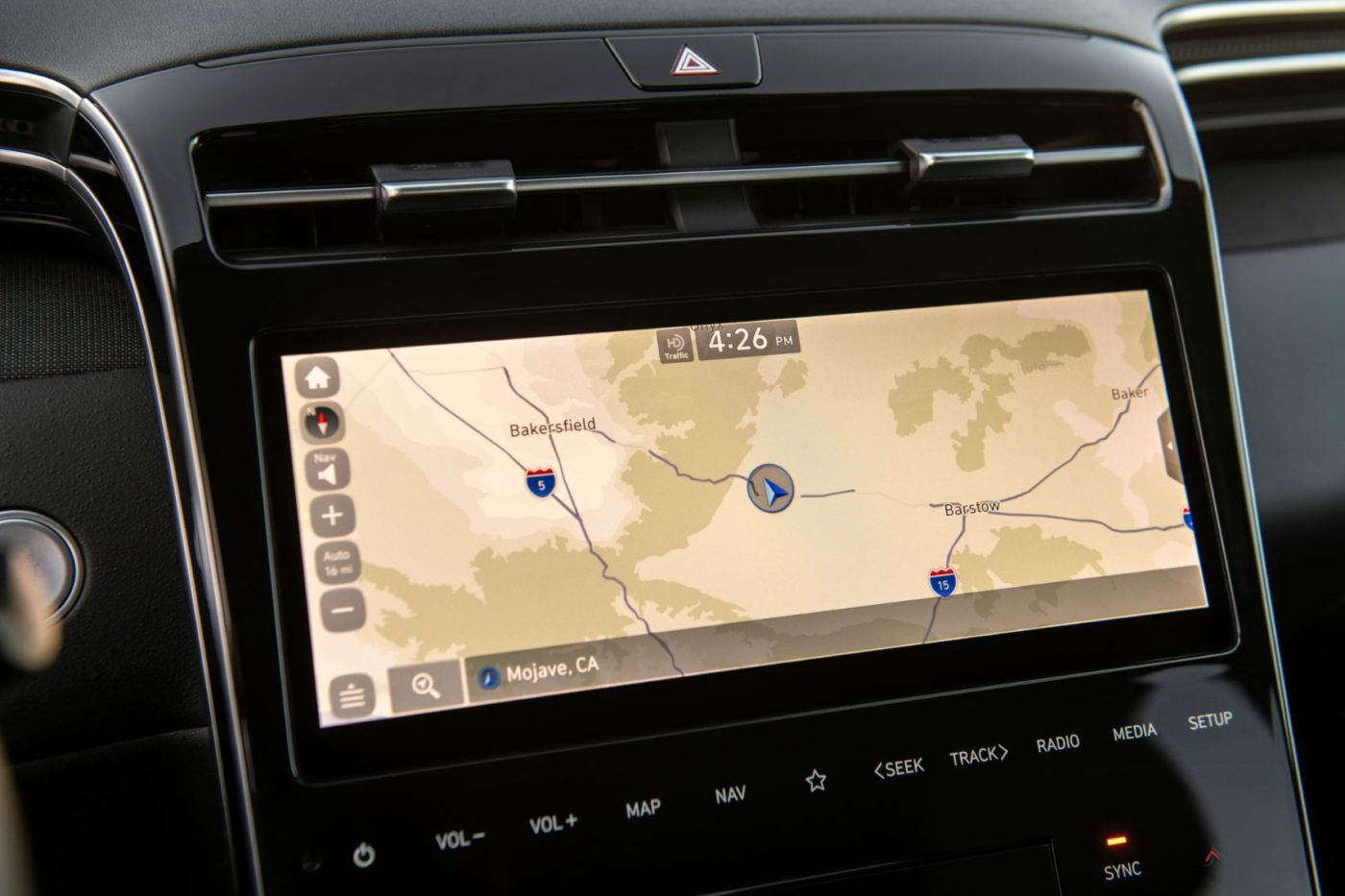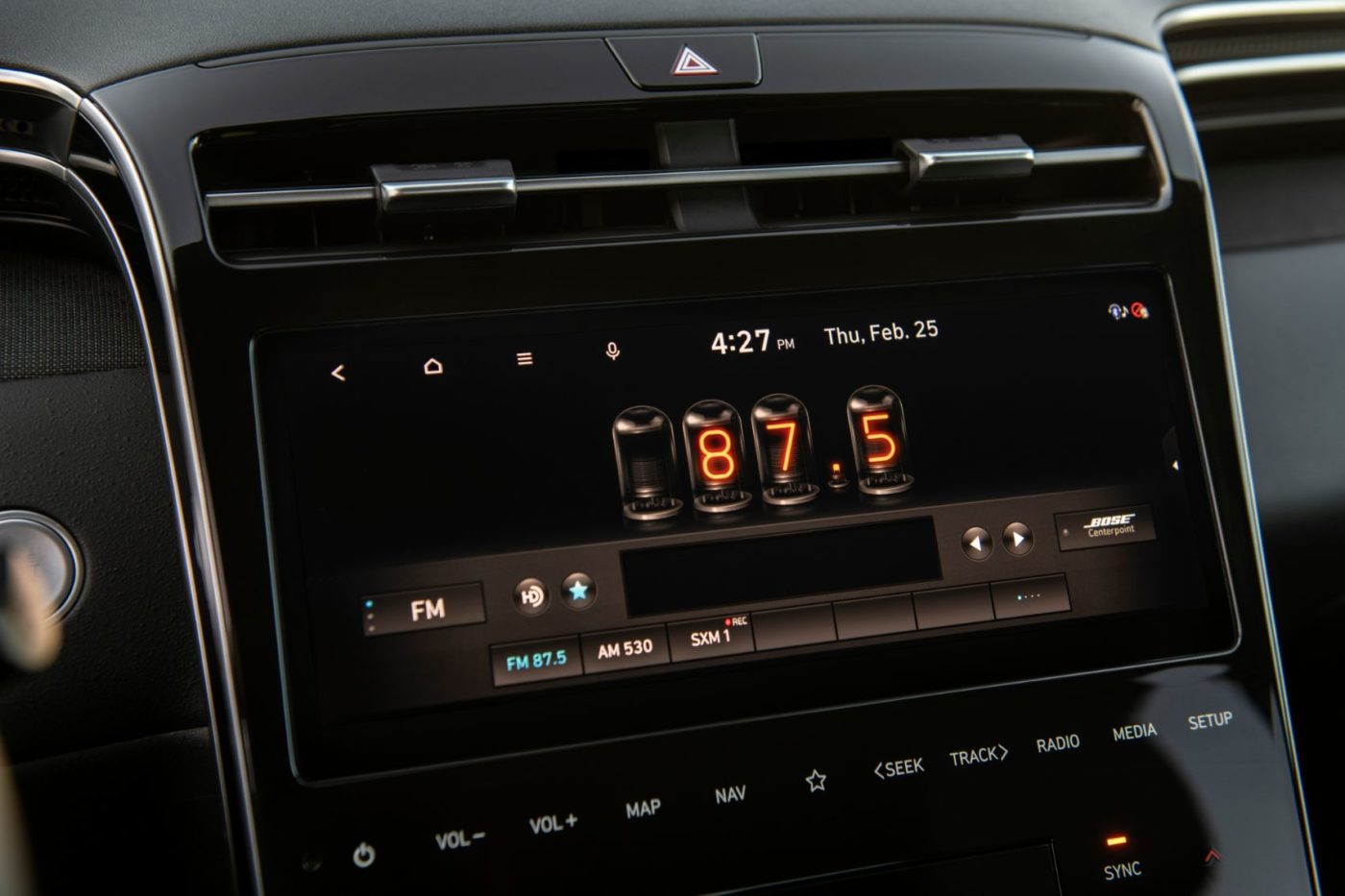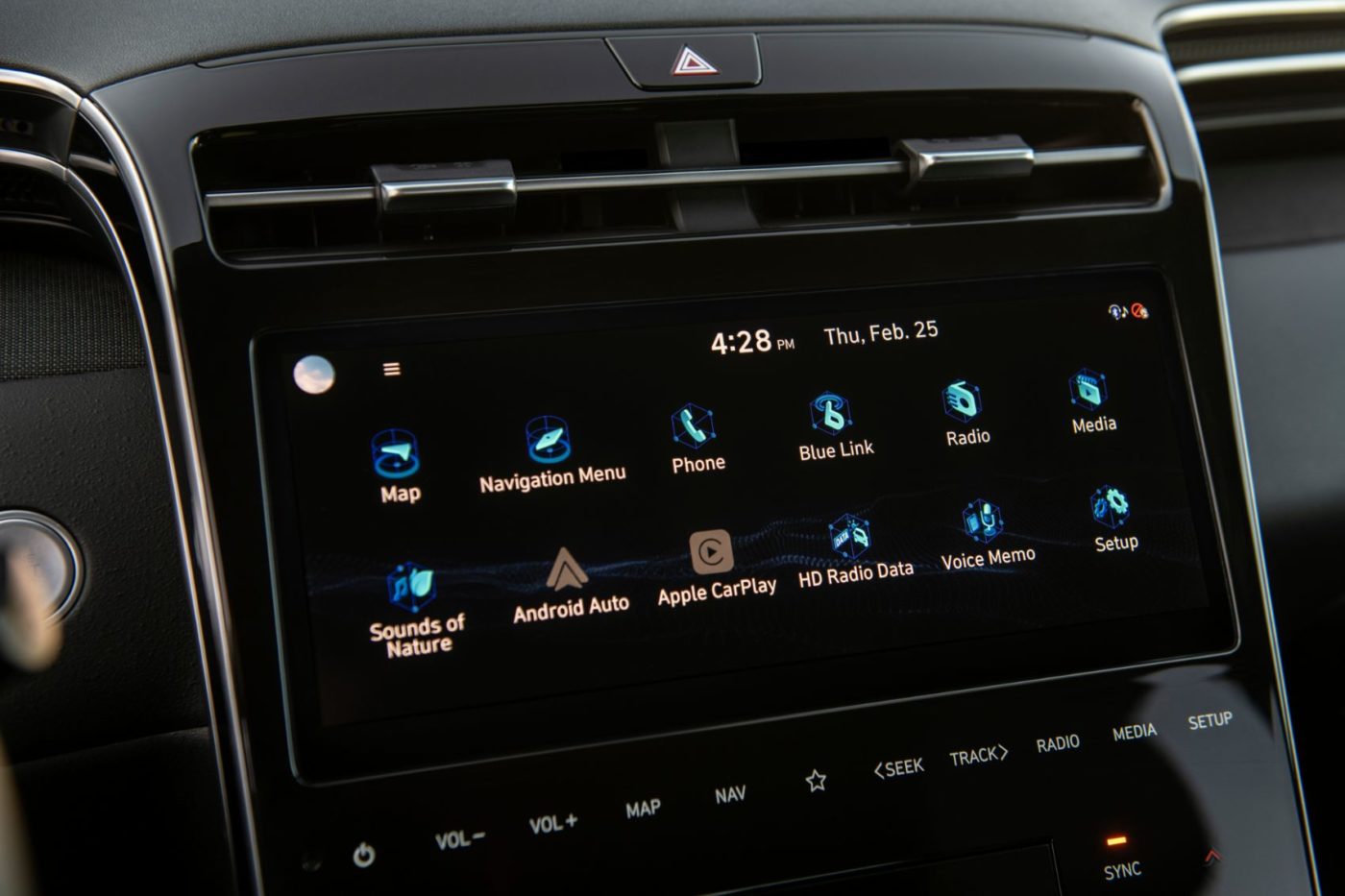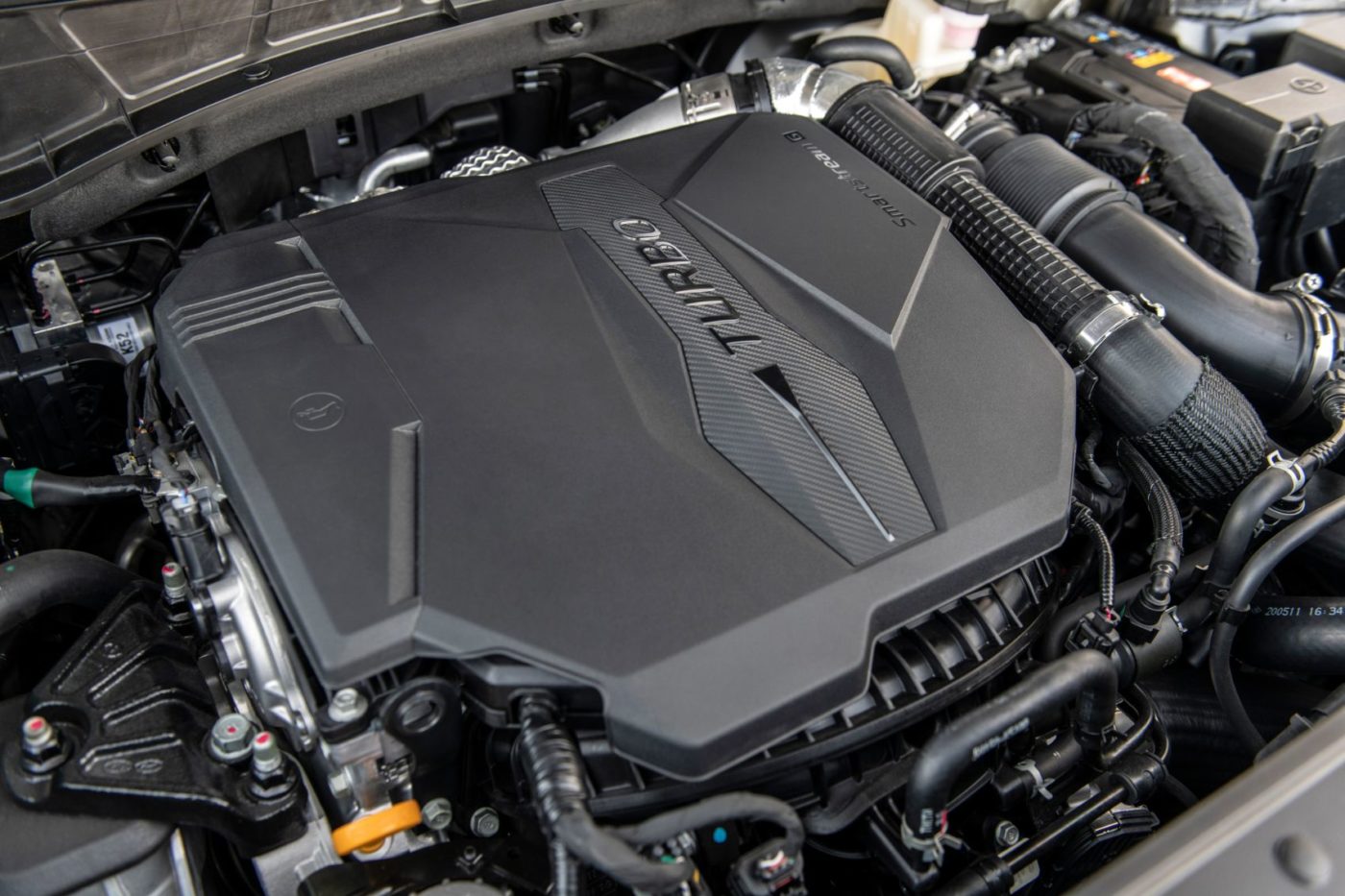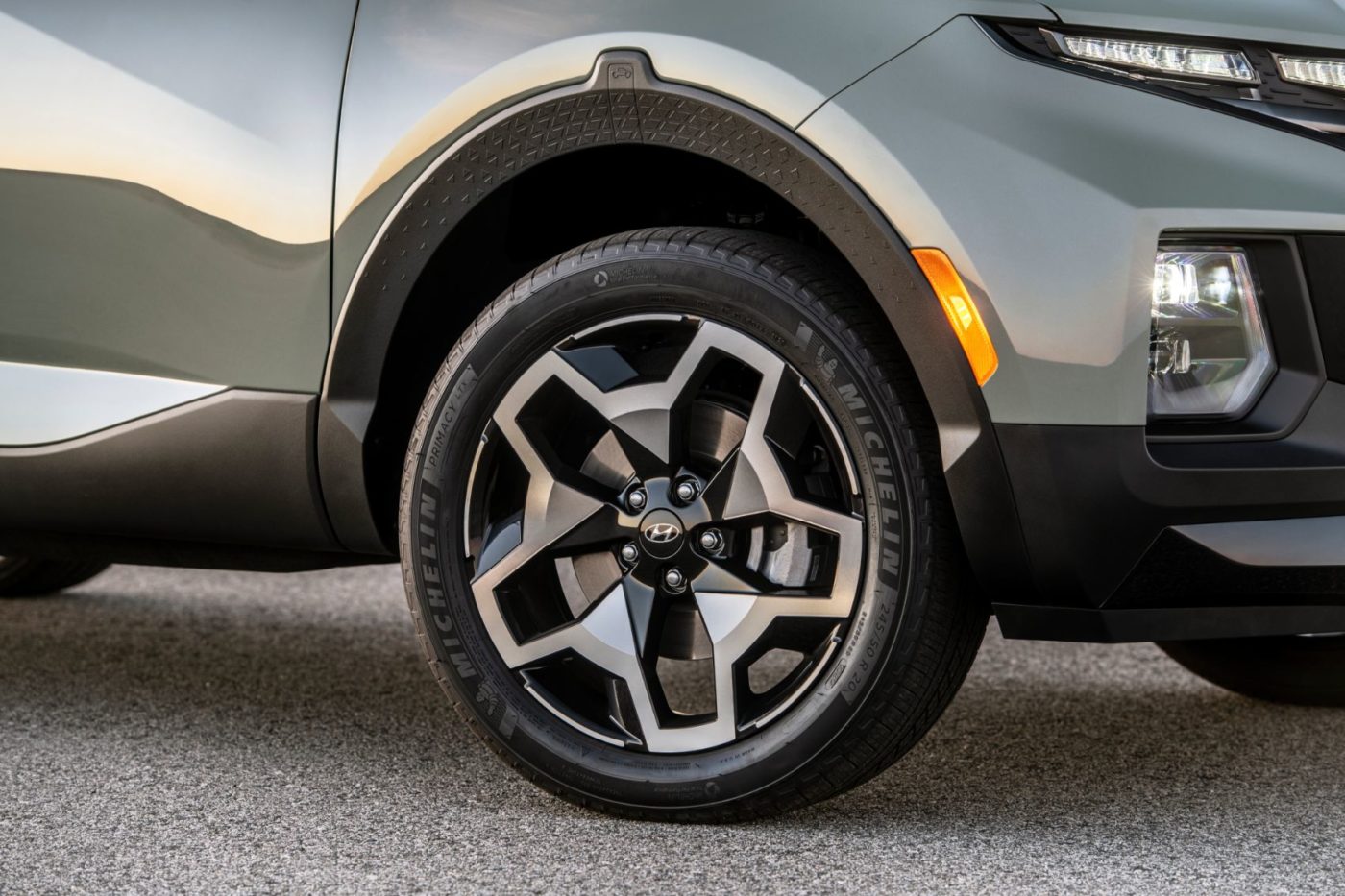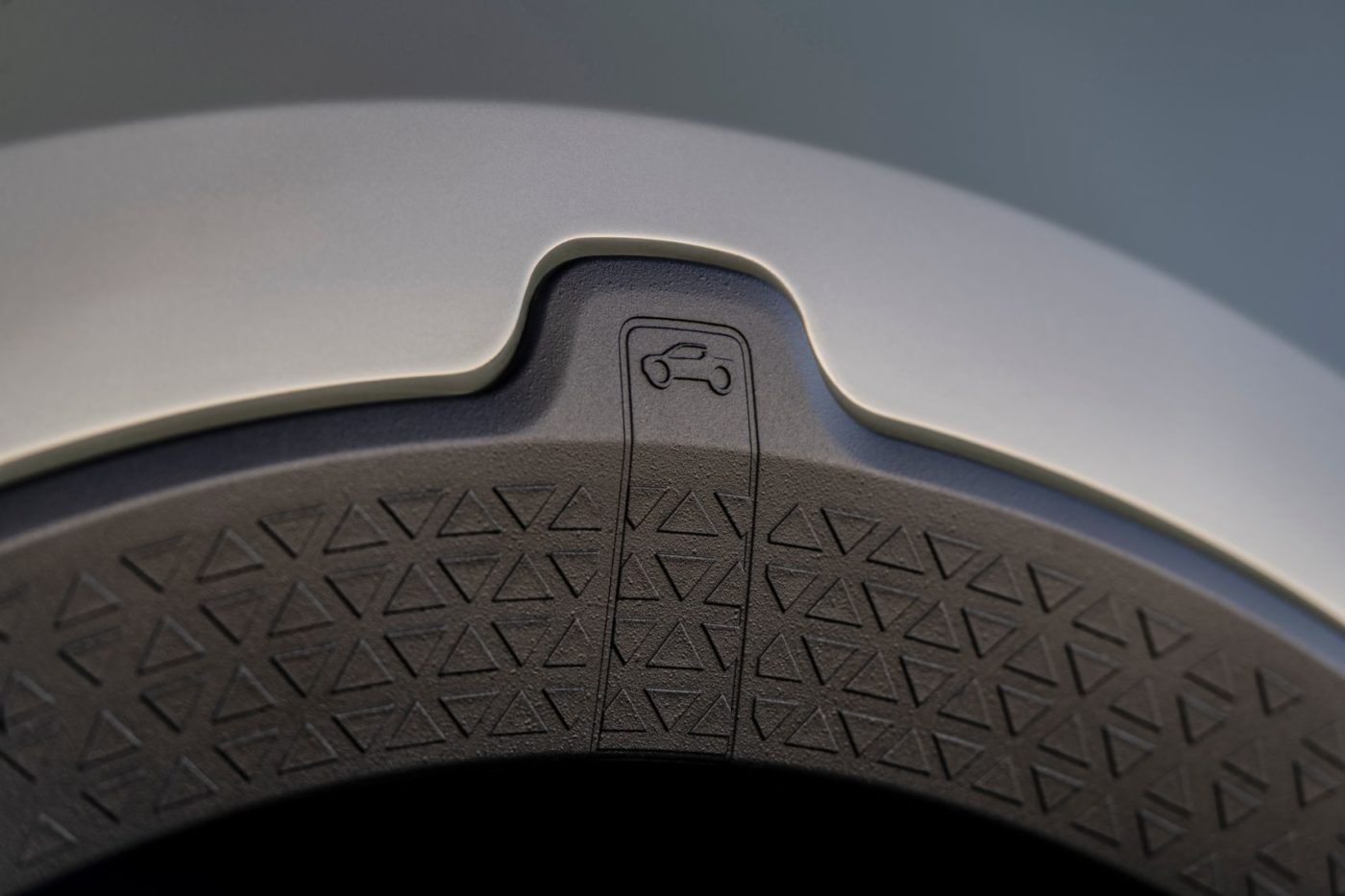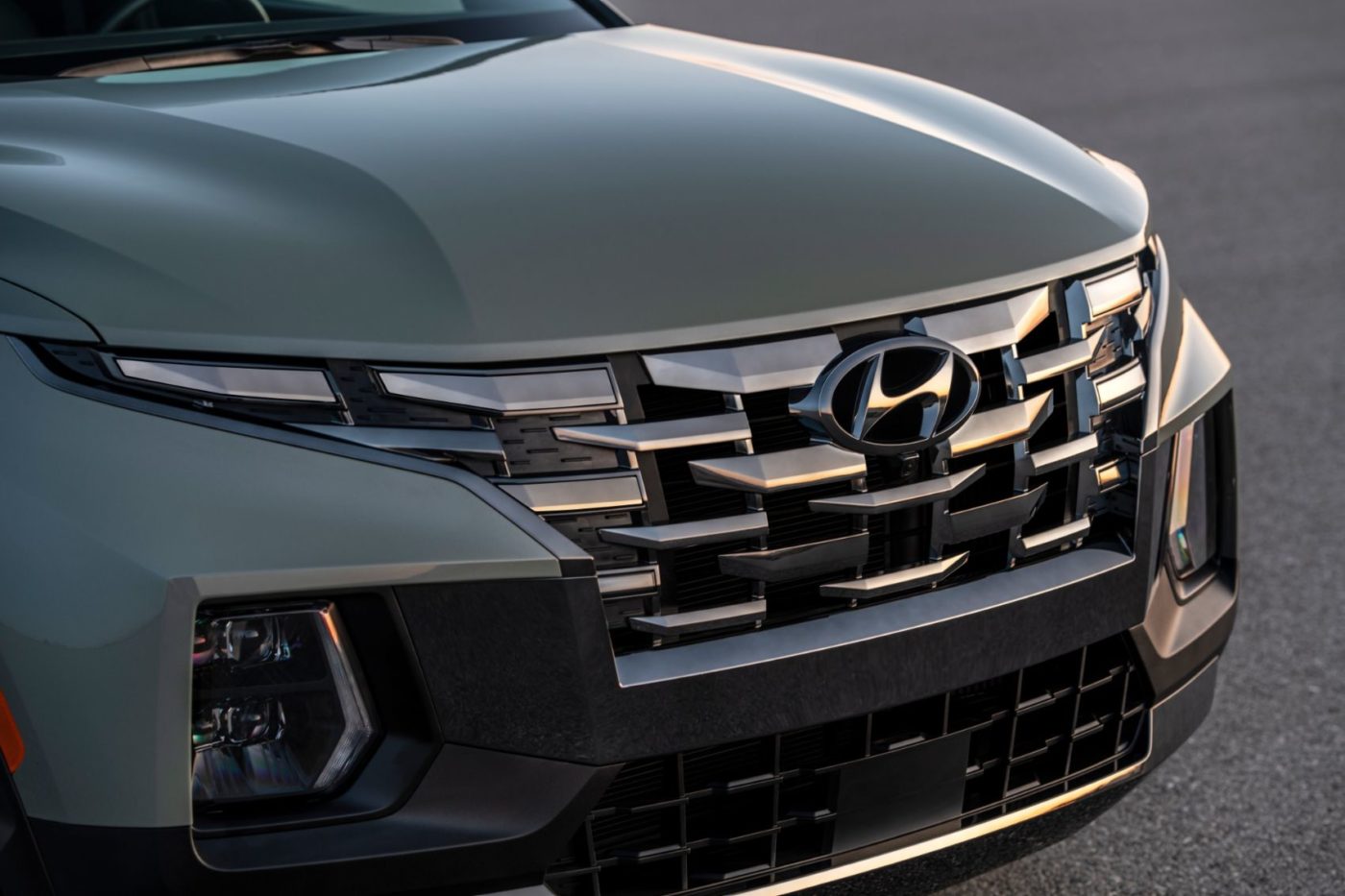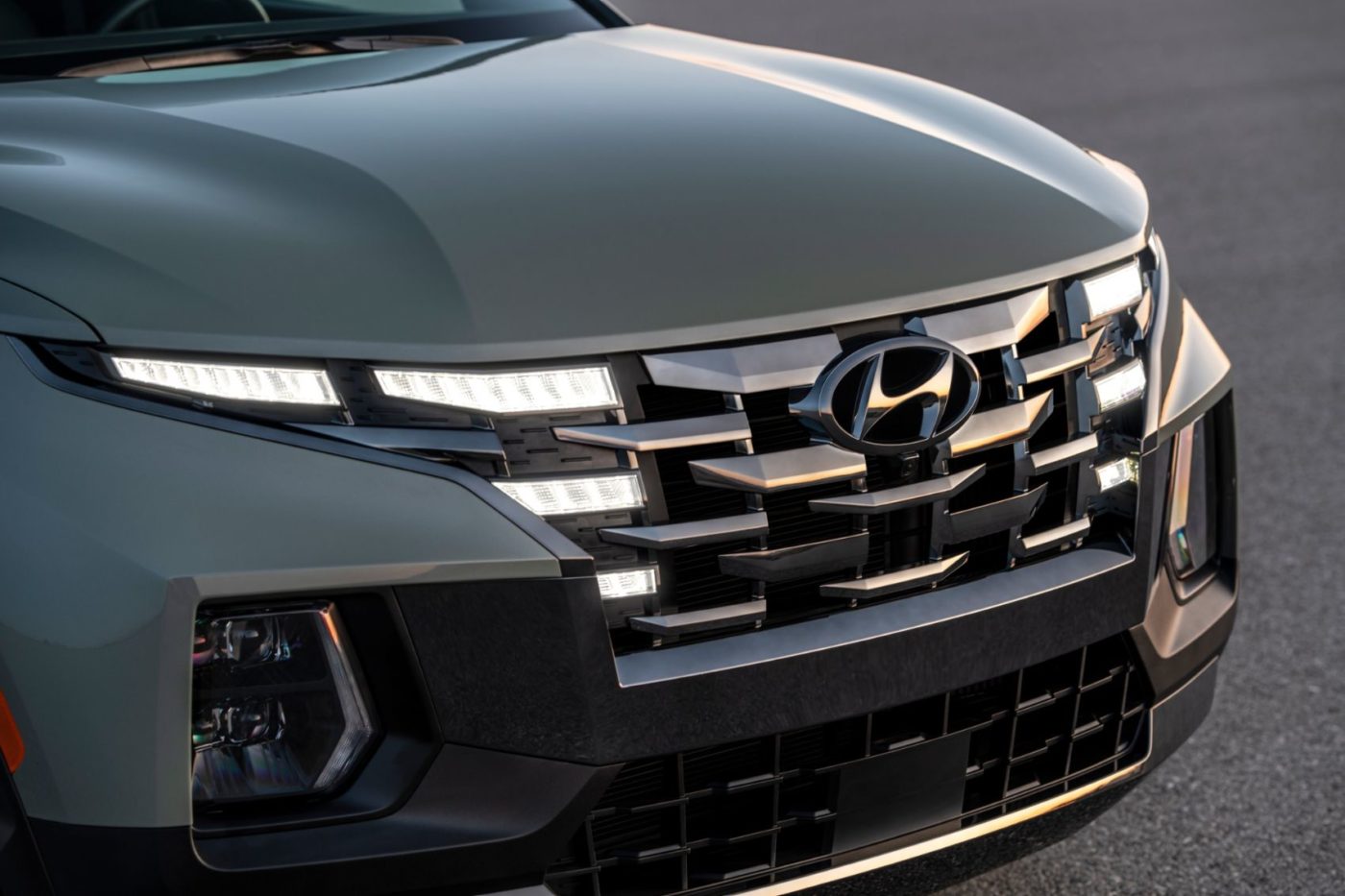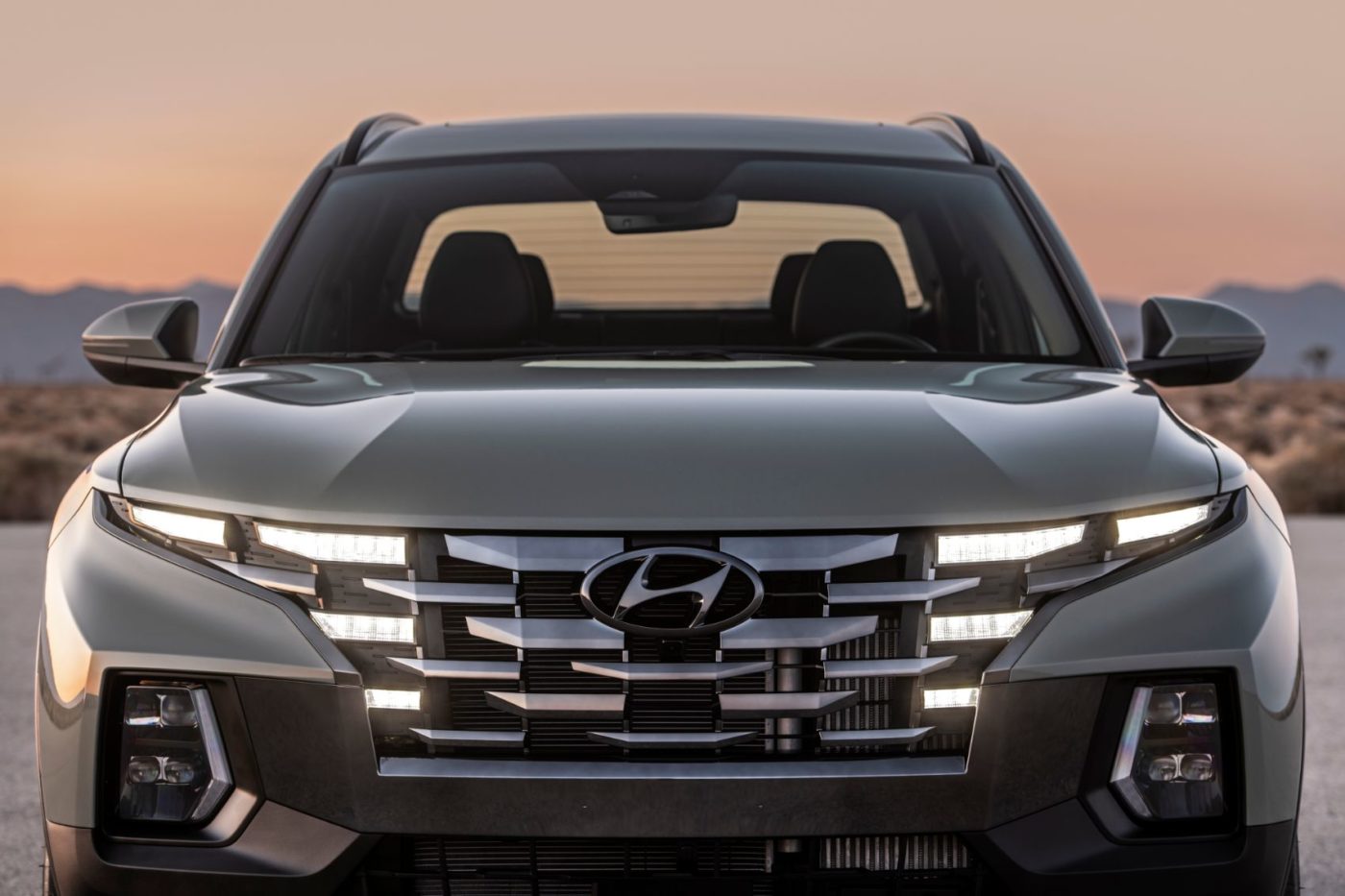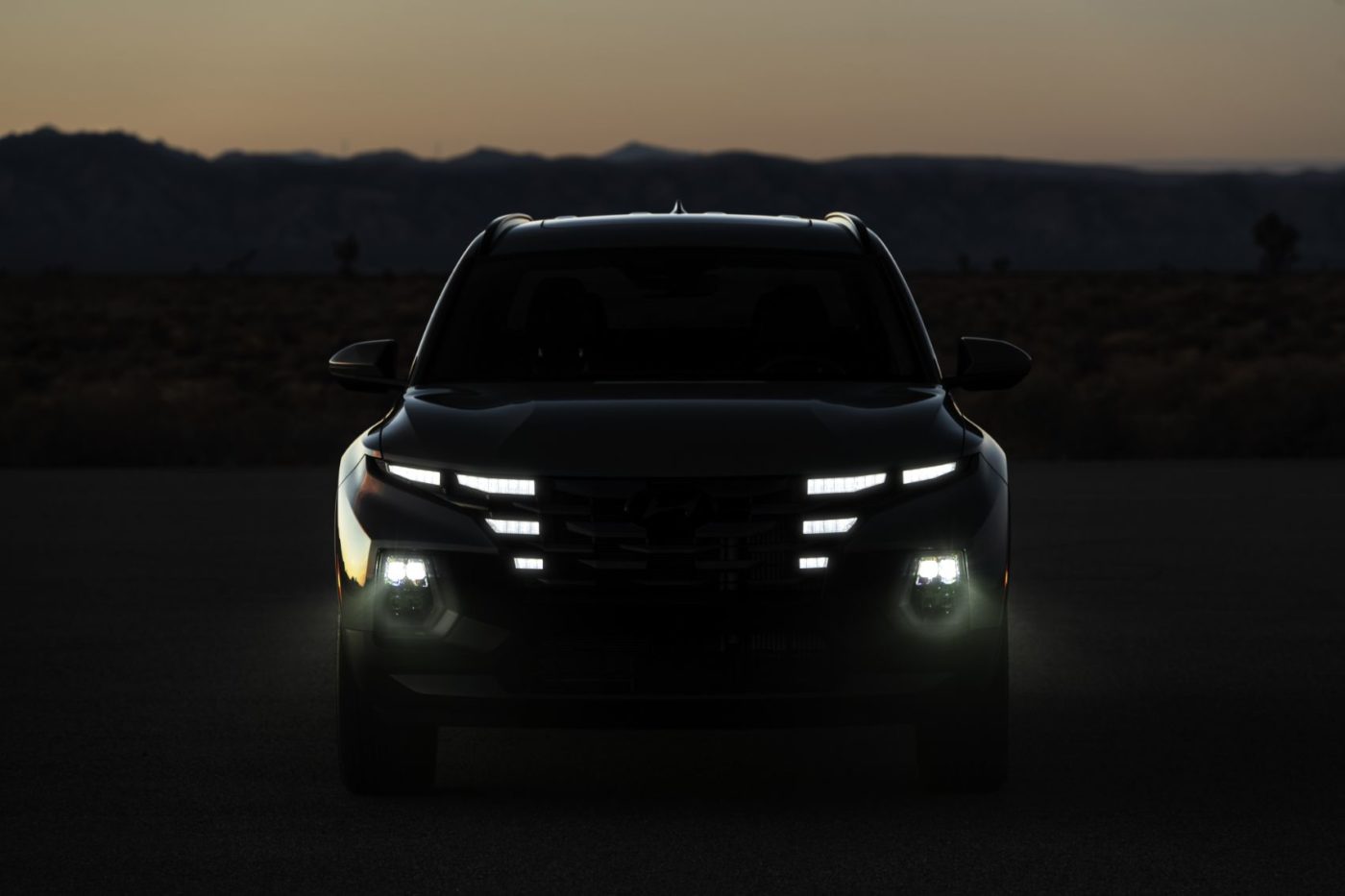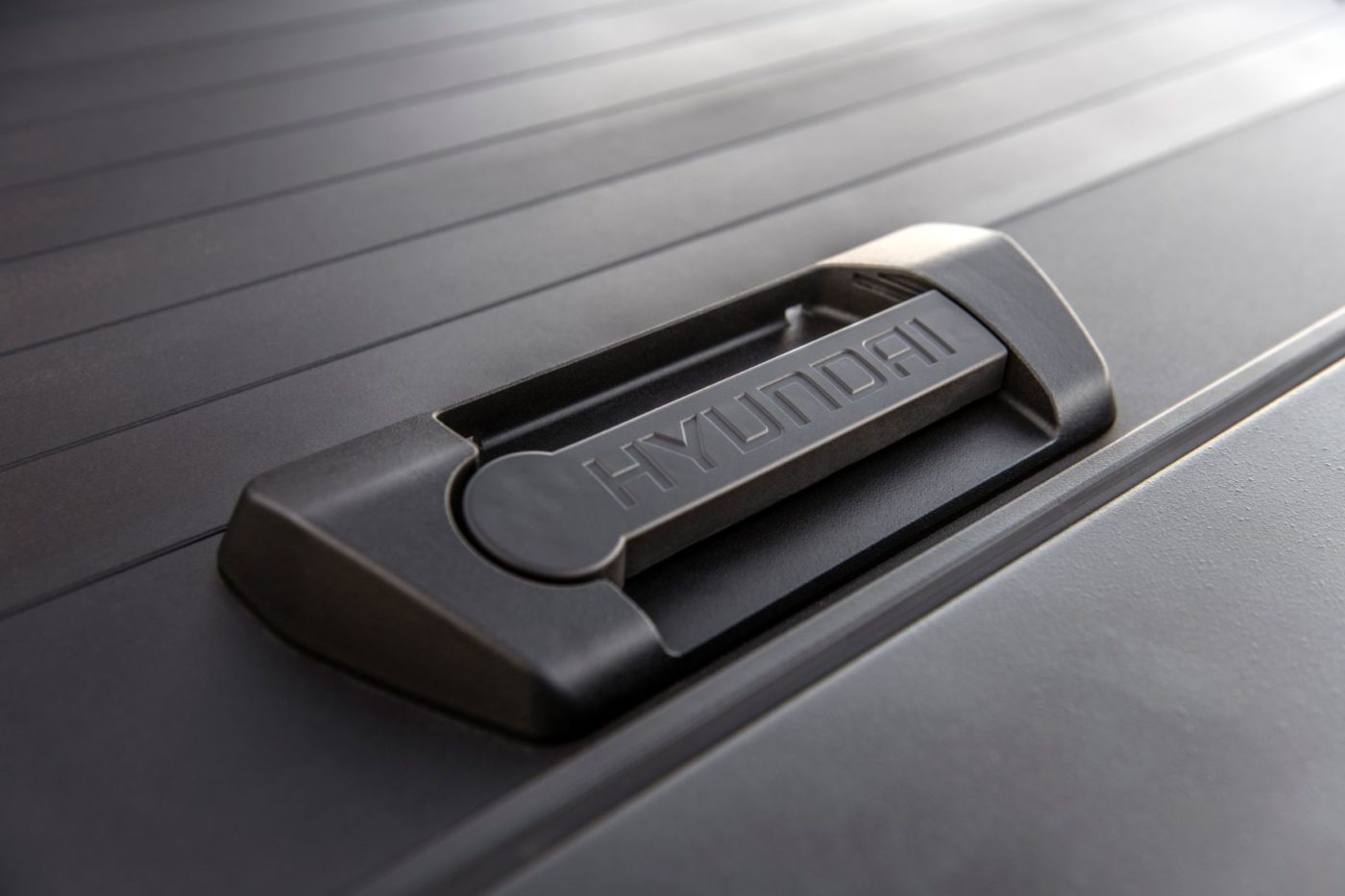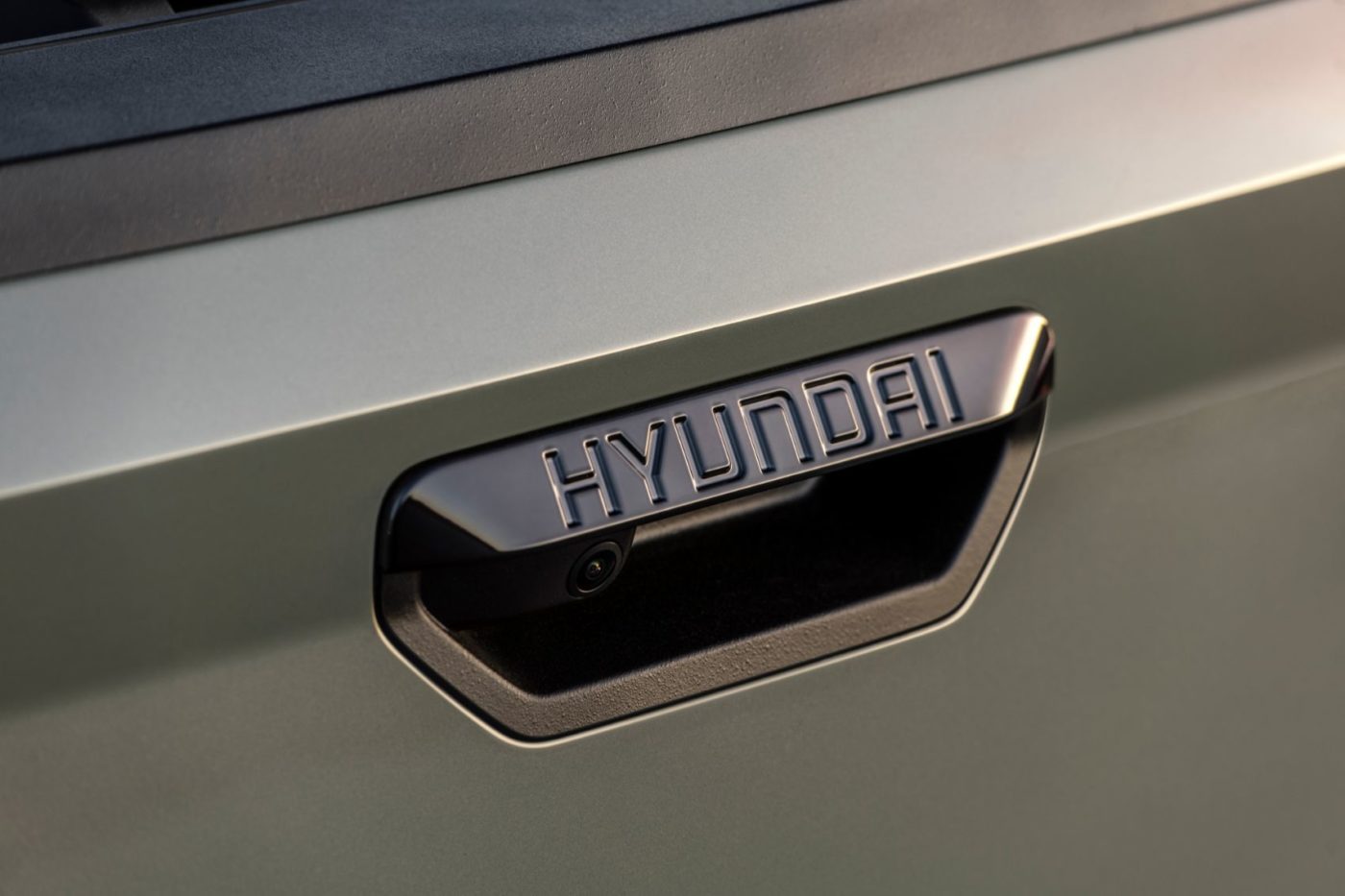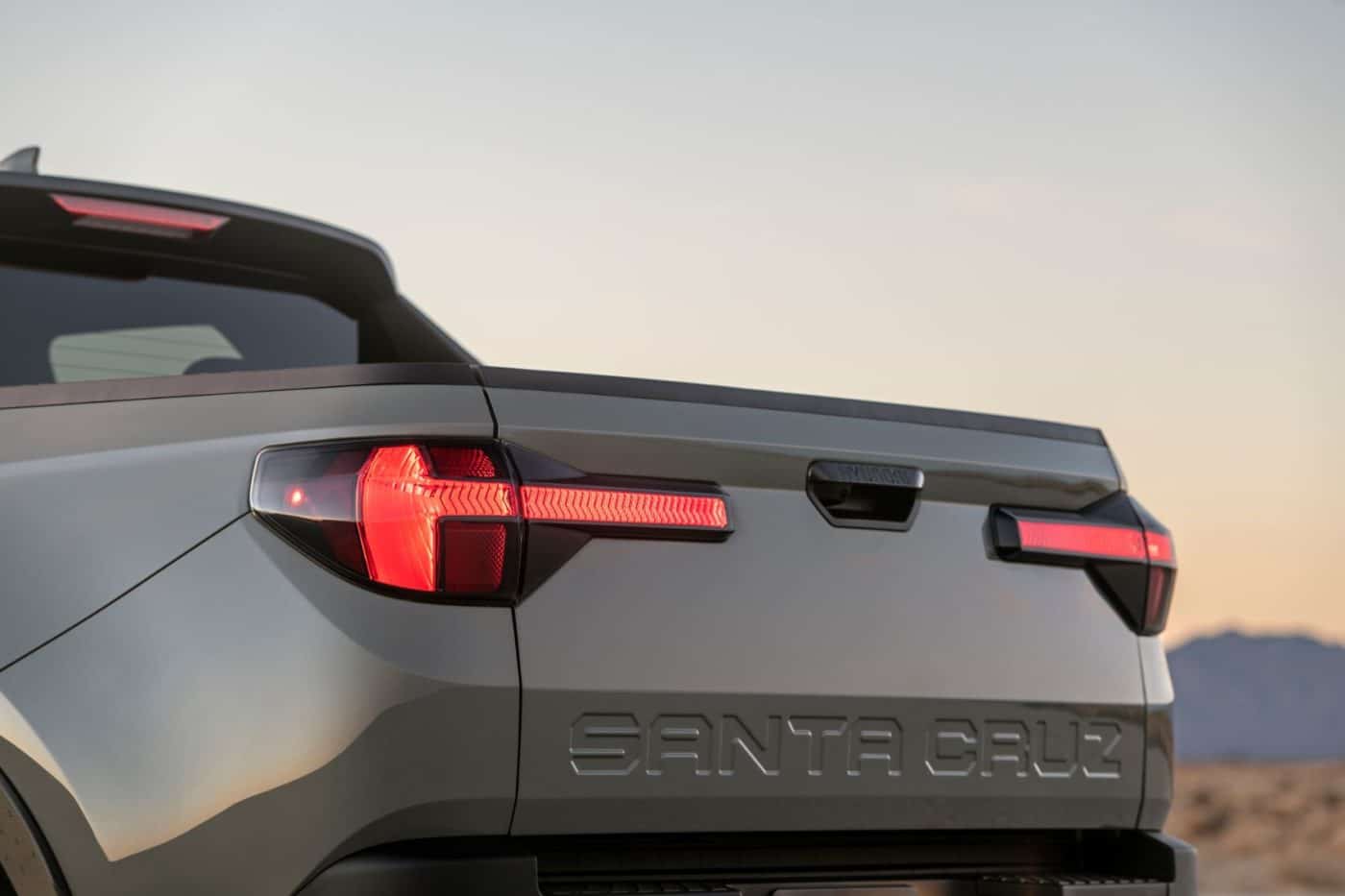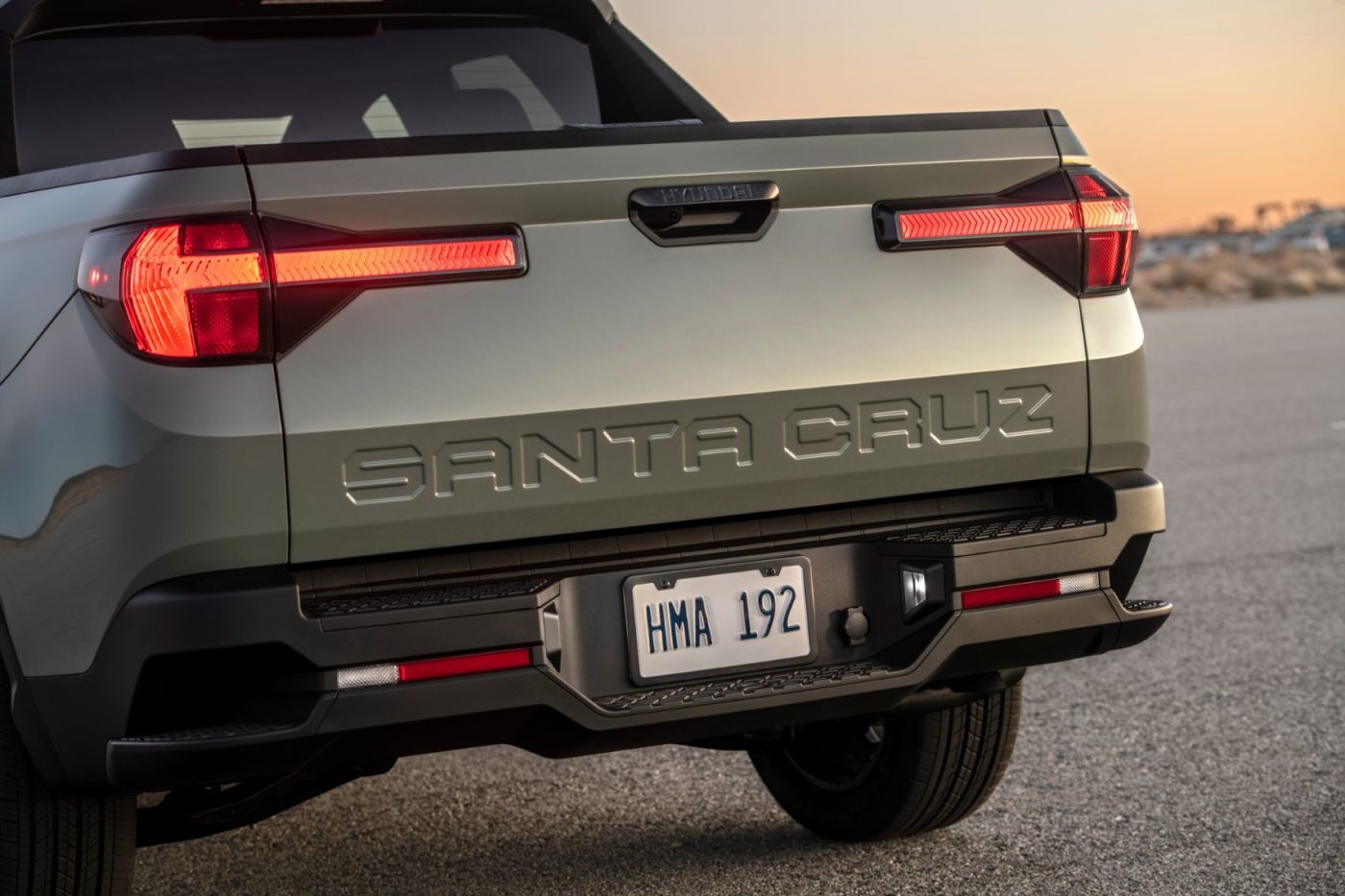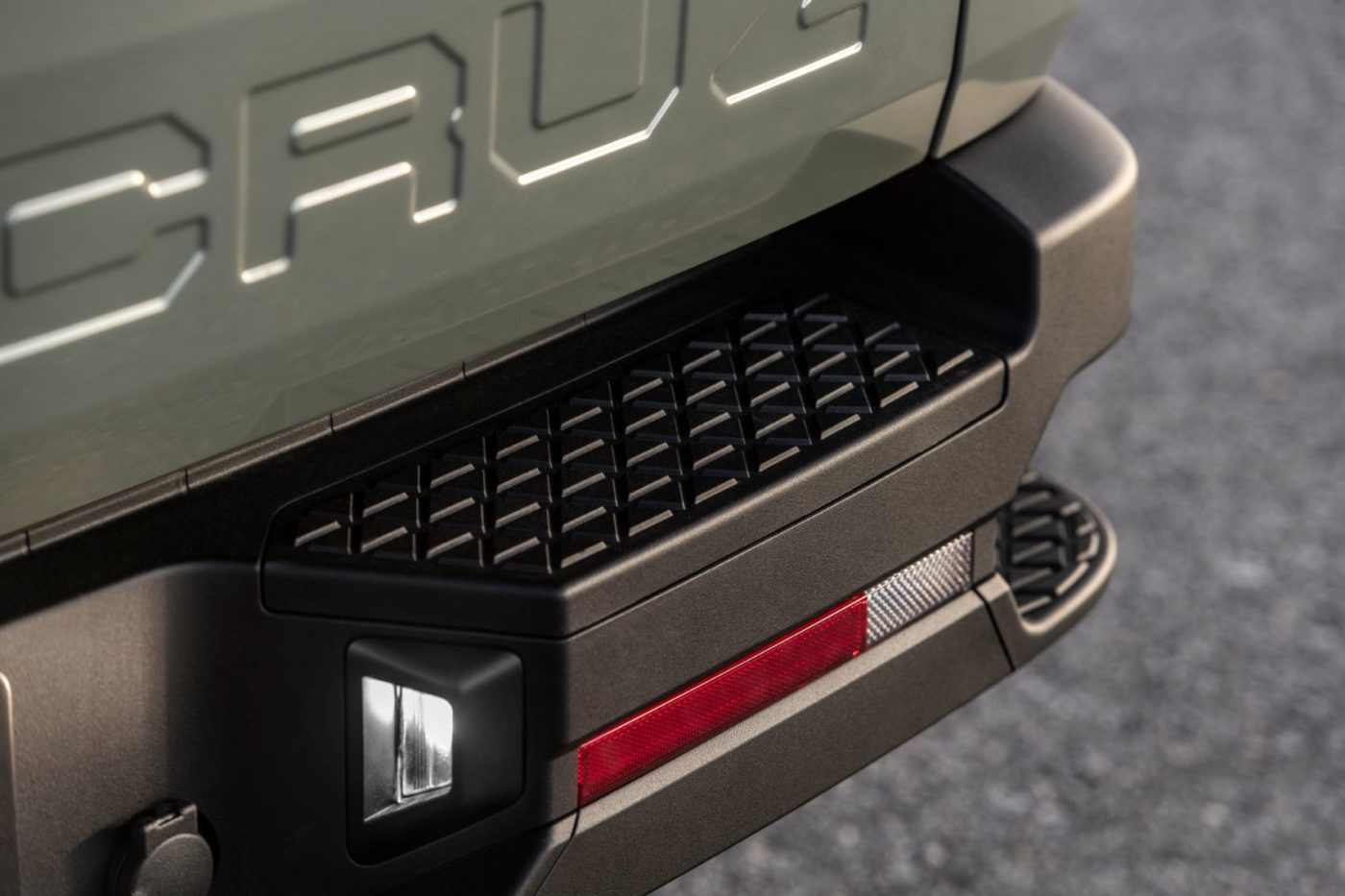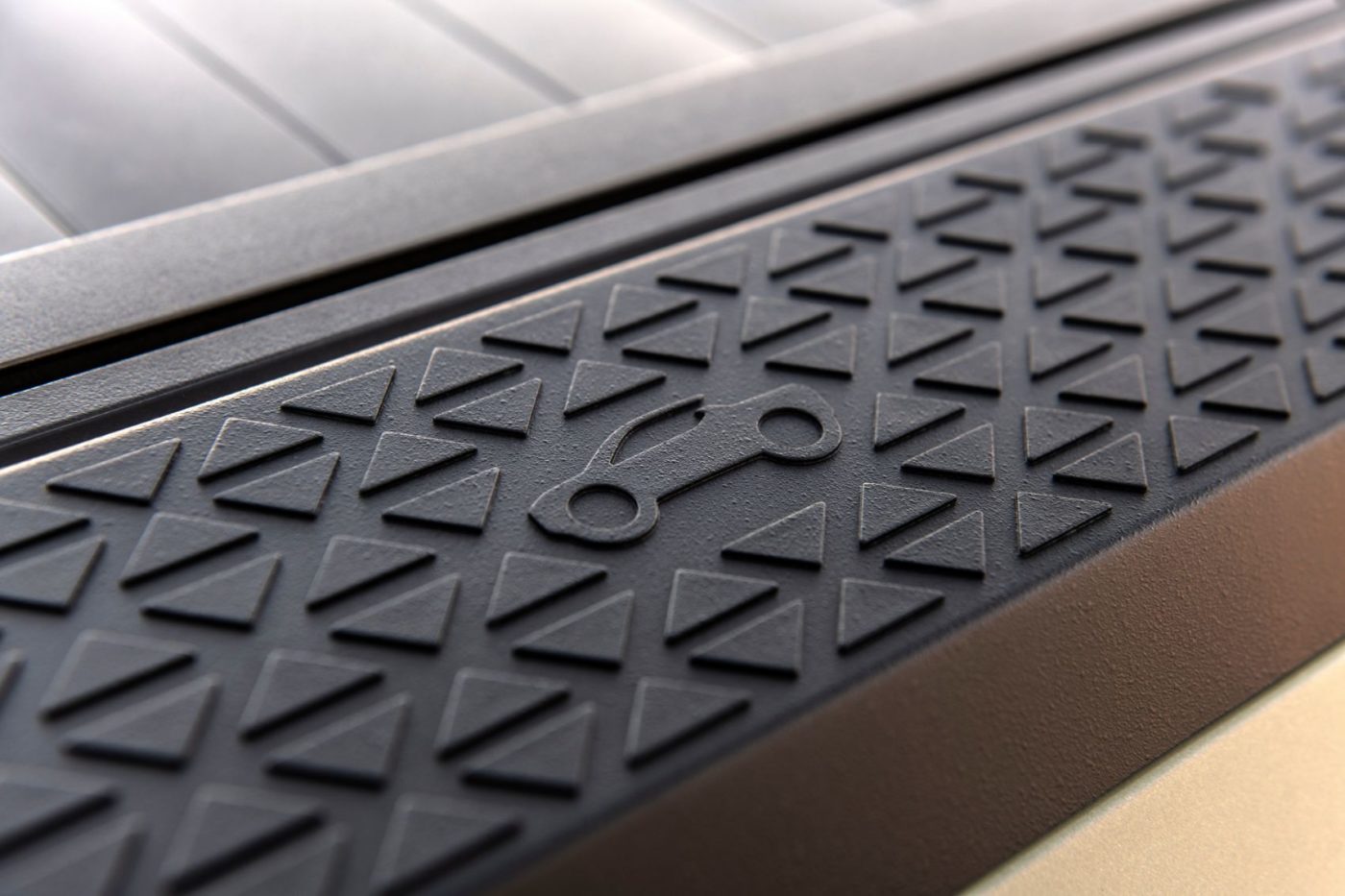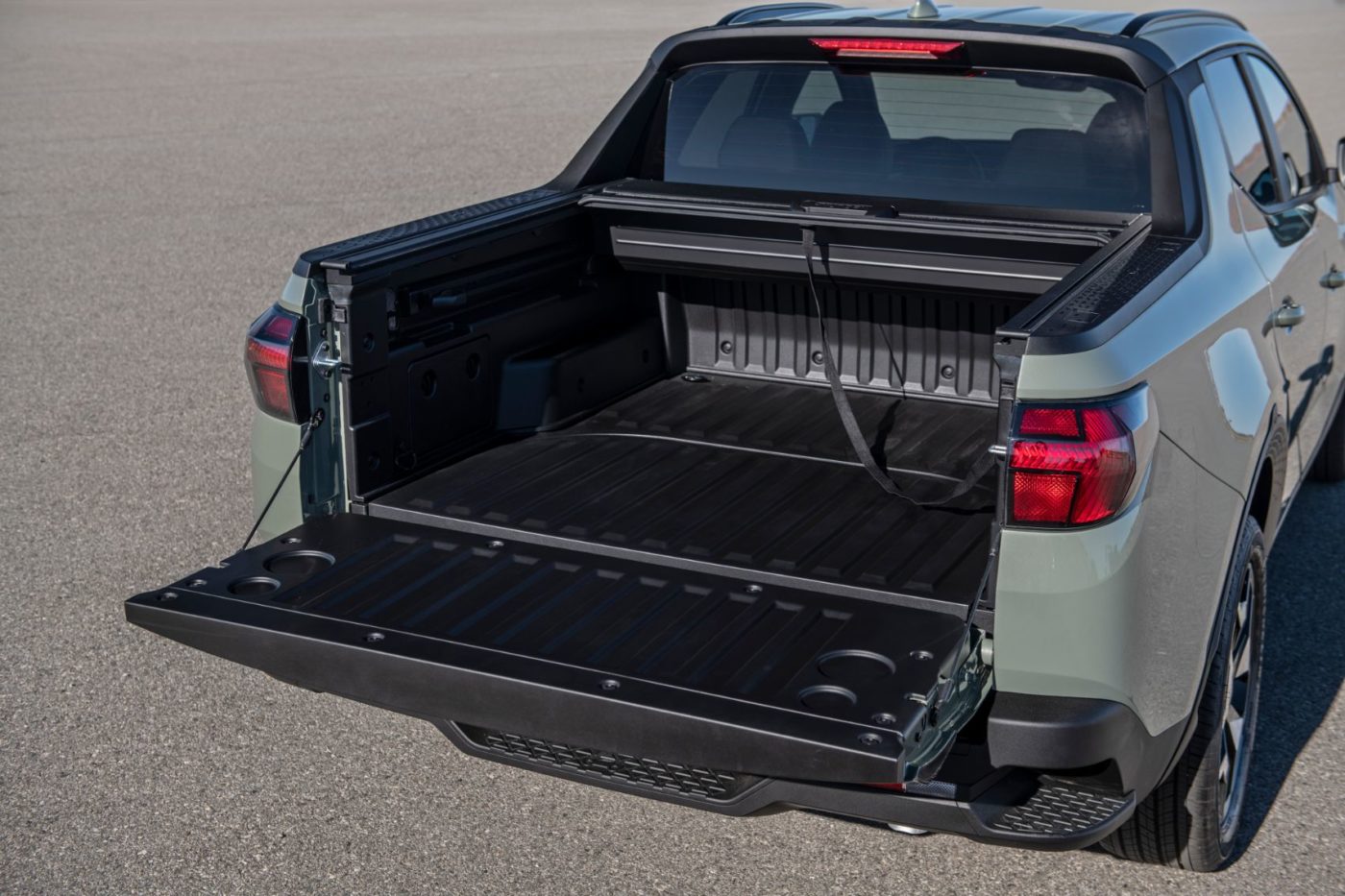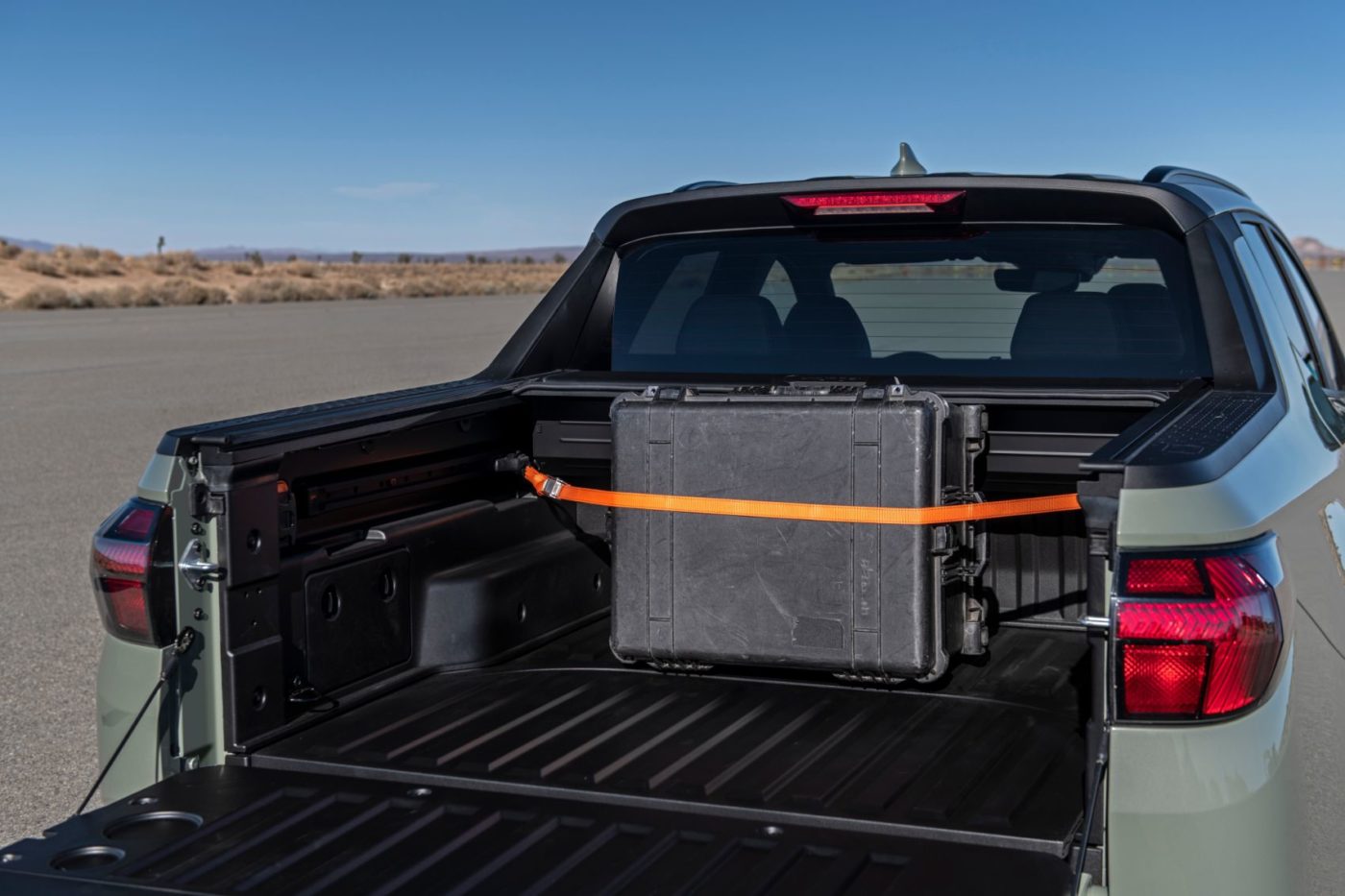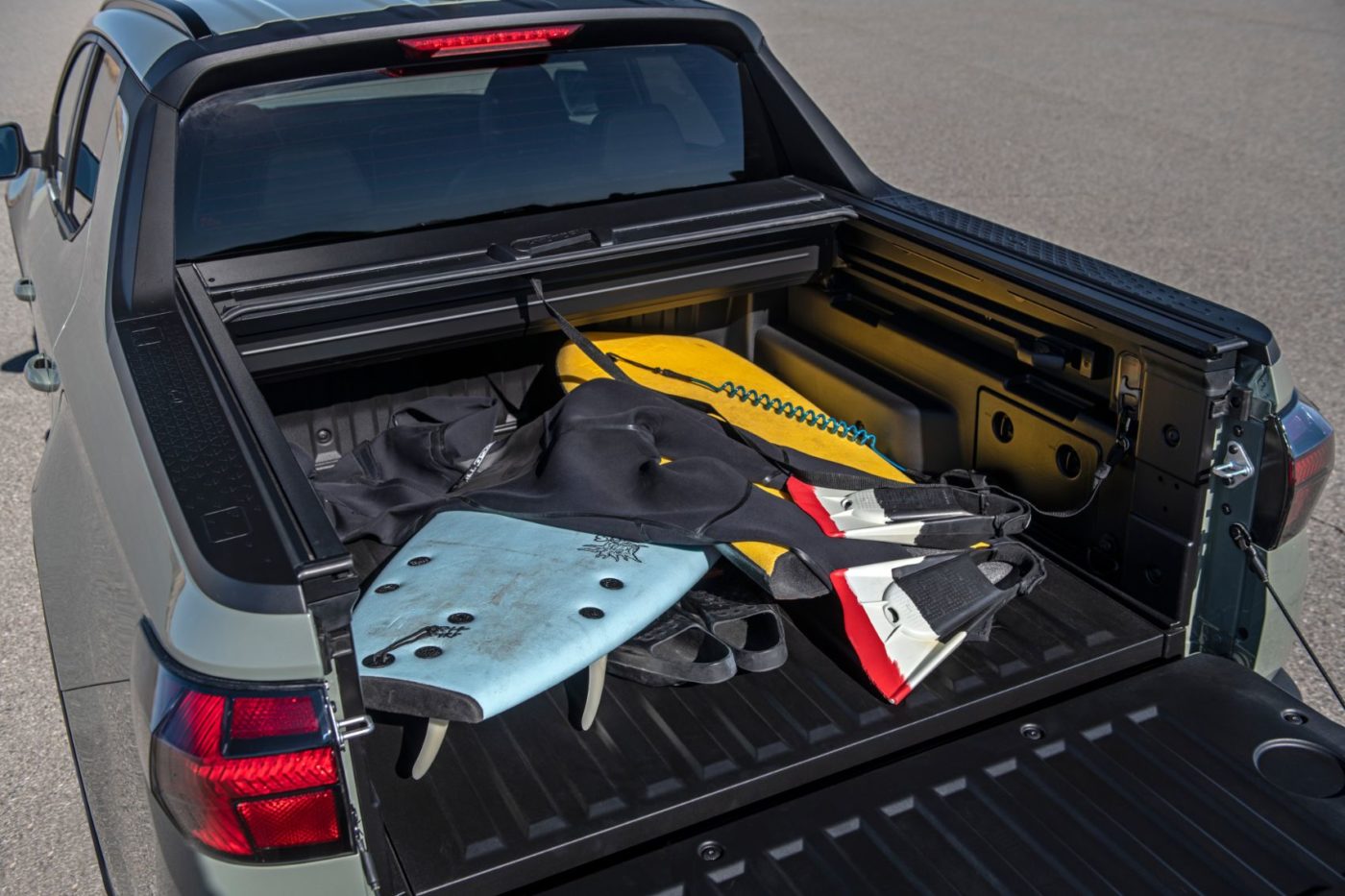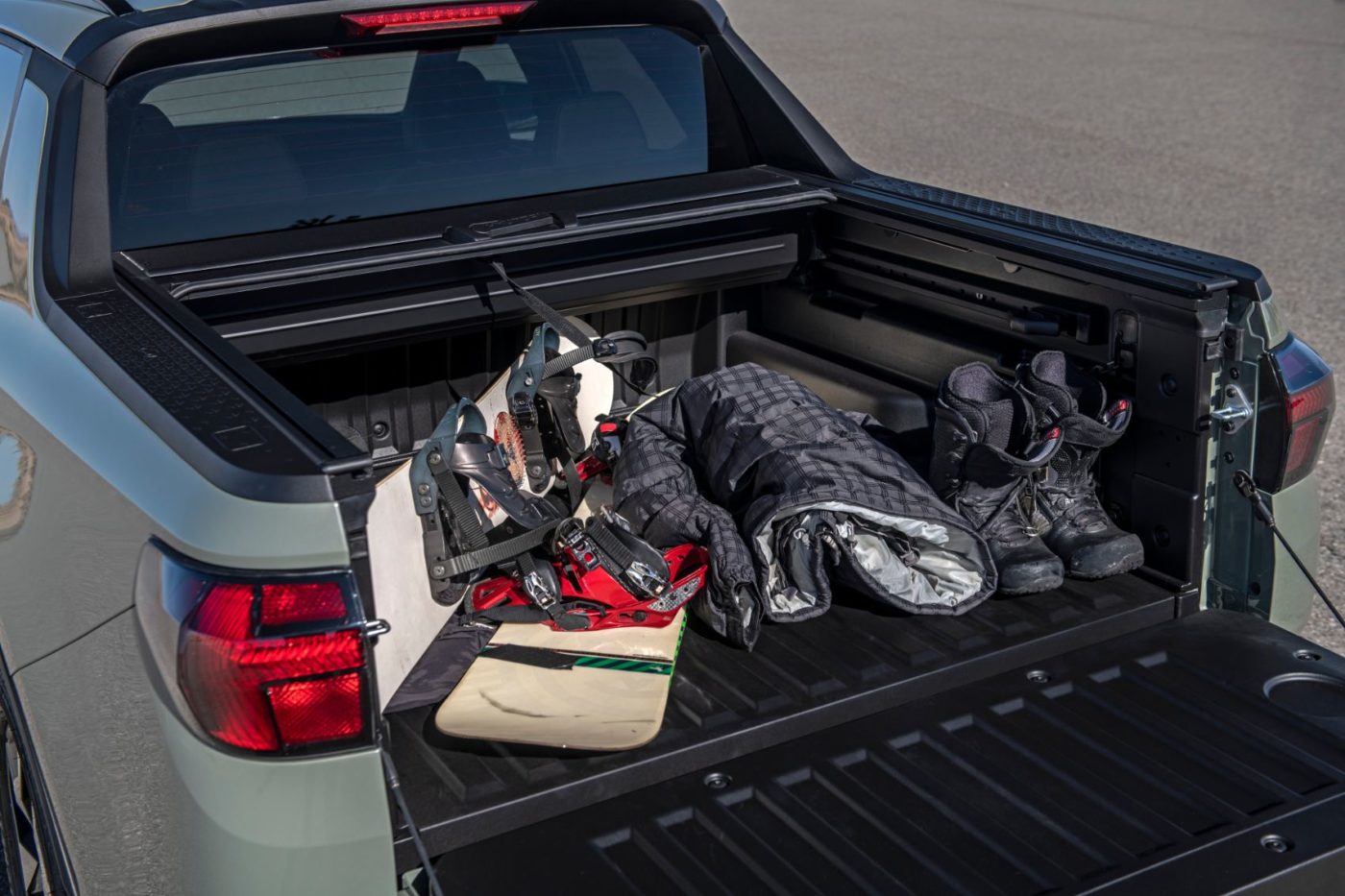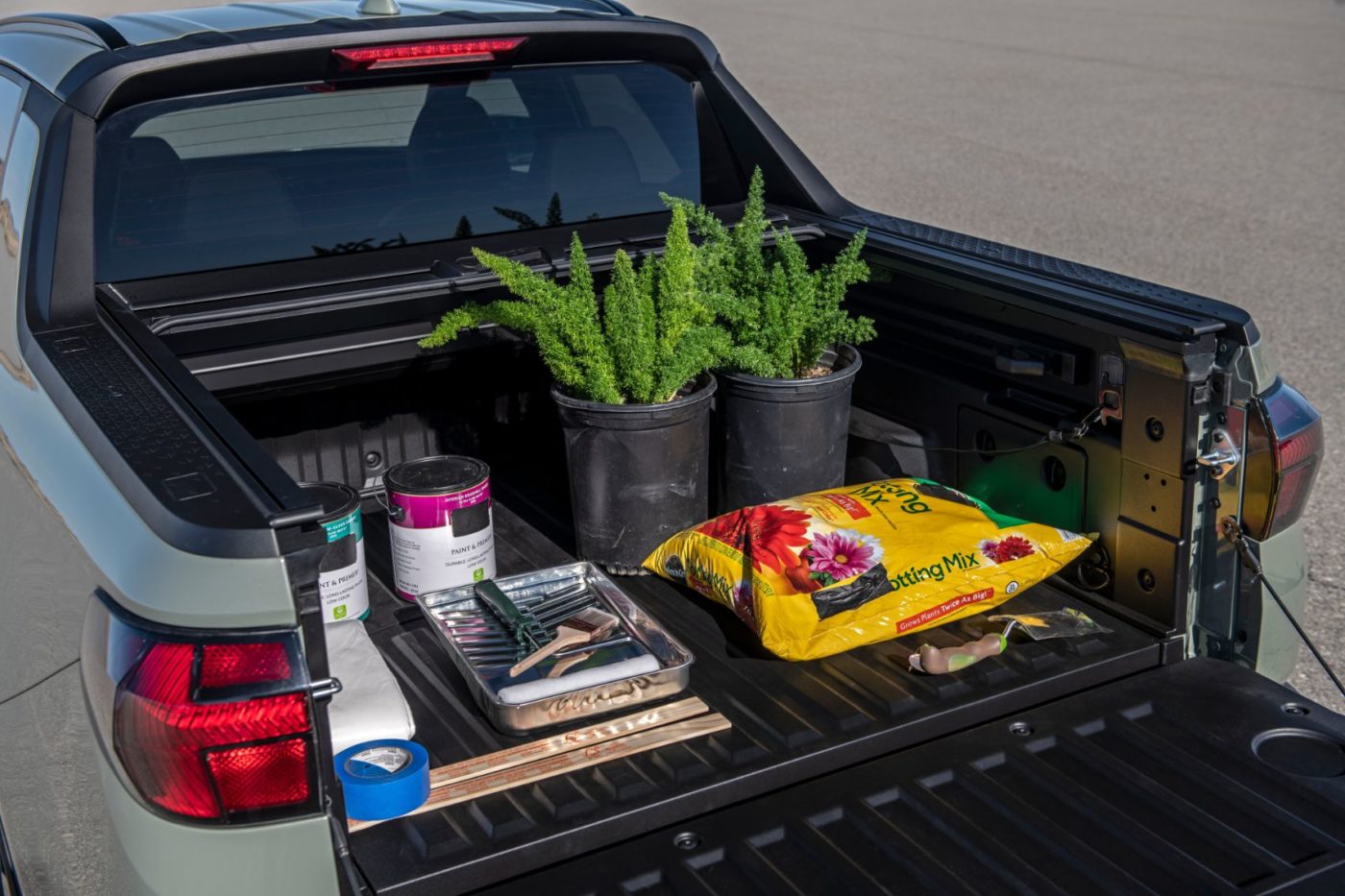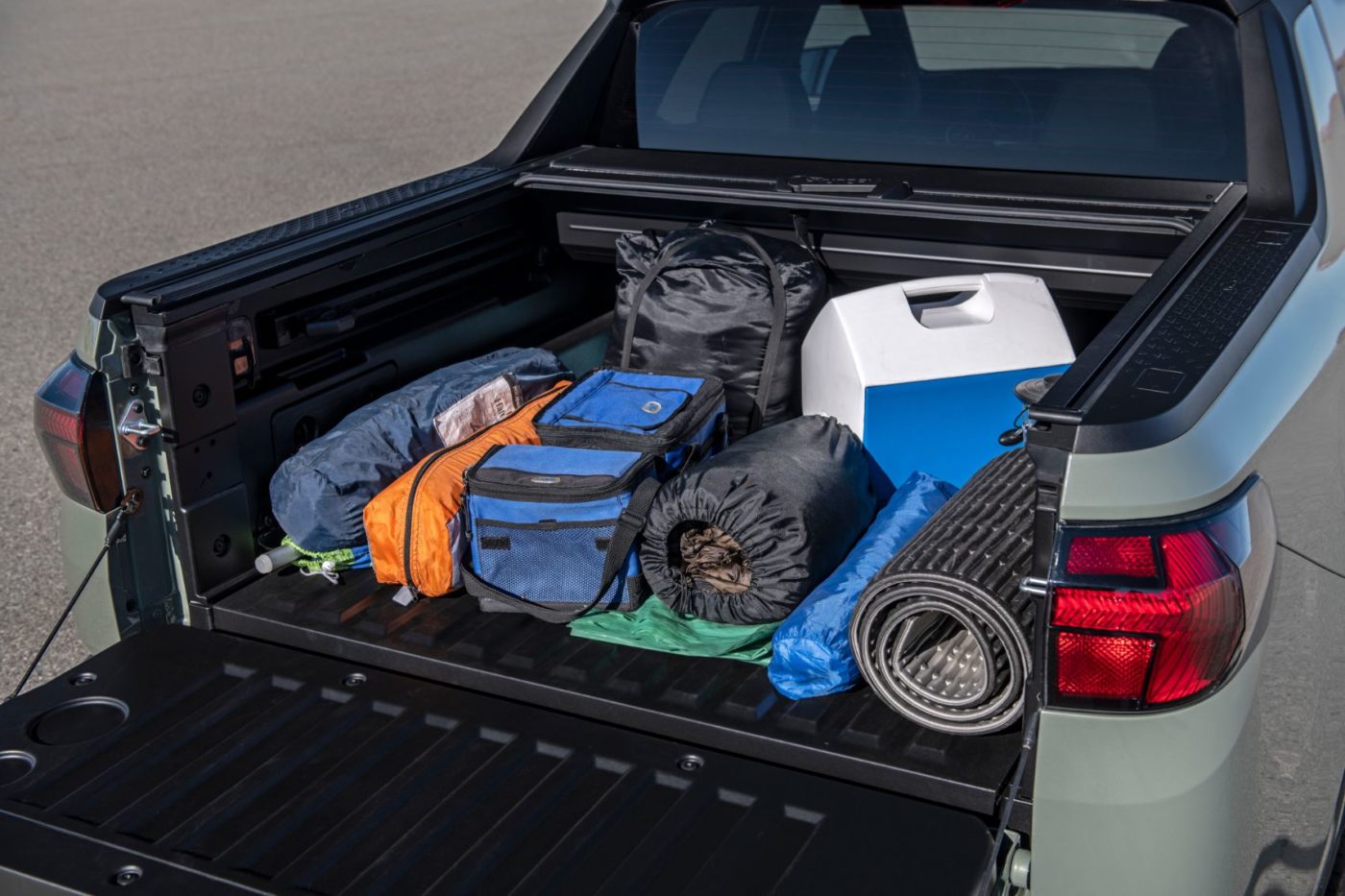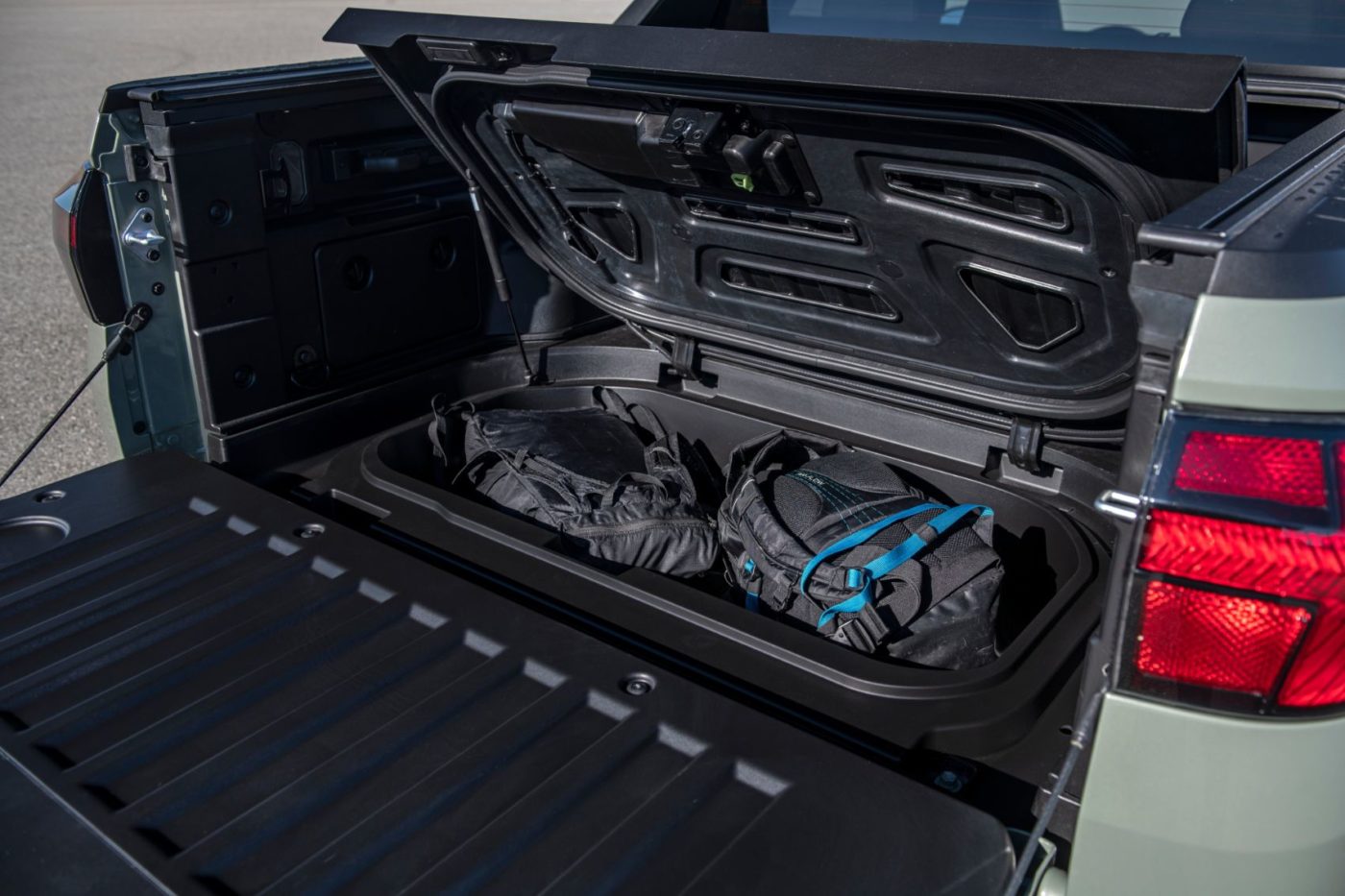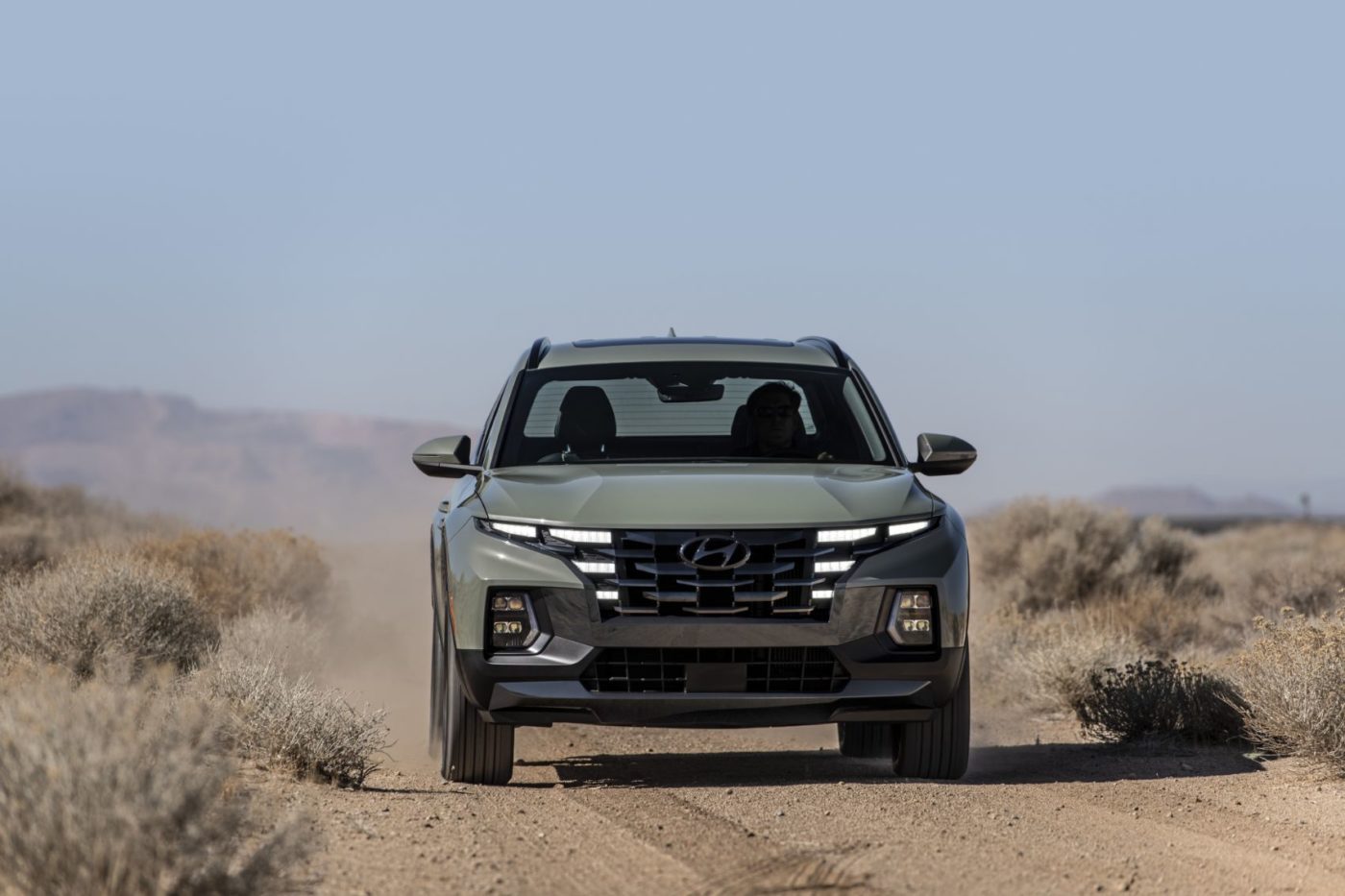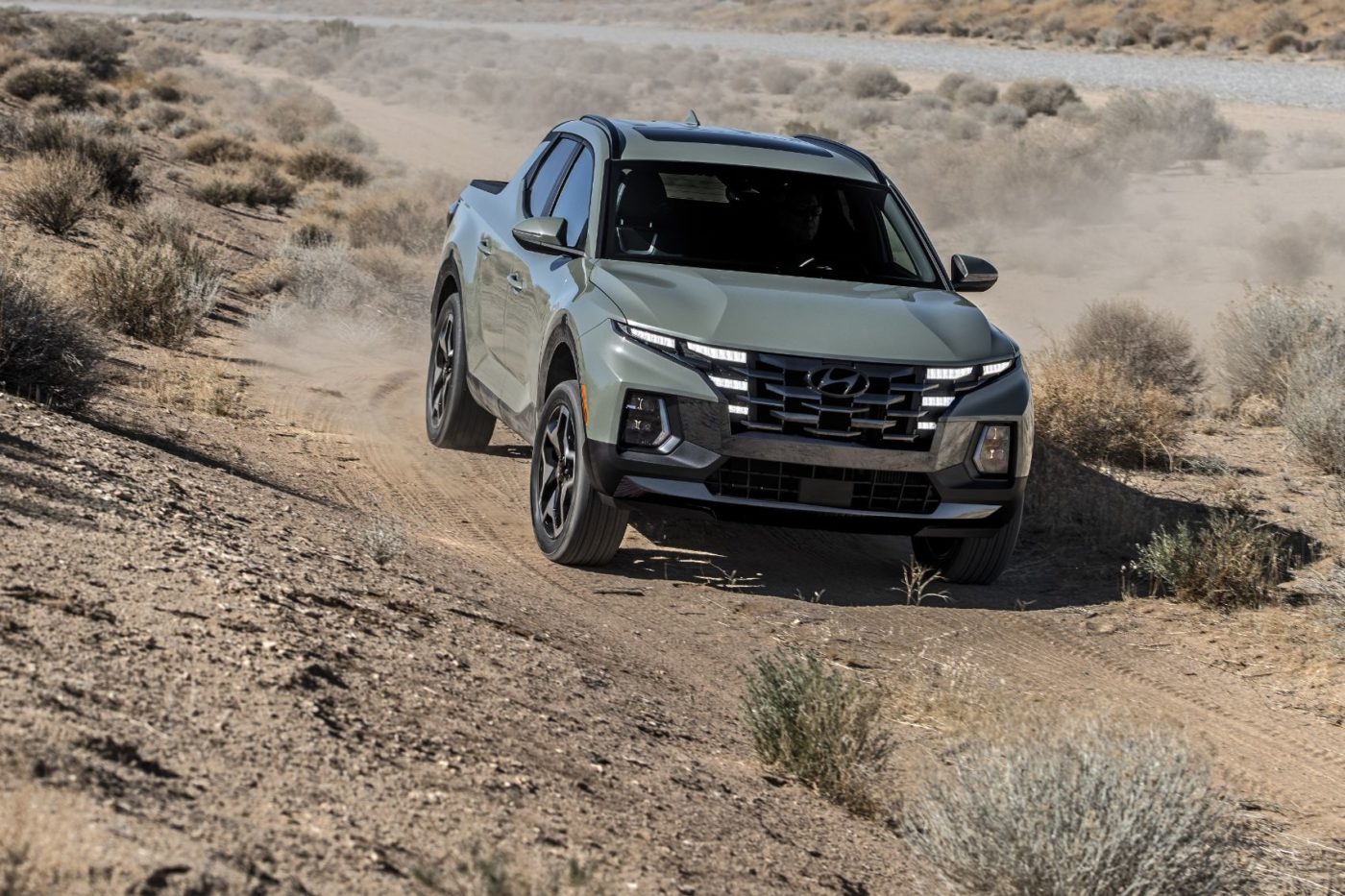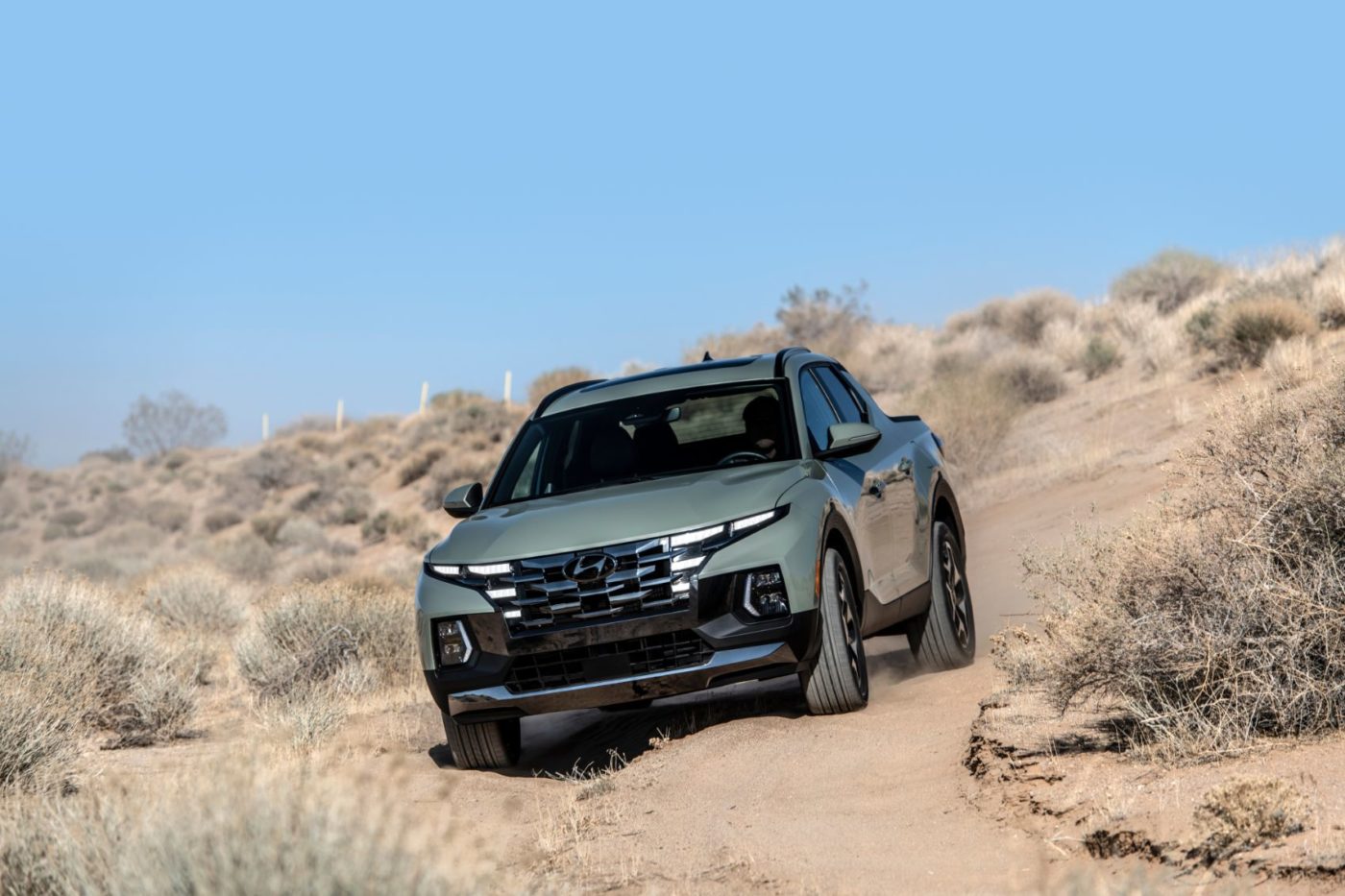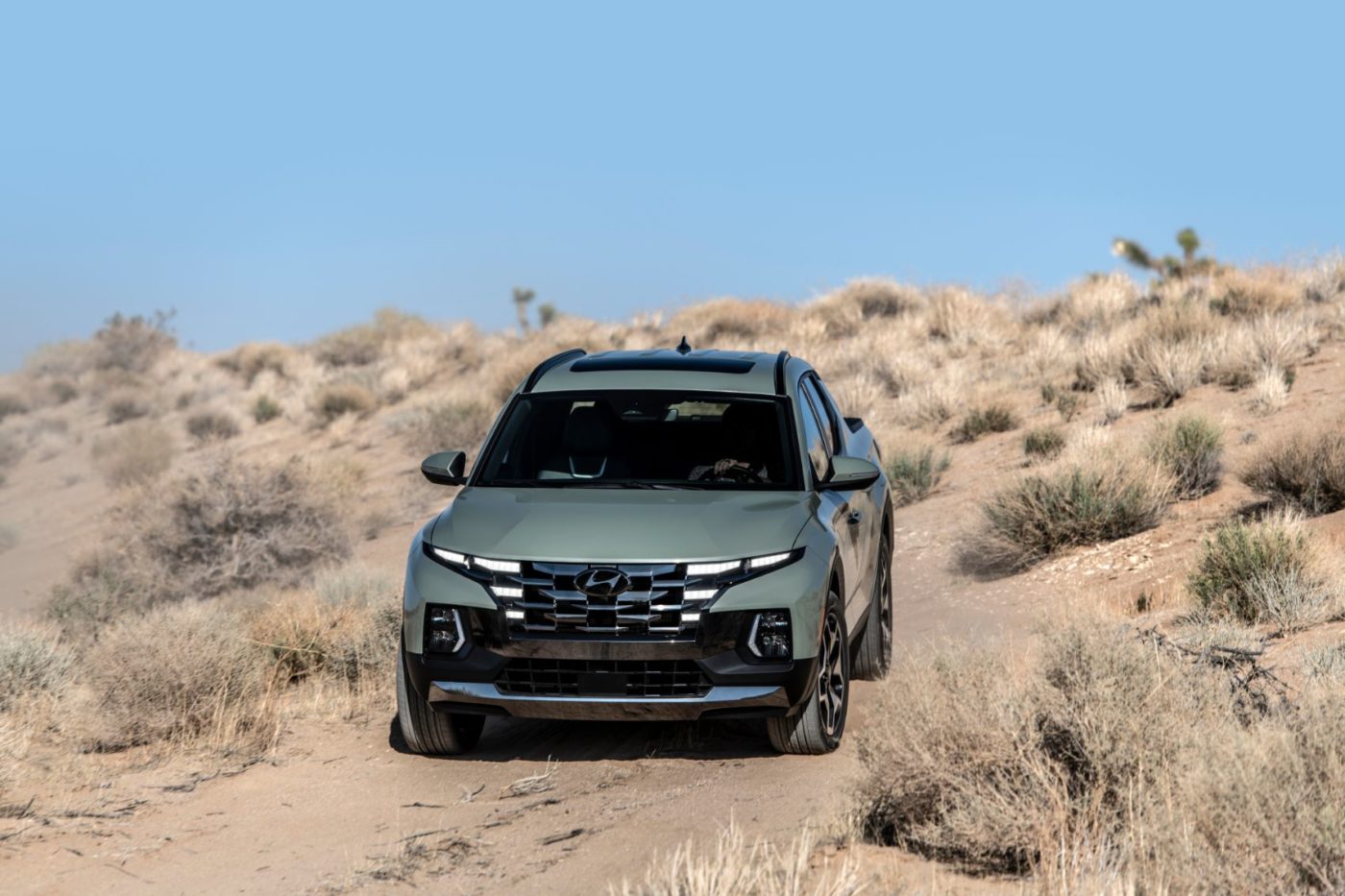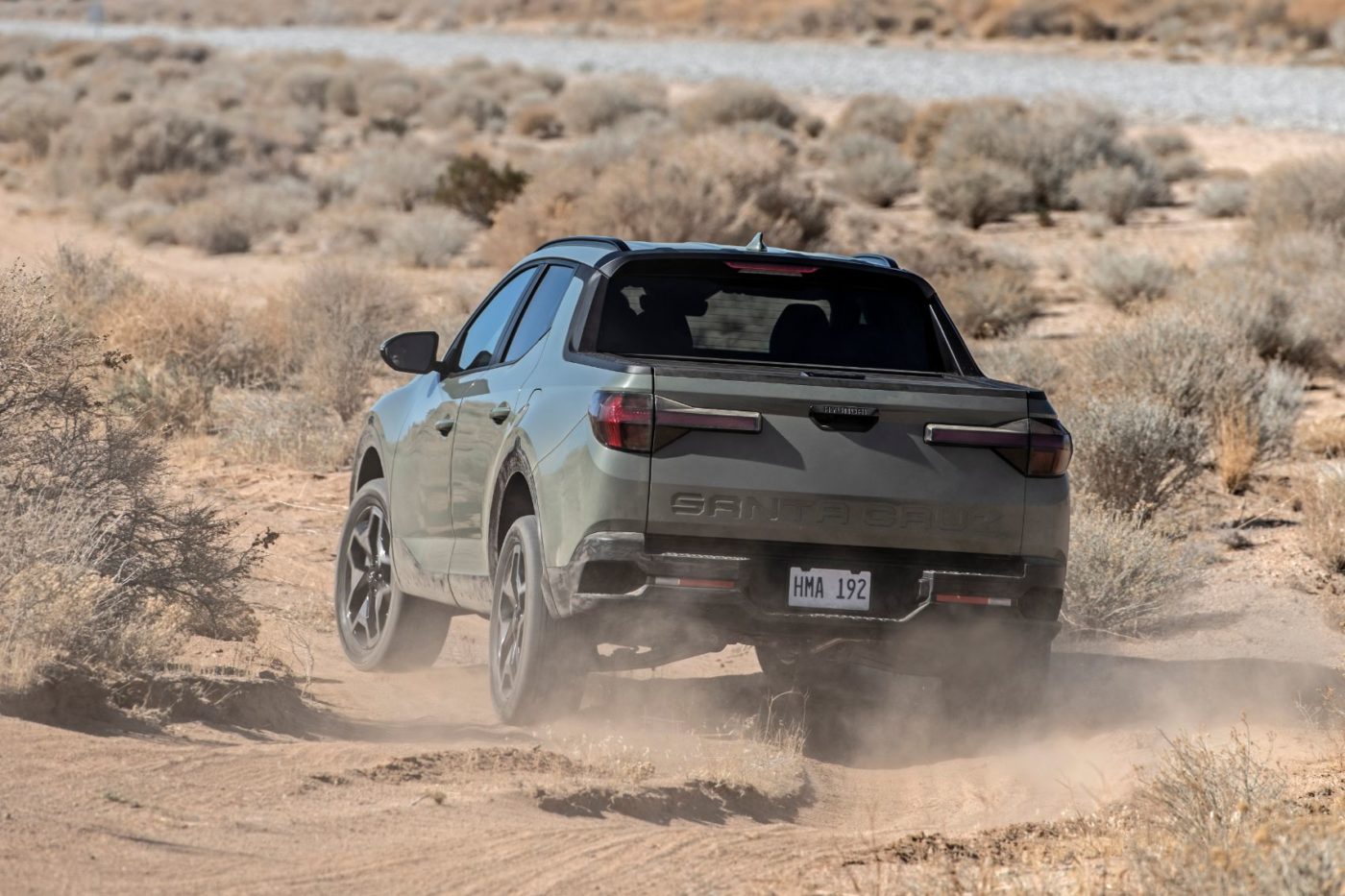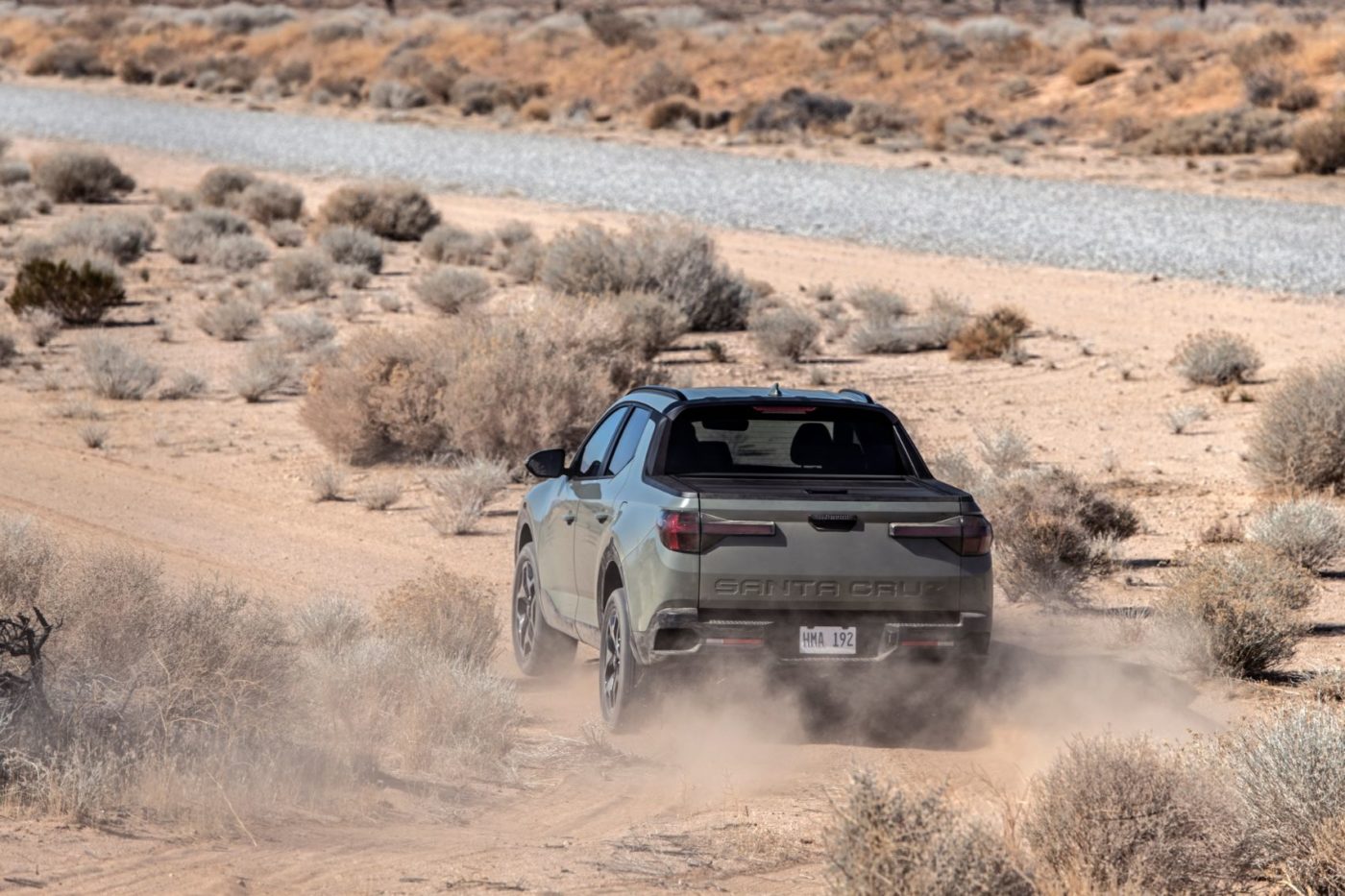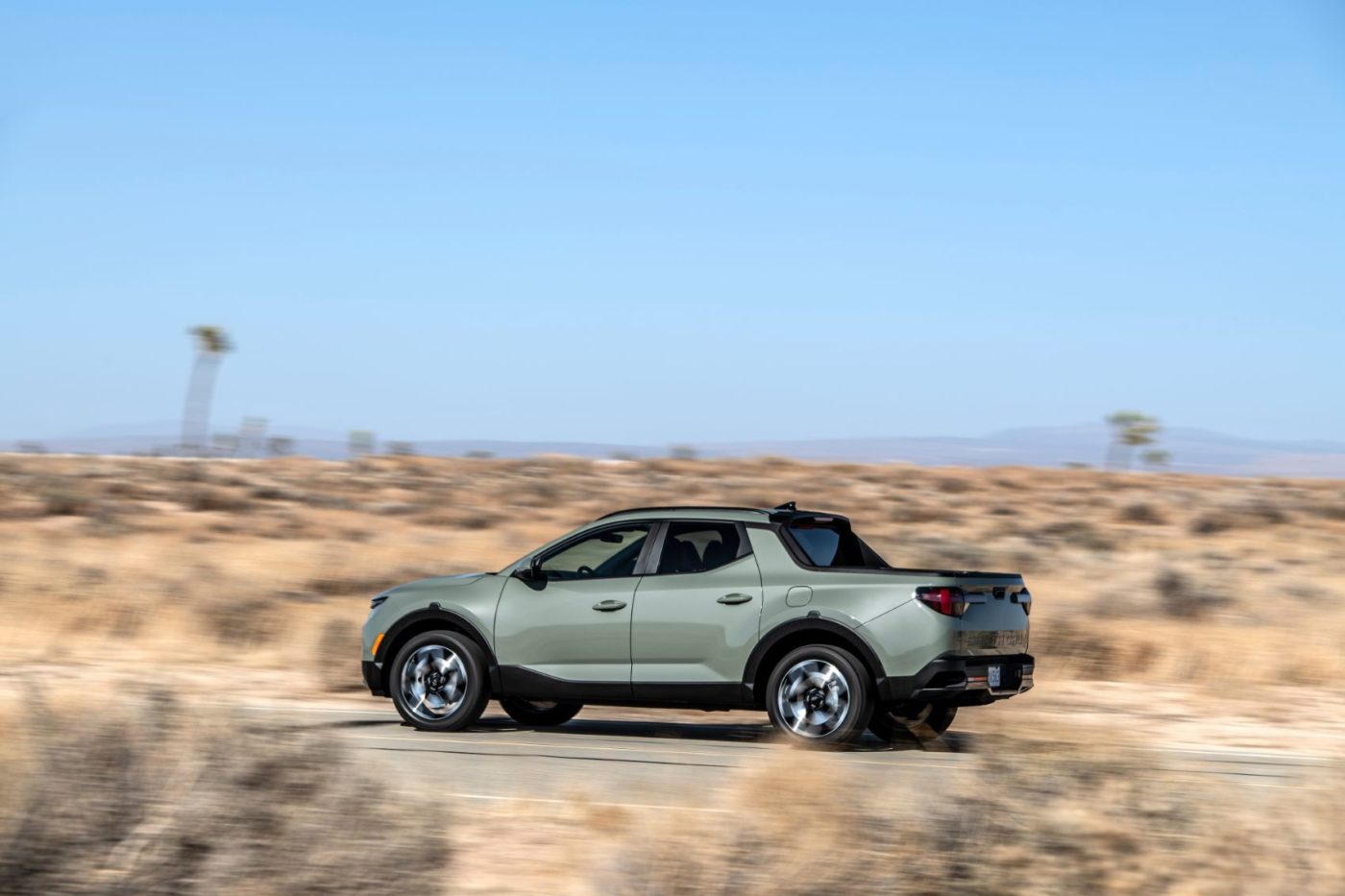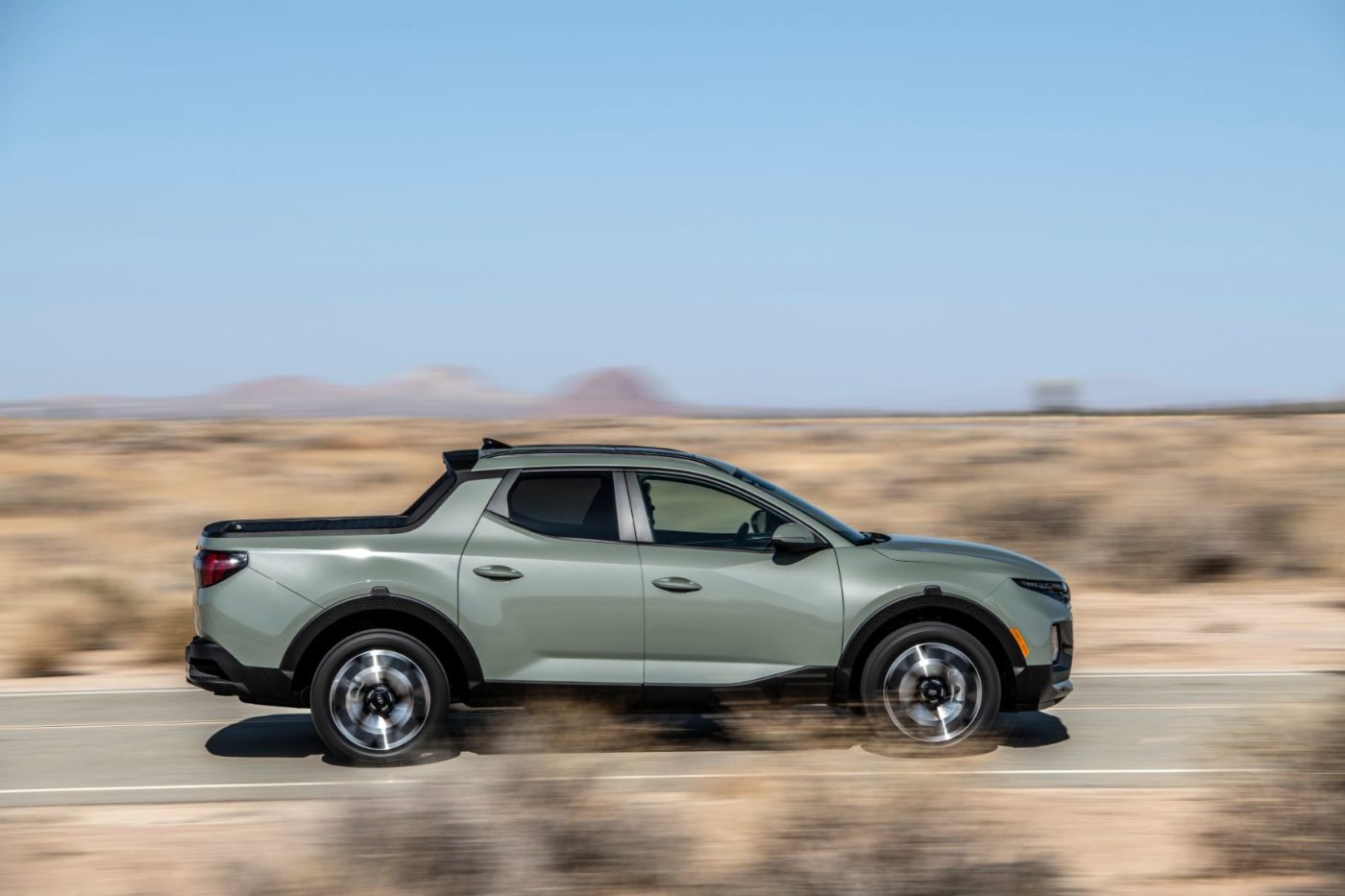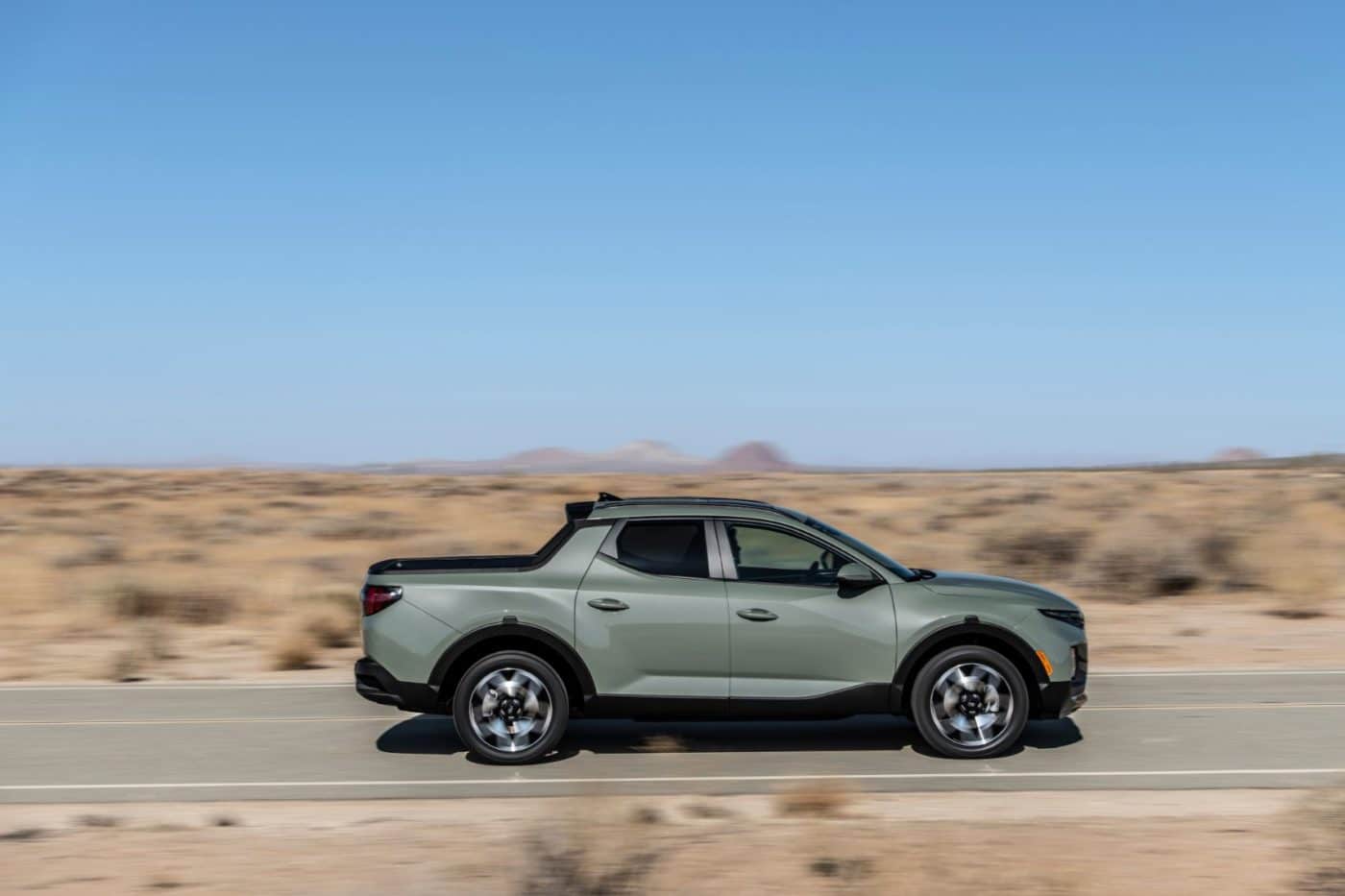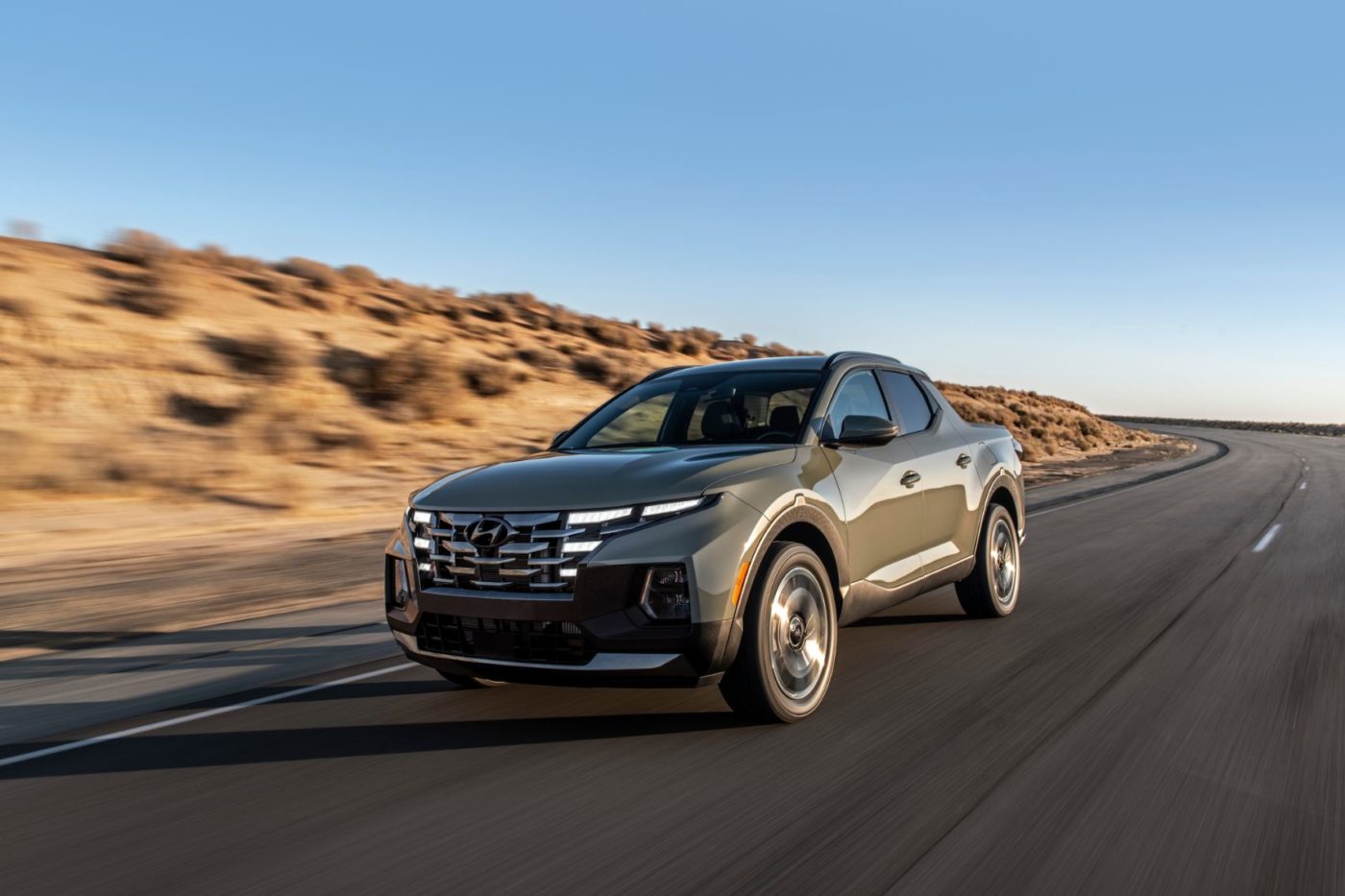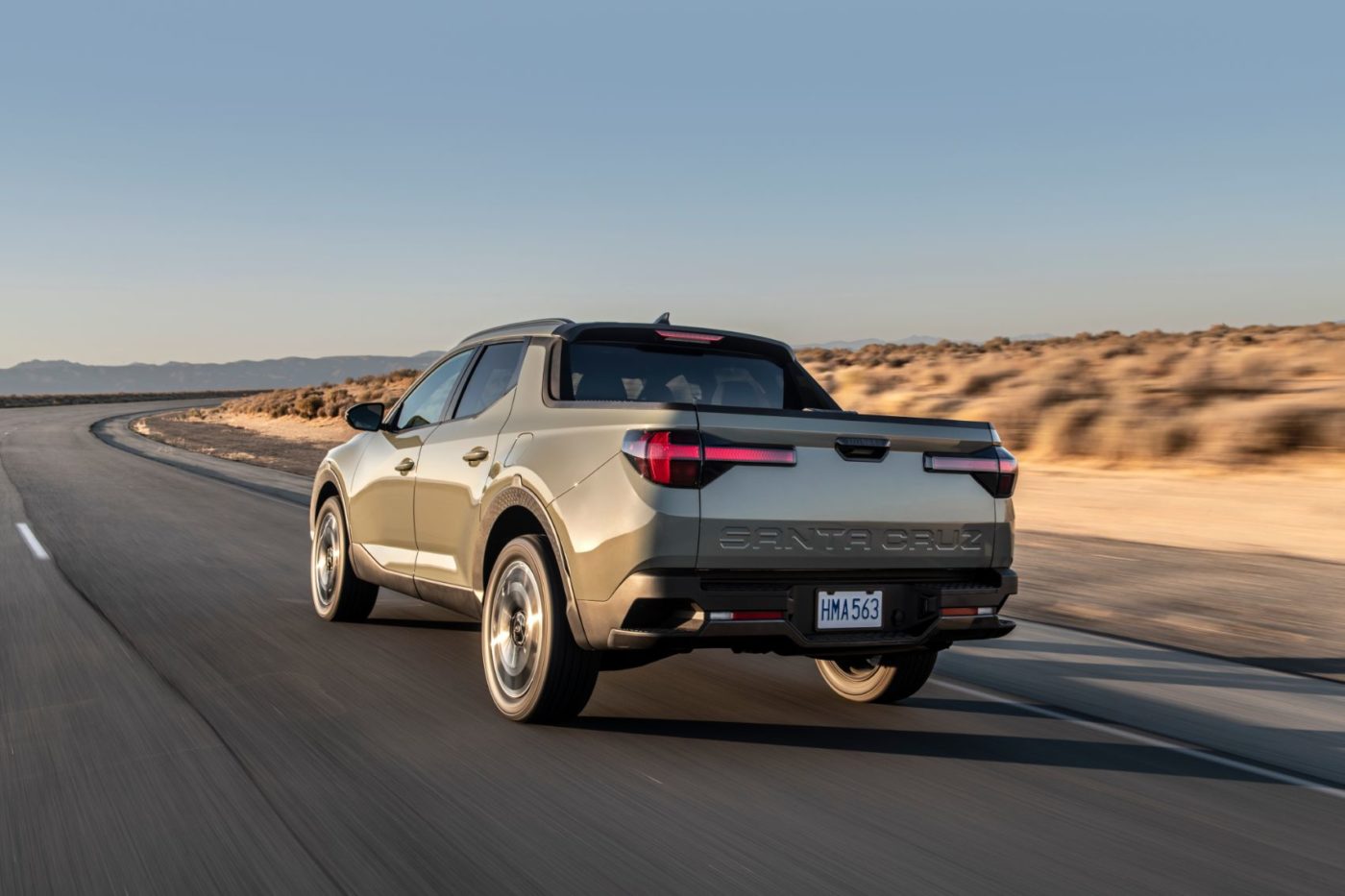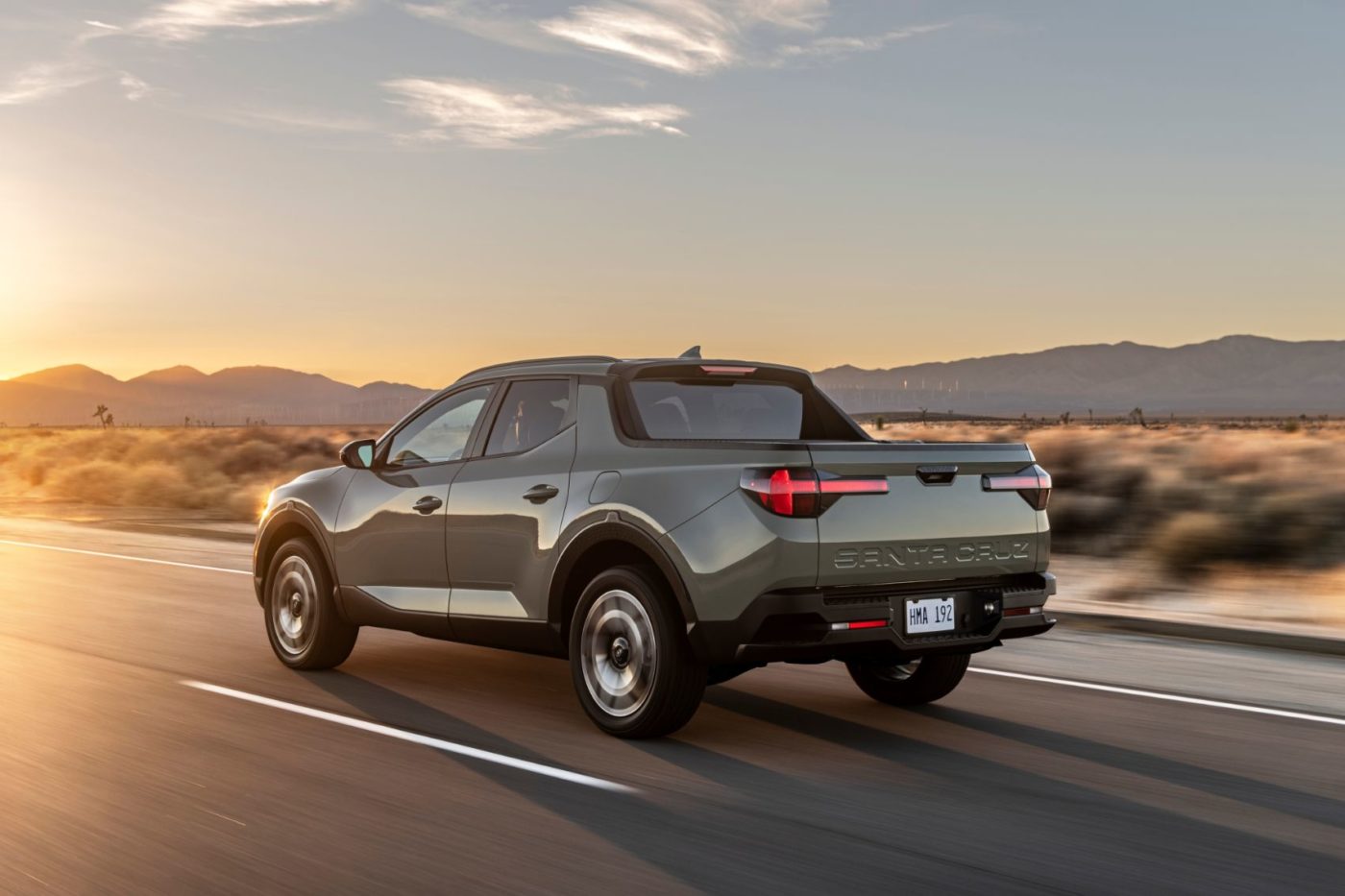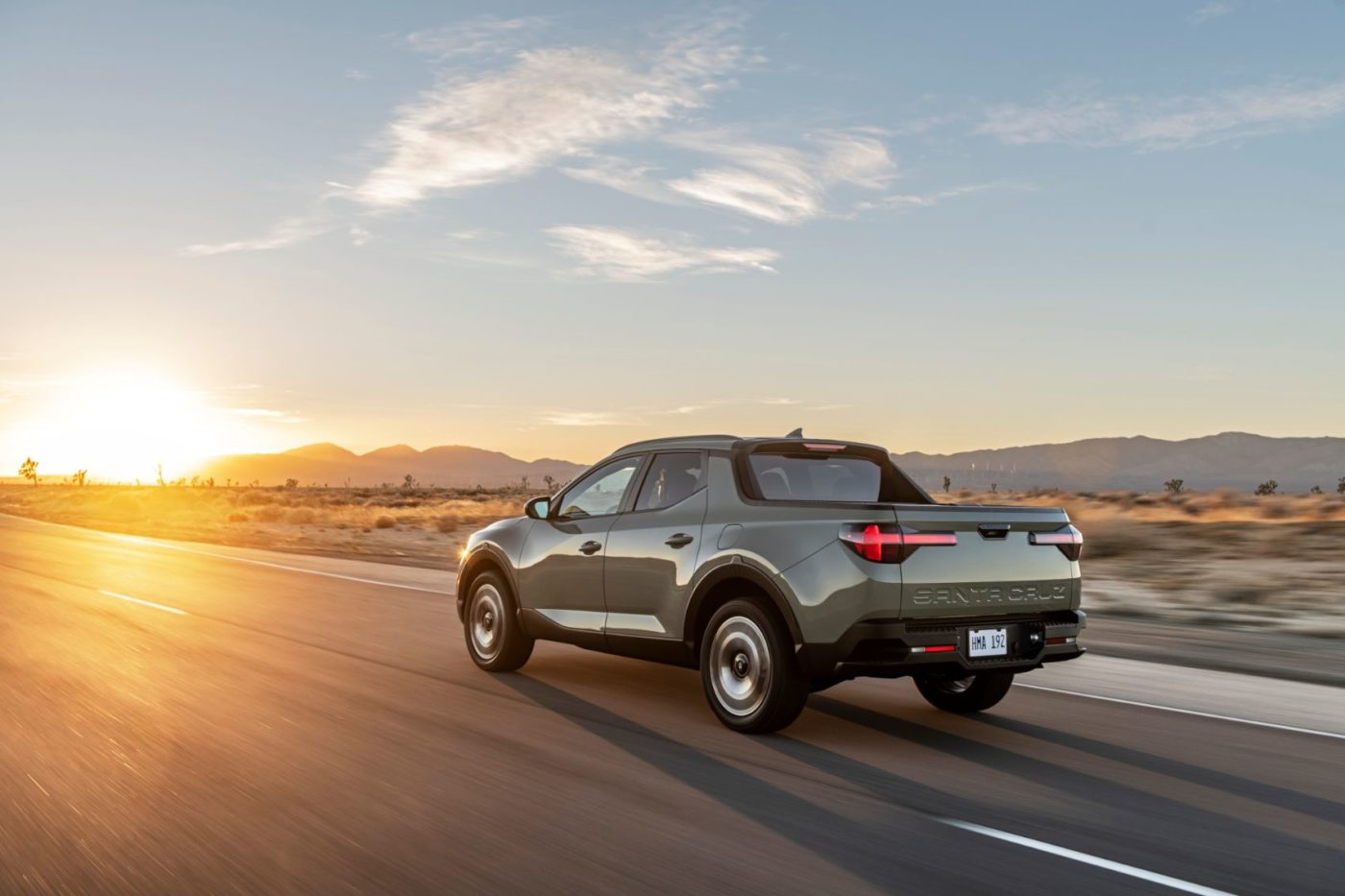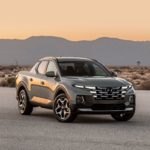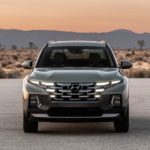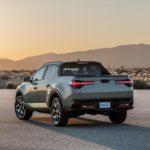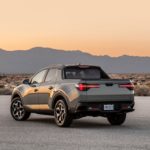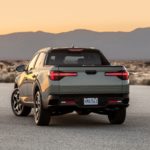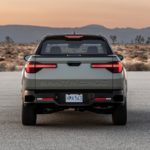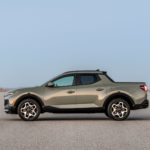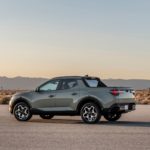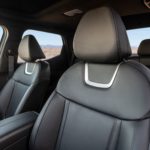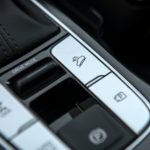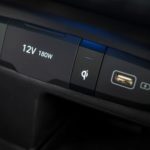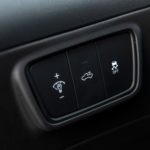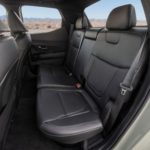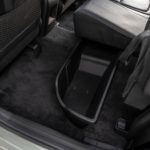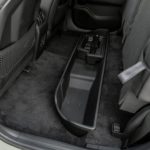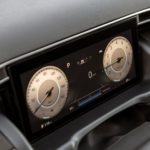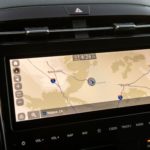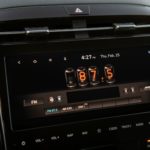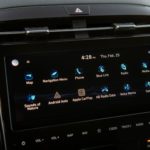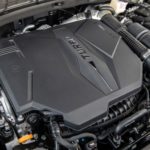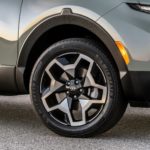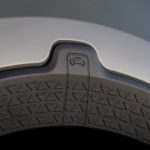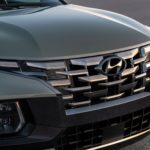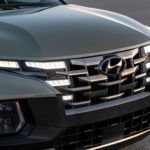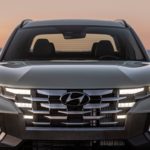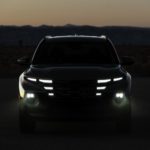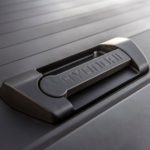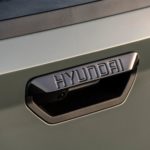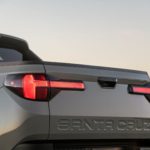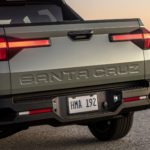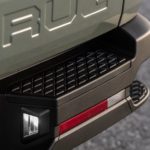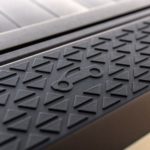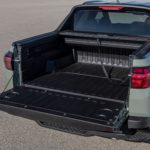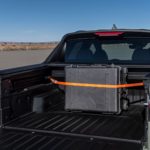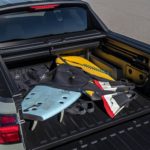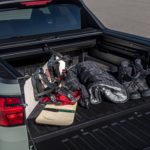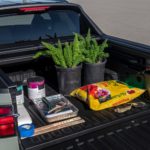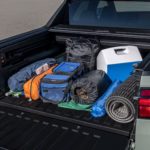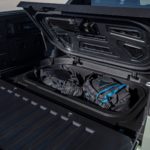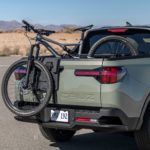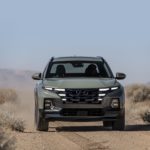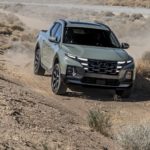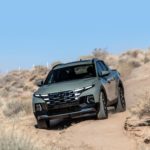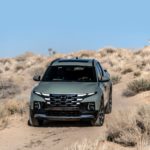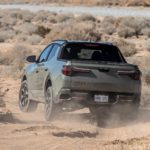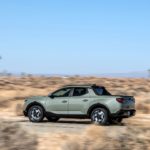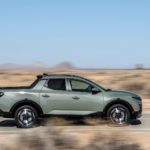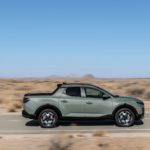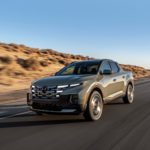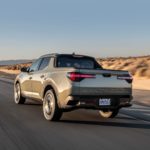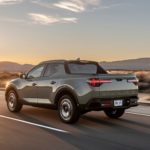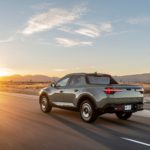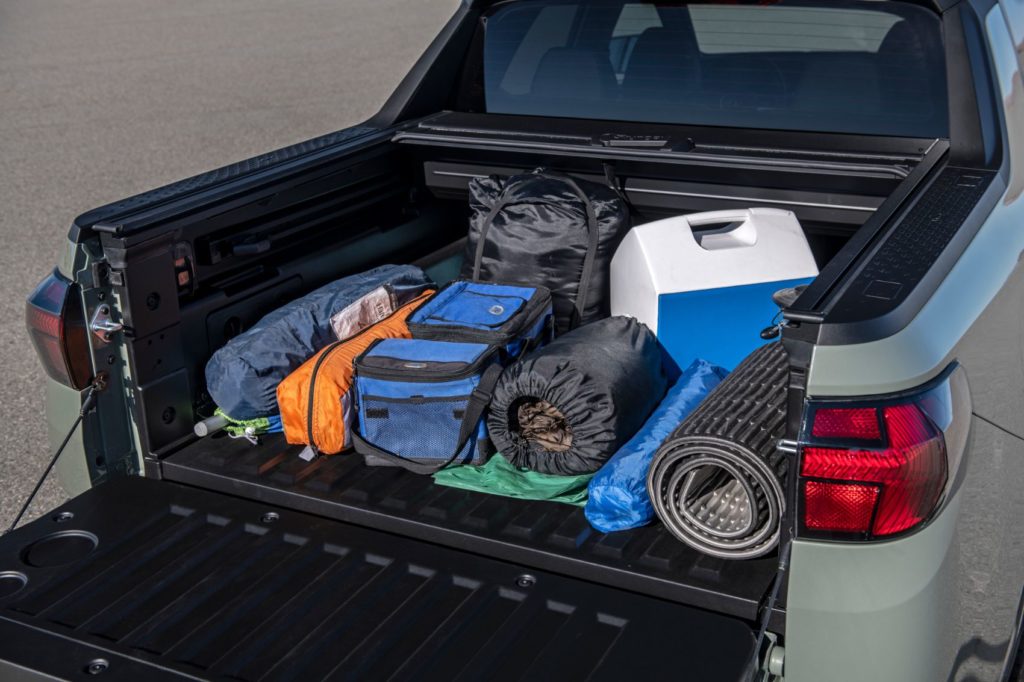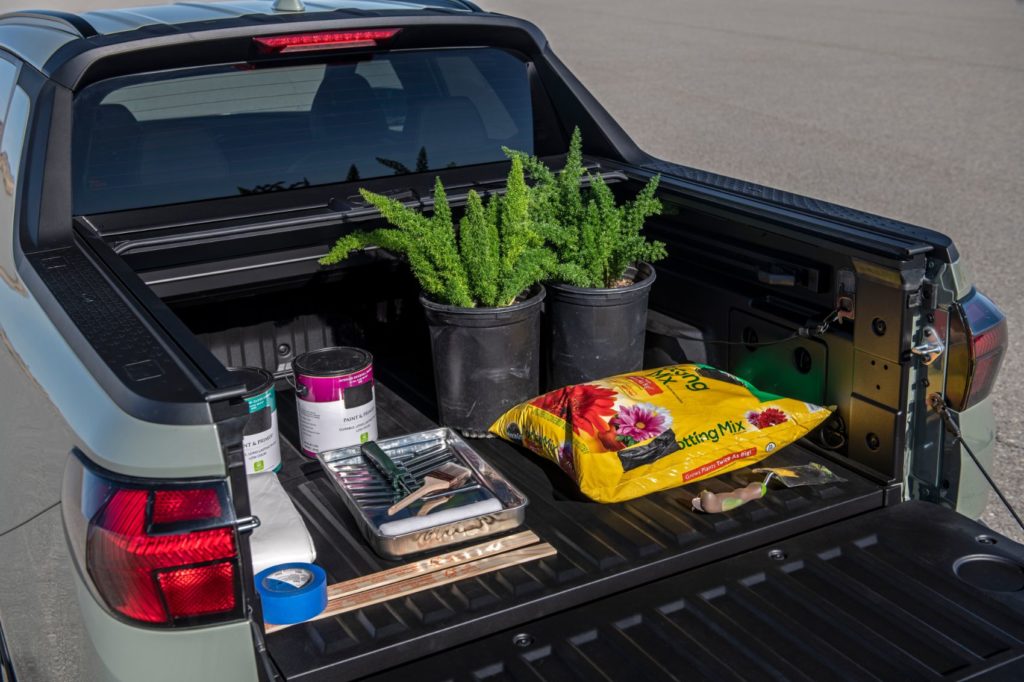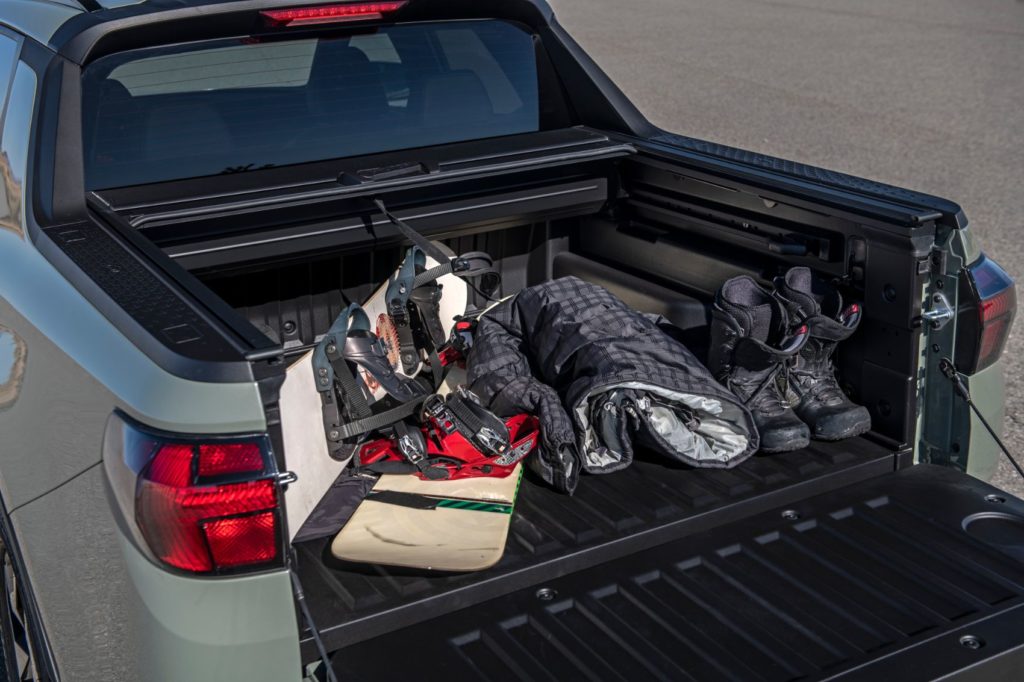The 2022 Hyundai Santa Cruz is a long time coming. First seen as the Santa Cruz Concept at the 2015 Detroit Auto Show, Hyundai took its sweet time in bringing this neat concept to life. If the lowish ride height is a telltale sign, the new Santa Cruz is not a truck per se. Hyundai refers to it as a Sport Adventure Vehicle or SAV, but we like to call it a crossover pickup in the same mold as Honda’s Ridgeline.
“Santa Cruz, with its bold styling, breaks open an all-new segment territory, both for Hyundai and the industry as a whole,” said Jose Munoz, president and CEO, Hyundai Motor North America. “Our customers will wonder just how they managed before owning one.”
2022 Hyundai Santa Cruz: Pickup or Crossover?
Riding on the unibody architecture of Hyundai’s fourth-generation Tucson crossover, the Santa Cruz has a small four-foot, twin-level bed instead of a sloping rear windscreen. Hyundai claims the Santa Cruz’s bed measures 48.4 inches long in the upper section and 52.1 inches in the lower section.
So yeah, it’s a pickup, alright, but it’s not the type of truck for carrying lumber, construction supplies, and heavy-duty tools if you catch our drift. Despite this, the bed has a payload of up to 660 lbs., enough to carry bicycles, small motorcycles, and loads of camping gear. But since the bed is around four feet wide, it’s big enough to carry sheets of plywood with the tailgate adjusted in its half-open position.
However, the 2022 Santa Cruz has a crew cab body style with four doors and seating for up to five adults, albeit in a pinch. So yes, the interior is similar to a crossover offering user-friendly space and modern accouterments.
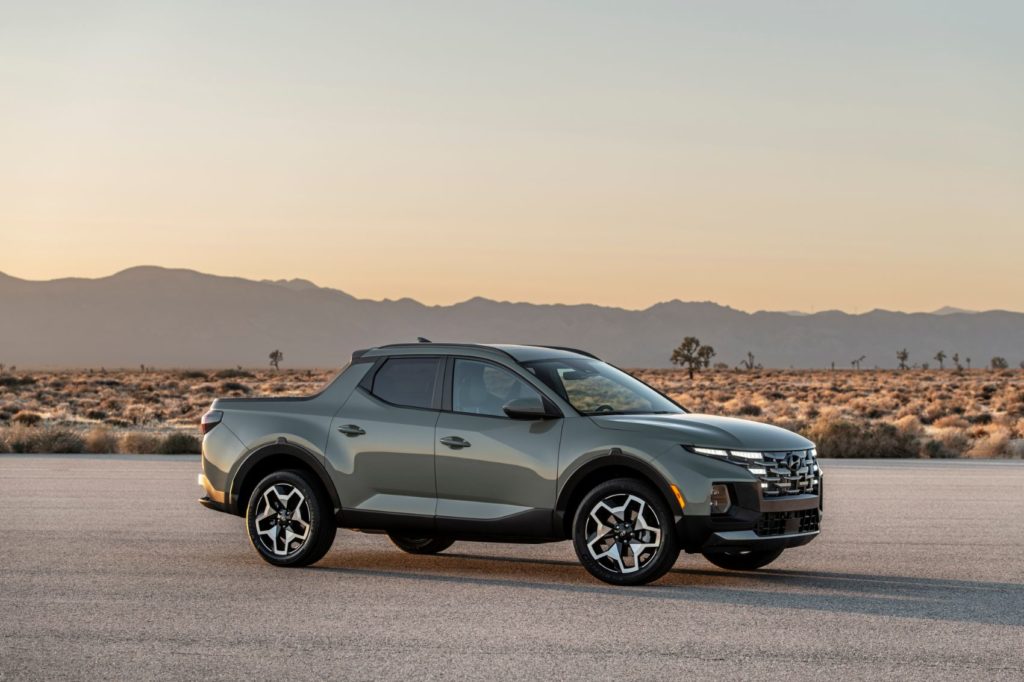
Cargo & Storage Capacity
Believe us when we say it’s not the rugged looks that enamored us most about the 2022 Hyundai Santa Cruz. It has a lot to do with the bevy of practical features, something buyers will surely appreciate in an adventure-ready vehicle.
The composite bed may be short, but Hyundai managed to install a nifty storage bin under the box, complete with a cover and hydraulic lift supports. The generous storage box has a built-in drain plug, perfect for storing wet clothes, frozen meat for your next barbecue, or pounds of ice and a six-pack or two of your favorite brewsky while camping. It also has a set of cubby holes on the sides of the bed.
What’s more, the bed has a standard retracting hard tonneau cover, strong enough to support up to 220 lbs. of weight when fully closed. There are steps on each side of the rear bumper, too, so you can easily see or lift out items from the bed without opening the tailgate. It also has standard LED lighting like a regular trunk.
With regard to the lockable tailgate, you can adjust or remove it without using tools. It also has a soft open and close feature, and you can drop the tailgate open by pressing a button on the key fob.
Exterior Styling
From the front, the 2022 Hyundai Santa Cruz has similar styling cues as the Tucson. It has a bold grille with hidden lighting elements, a bulbous hood, and swollen fenders. We particularly favor the rear T-shape taillights and the bold SANTA CRUZ script on the lower part of the tailgate. The Hyundai Santa Cruz is fourteen inches shorter than a Honda Ridgeline, making it easier to maneuver and park around town.
We may be nitpicking here, but we’re slightly concerned about rear passenger space. Anybody below six feet tall will be fine, but longer-legged folks may need to look elsewhere. As a consolation, lifting the back seats reveals a cargo bin for added interior storage.
Modern Amenities & Safety Features
Inside, the Santa Cruz has modern amenities that belie the exterior’s rugged, go-anywhere design. The dashboard orientation and cockpit design are again similar to the Tucson. It has a standard eight-inch touchscreen infotainment system (a larger 10-inch touchscreen is available) and a digital instrument cluster for the driver. Apple CarPlay and Android Auto are standard, but only the bigger screen gets wireless smartphone connectivity.
The all-new Hyundai Santa Cruz has a plethora of advanced safety tech, including lane-keeping assist, a lane centering function, automatic emergency braking, automatic high beams, and forward collision alert with pedestrian and cyclist detection. Other features like blind-spot collision avoidance, a 360-degree camera, and adaptive cruise control are optional.
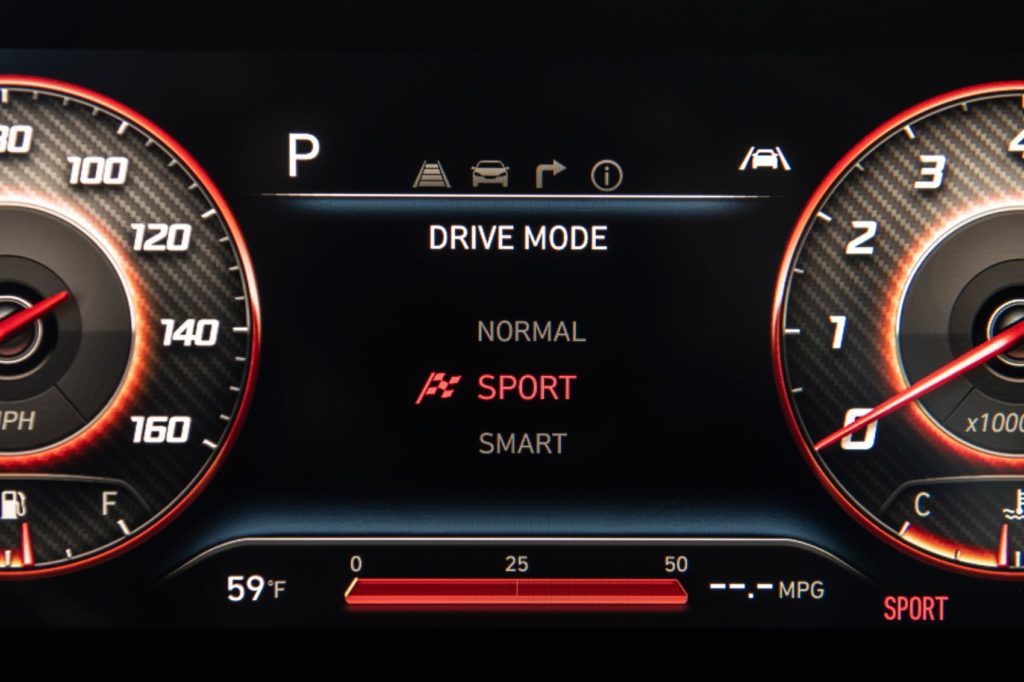
2022 Hyundai Santa Cruz: Engine & Powertrain
The 2022 Hyundai Santa Cruz has a standard 2.5-liter four-cylinder engine with 191 horsepower and 181 lb-ft. of torque. Front-wheel drive is standard, while Hyundai’s HTRAC AWD system is available. Higher trim models receive a turbocharged 2.5-liter four-banger with 281 horsepower and 311 lb-ft. of torque. The base engine has an eight-speed automatic transmission, while the turbo engine gets an eight-speed dual-clutch automatic gearbox.
While the Santa Cruz has crossover bones instead of a work truck frame, it still has a decent tow rating. The standard 2.5-liter four-cylinder can tow up to 3,500 lbs. while the turbo engine can tow up to 5,000 lbs. when properly equipped. That latter figure is enough to match the tow rating of the current Honda Ridgeline.
Can The Santa Cruz Go Off-Road?
Yes, it can. But the Hyundai Santa Cruz is no mountain goat. It’s a soft-roader for all intents and purposes. With standard Michelin Primacy all-season tires on either 18-inch or 20-inch wheels and a multilink rear suspension, the Hyundai Santa Cruz is more at home on tarmac than dirt roads. Additionally, Santa Cruz has self-leveling rear shock absorbers to keep the body even with a whole load of gear in the bed.
However, the optional all-wheel drive system gives it more gravitas when navigating the roads less traveled. The Santa Cruz has 8.6 inches of ground clearance, meaning you won’t be crossing rivers or climbing boulders, but a snowy day or dusty trail should pose little problem.
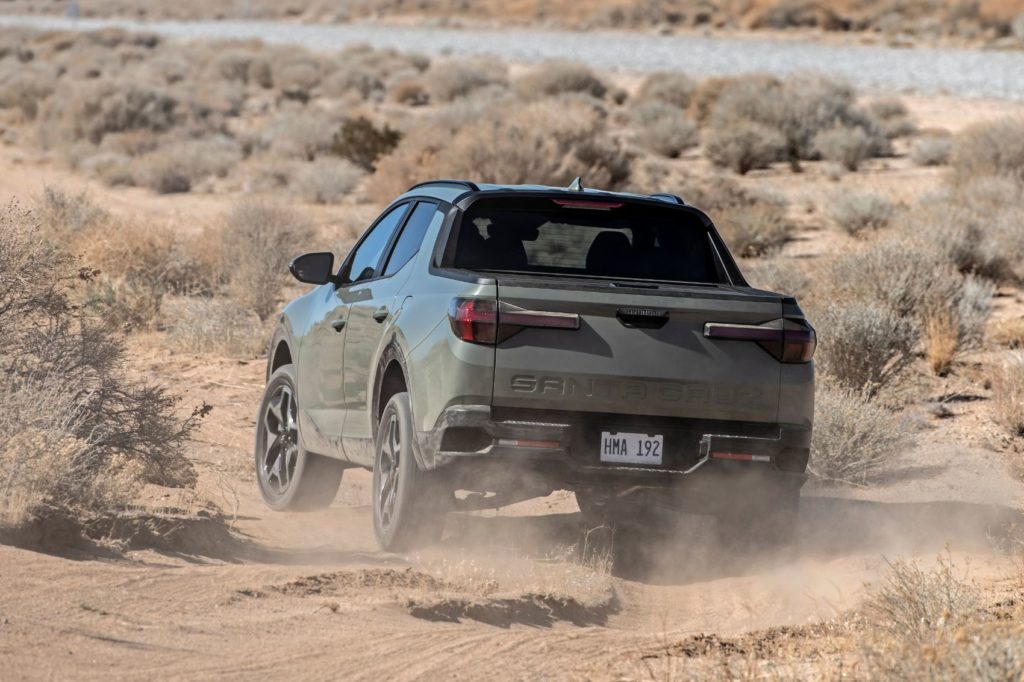
2022 Hyundai Santa Cruz Warranty
Like all Hyundais, the 2022 Santa Cruz comes with a 10-year/100,000-mile powertrain warranty, a five-year/60,000-mile new vehicle limited warranty, and a seven-year anti-perforation warranty. The new Santa Cruz also comes with a three-year/36,000-mile complimentary maintenance program, including oil changes and tire rotations. If you have questions about Hyundai’s extended warranty coverage, this comprehensive guide has all the answers.
2022 Hyundai Santa Cruz: Pricing & Availability
Production for the 2022 Hyundai Santa Cruz begins this June at Hyundai’s manufacturing plant in Montgomery, Alabama. The first deliveries are arriving at dealerships this summer. Pricing and other details remain forthcoming, but we reckon base prices to hover in the $24,000 range.
When it comes to finding the best price, we trust Rydeshopper, a free and neutral third-party search site* that lets you see dealer inventory in your area. Rydeshopper will help you compare prices and see which dealers are offering the best discounts and incentives.
Alvin Reyes is an Automoblog feature columnist and an expert in sports and performance cars. He studied civil aviation, aeronautics, and accountancy in his younger years and is still very much smitten to his former Lancer GSR and Galant SS. He also likes fried chicken, music, and herbal medicine.
Photos & Source: Hyundai Motor America.
*Although always free to you, Automoblog and its partners may be compensated when you visit this link.

